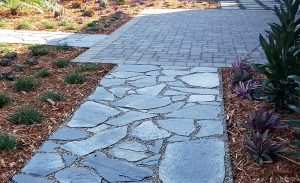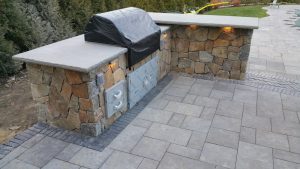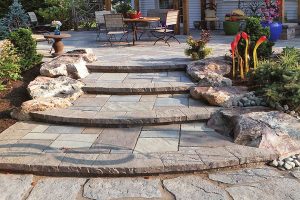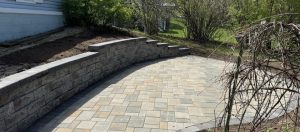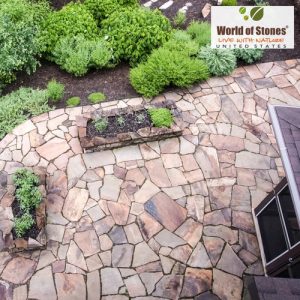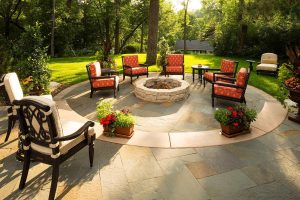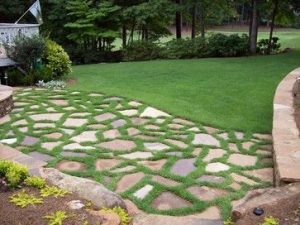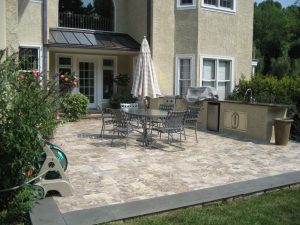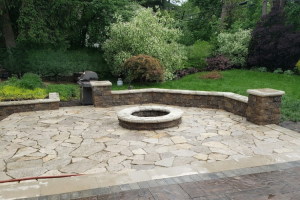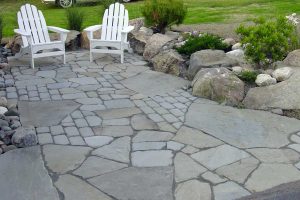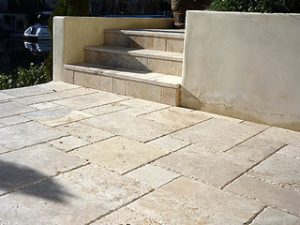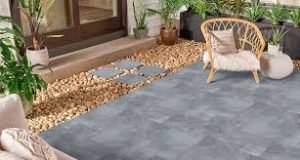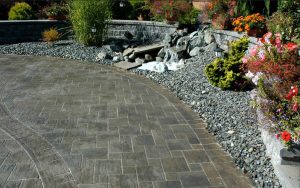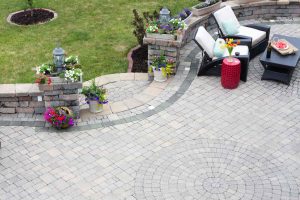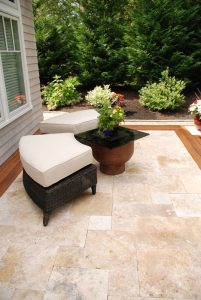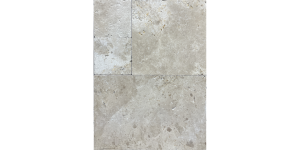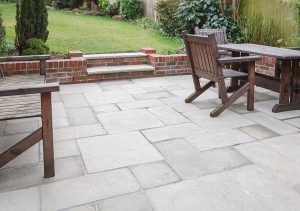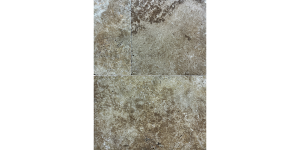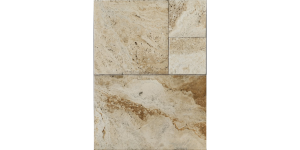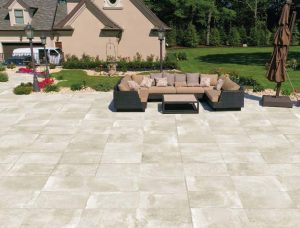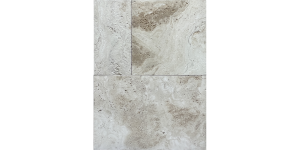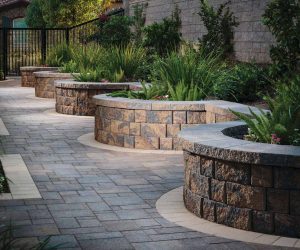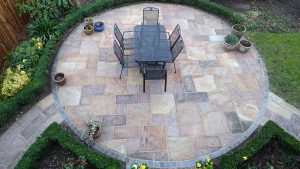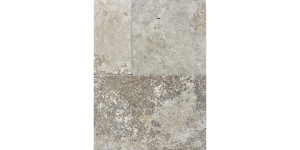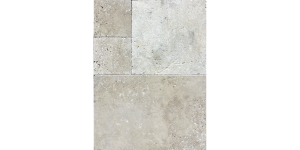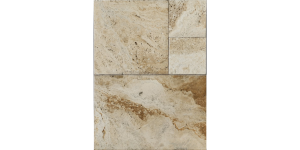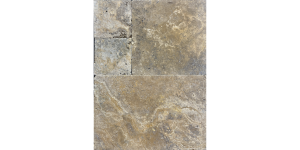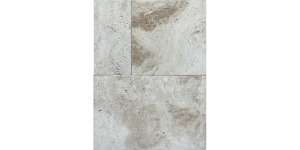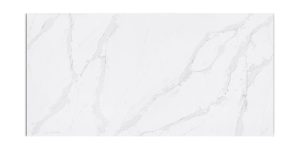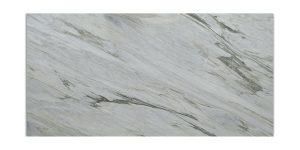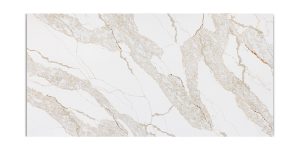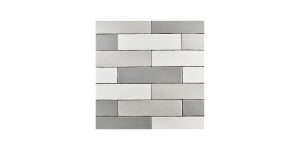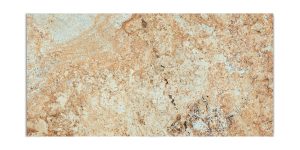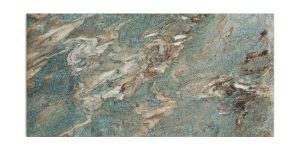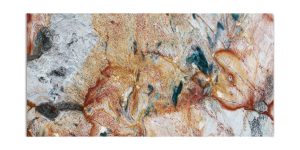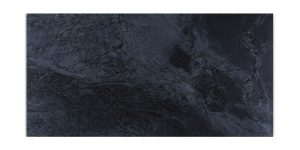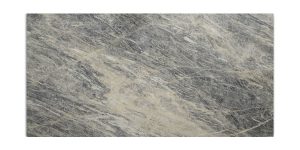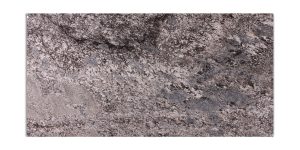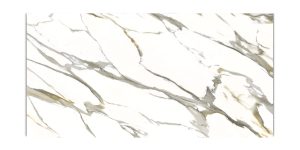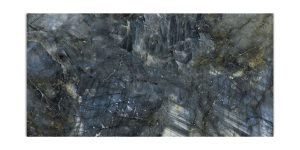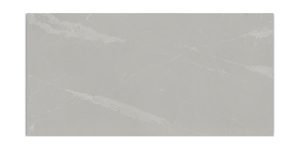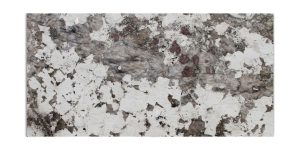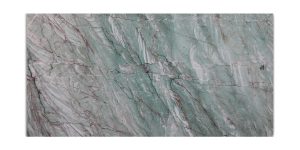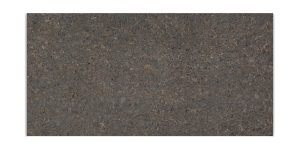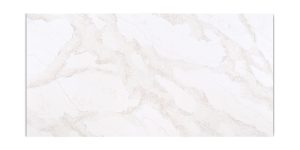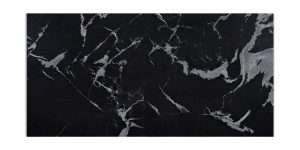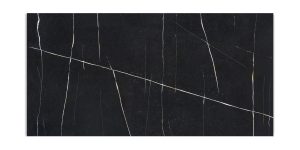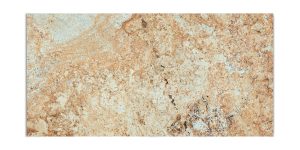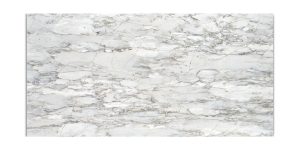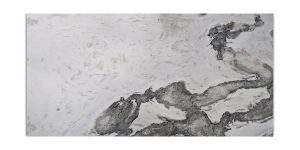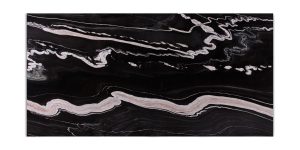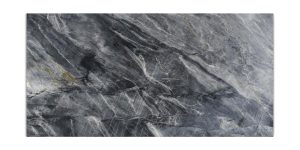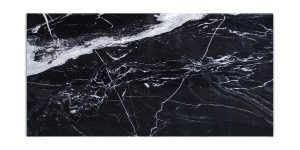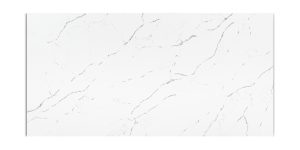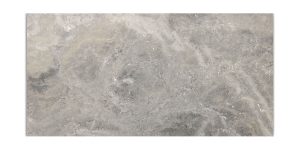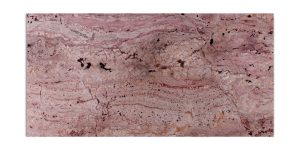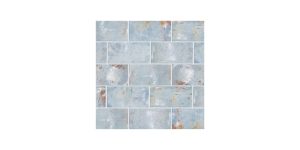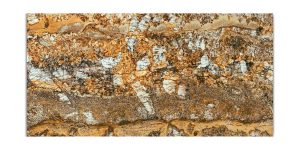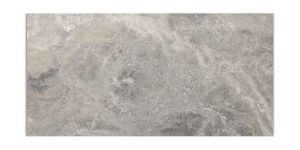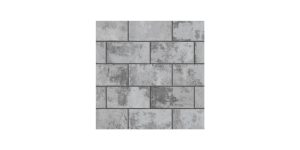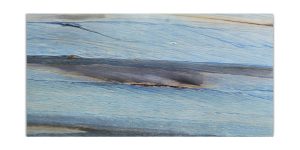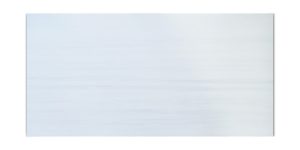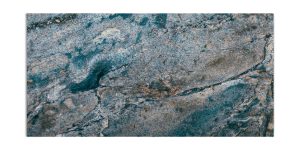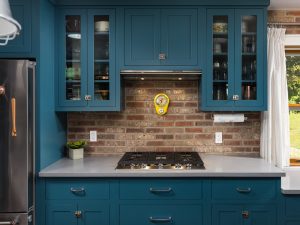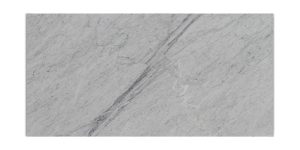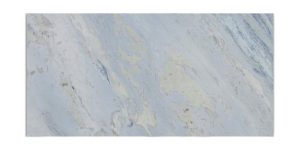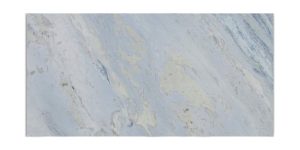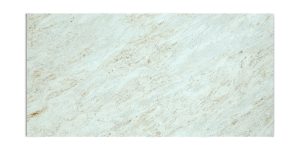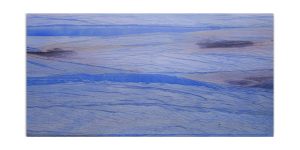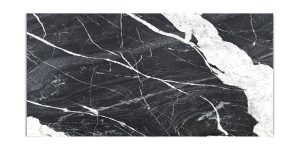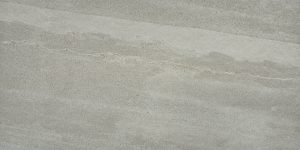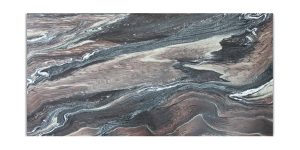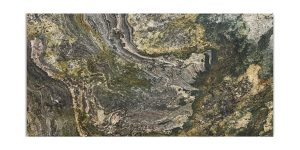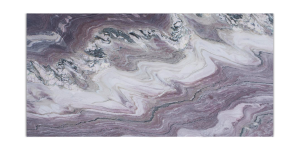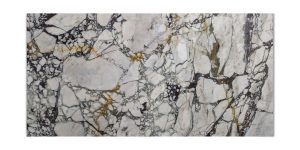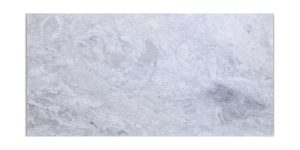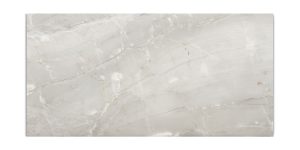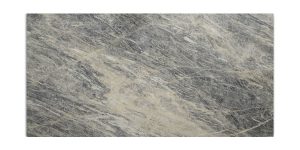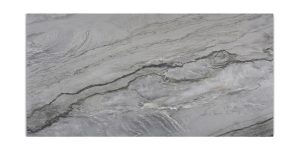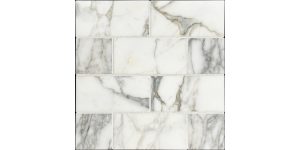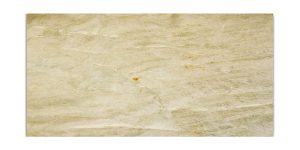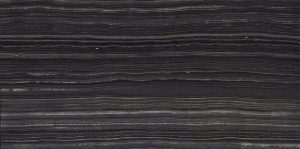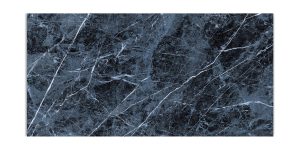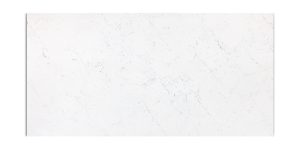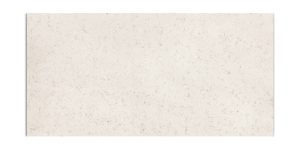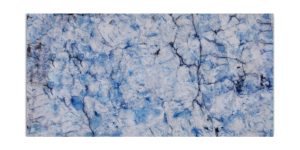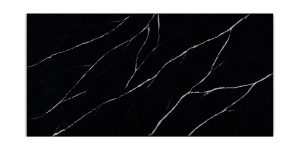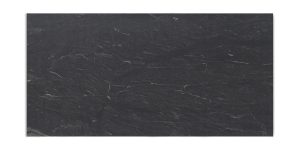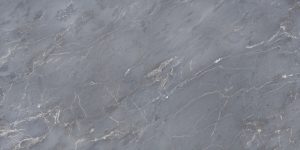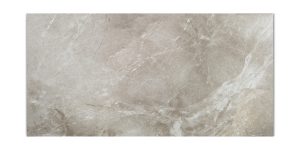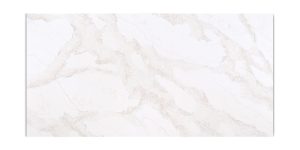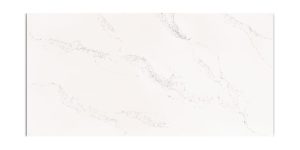Can bleach ruin pavers?
Bleach is a popular cleaner for many outdoor surfaces—but before you use it on natural stone pavers, stop and ask yourself: Will bleach ruin them? When stains, moss, or mold show up on your patio or walkway, it’s easy to grab the bleach. But that quick fix might do more harm than good. However, using bleach on natural stone pavers can have unintended consequences.
Bleach and Natural Stone Don’t Always Mix
Natural stone is a durable material, but it’s also porous and often sensitive to harsh chemicals. Bleach, especially when used undiluted or applied too frequently, can:
-
Discolor the stone: Bleach can strip away the natural color and character of the stone, leaving behind blotchy or faded patches.
-
Erode the surface: Over time, bleach can eat away at the surface layer, especially on softer stones like limestone or sandstone.
-
Damage the surrounding area: Runoff from bleach can harm nearby plants, soil, and even corrode adjacent materials like metal fixtures.
Safer Ways to Clean Natural Stone Pavers
If your goal is to clean your pavers without ruining them, here are a few safer alternatives:
-
Mild soap and water: For general cleaning, a mix of warm water and pH-neutral dish soap is often all you need.
-
Stone-safe cleaners: Look for products specifically formulated for natural stone. These are designed to lift dirt and stains without damaging the material.
-
Pressure washing (with care): Gentle pressure washing can be effective for tougher grime, but it should be done carefully to avoid surface damage—especially with softer stone types.
When Bleach Might Be Used—With Caution
In certain cases—like killing mold or mildew—diluted bleach may be used, but only on dense, sealed stones like granite or basalt. If you do go this route:
-
Dilute properly: Mix 1 part bleach with at least 10 parts water.
-
Test in a small area: Always try it on a hidden spot first.
-
Rinse thoroughly: Don’t let bleach sit too long. Rinse well with clean water to remove any residue.
-
Avoid on unsealed or soft stones: Stones like travertine, slate, and sandstone are more susceptible to damage.
Final Thoughts – Can bleach ruin pavers?
Yes—bleach can ruin pavers, especially natural stone ones. While it might seem like a quick fix for stains or grime, the risks often outweigh the benefits. Your best bet is to use gentler, stone-safe solutions and clean your pavers regularly to prevent buildup in the first place.
If you’re ever unsure, talk to a stone professional. At [Your Company Name], we specialize in natural stone pavers and can help you choose the right cleaning methods to protect your investment for years to come.
Can you put a hot tub on pavers?
If you’re planning to add a hot tub to your outdoor space, you’re probably wondering: Can you put a hot tub on pavers? The short answer is yes—but with a few important considerations. As a company that specializes in natural stone pavers, we’re here to guide you through how to do it the right way to ensure safety, stability, and long-term durability.
Why Pavers Can Be a Great Base for a Hot Tub
Natural stone pavers are not only beautiful but also incredibly strong and durable. With proper preparation, they can absolutely serve as a reliable base for a hot tub. Many homeowners choose pavers for their visual appeal and how well they blend into landscape designs.
Here’s why pavers are a popular option:
-
Aesthetic Appeal: Natural stone offers a timeless, high-end look that complements luxury features like hot tubs.
-
Drainage: Paver systems allow water to drain between joints, which helps prevent pooling under the tub.
-
Customization: You can create a custom size and shape patio to perfectly match your hot tub area.
Important Considerations Before Installation
While pavers can support a hot tub, it’s crucial to properly prepare the foundation. Hot tubs can weigh several thousand pounds when filled with water and people, so your paver base must be properly reinforced.
1. Base Preparation
Start with a well-compacted base using crushed gravel or road base. This provides a stable and level surface that won’t shift over time. The base should be at least 4–6 inches thick and compacted in layers.
2. Level Surface
Your pavers must sit on a perfectly level surface. An uneven base can put stress on the hot tub shell and components, leading to costly damage over time.
3. Load-Bearing Capacity
Not all pavers are created equal. Natural stone pavers, especially denser materials like granite or bluestone, are better suited for the weight of a hot tub. We recommend using thicker, high-strength pavers for this application.
4. Edge Restraints
To keep your pavers from shifting under the tub’s weight, install edge restraints around the paver area. This helps maintain the integrity of the structure over time.
Alternative Option: Concrete Slab Under Pavers
For extra peace of mind, some homeowners choose to install a reinforced concrete slab beneath the pavers. This hybrid approach provides maximum strength while keeping the natural stone look on top. It’s especially recommended for larger hot tubs or installations on less compact soil.
Final Thoughts – Can you put a hot tub on pavers?
Yes, you can put a hot tub on pavers—but the key is proper preparation. A well-built paver base made with durable natural stone can easily handle the load of a hot tub while enhancing the beauty of your outdoor space.
If you’re planning a hot tub install and want expert advice or premium natural stone pavers, contact us today. We can help you choose the right materials and ensure your setup is built to last.
Is natural stone fireproof?
When it comes to building or remodeling your home, fire safety is always a top priority—especially in areas prone to wildfires or high heat. One of the most common questions we get is: “Is natural stone fireproof?” The short answer? Yes, natural stone is fire-resistant—and that’s one of the many reasons it’s such a popular and reliable material for both indoor and outdoor applications.
What Does Fireproof Really Mean?
First, it’s important to understand the difference between “fireproof” and “fire-resistant.” Technically, no material is 100% fireproof under every condition, but natural stone is one of the most fire-resistant building materials available. Unlike wood, vinyl, or even some synthetic stone alternatives, natural stone does not burn, melt, or release toxic fumes when exposed to high heat.
Why Natural Stone Holds Up to Fire
Natural stone is formed deep within the earth over thousands (or even millions) of years, under intense heat and pressure. As a result, it’s inherently non-combustible. Stones like granite, slate, limestone, and soapstone can handle high temperatures without cracking or degrading, making them ideal for:
-
Fireplaces and hearths
-
Outdoor kitchens
-
Fire pits
-
Pizza ovens
-
Exterior cladding in wildfire zones
Popular Fire-Resistant Stones
Here are a few natural stones known for their fire-resistant properties:
-
Granite: Extremely dense and durable, granite resists both heat and scratches.
-
Slate: Fire-resistant and weather-resistant, great for roofing and flooring.
-
Soapstone: Absorbs and radiates heat evenly, making it perfect for wood stoves and fireplaces.
-
Limestone and Marble: Though softer, they still offer high resistance to flames but may be better for lower-heat applications.
A Safe and Stylish Choice
Choosing natural stone not only gives your space a timeless, elegant look, but also offers peace of mind when it comes to fire safety. Whether you’re building a patio, redoing your kitchen, or upgrading your fireplace, natural stone offers durability, beauty, and resilience that’s hard to beat.
Need Help Choosing the Right Stone? –
Is natural stone fireproof
At Tez Marble, we specialize in helping homeowners, builders, and designers find the perfect natural stone for their projects. Whether you’re looking for something stylish and heat-resistant for your fireplace or durable for your outdoor grill area, our team is here to help.
Contact us today or stop by our showroom to explore our wide selection of fire-resistant natural stone options!
Why use pavers instead of concrete?
Why use pavers instead of concrete? When it comes to designing outdoor spaces like patios, driveways, and walkways, one of the first decisions you’ll face is choosing the right material. While poured concrete is a common option, natural stone pavers offer several distinct advantages that make them a smarter, more attractive long-term choice.
1. Aesthetic Appeal
One of the biggest reasons homeowners and designers prefer pavers over concrete is the visual impact. Natural stone pavers come in a wide range of colors, textures, and patterns, allowing you to create a truly customized look. Concrete, on the other hand, tends to be flat, uniform, and lacks the natural character and depth that stone provides.
2. Durability and Longevity
Natural stone pavers are incredibly strong and can withstand heavy foot traffic and vehicle loads without cracking. Unlike concrete slabs that can crack over time due to ground movement or temperature changes, pavers are installed in pieces and can flex slightly, making them more resilient and longer-lasting.
3. Repairability
If a section of concrete becomes damaged, repairing it often requires cutting and replacing an entire portion, which can leave visible patches. With pavers, individual stones can be easily removed and replaced without disrupting the rest of the surface—making repairs quick, cost-effective, and seamless.
4. Drainage and Slip Resistance
Pavers naturally allow for better drainage between joints, reducing water pooling and the risk of slipping. Many natural stone pavers also have textured surfaces that provide superior traction, even when wet—making them a safer option for patios, pool decks, and walkways.
5. Low Maintenance
Natural stone pavers require minimal maintenance. Occasional sweeping and rinsing are usually enough to keep them looking great. If needed, you can reapply joint sand or sealant, but unlike concrete, there’s no risk of large cracks forming or surface coatings peeling off over time.
6. Increased Home Value
Because of their upscale look, durability, and design versatility, pavers can significantly enhance the curb appeal of your property. This added aesthetic value can also boost your home’s market value—something plain concrete surfaces often don’t achieve.
7. Eco-Friendly Option
Natural stone is a sustainable material with a much lower carbon footprint compared to the energy-intensive process of producing concrete. Choosing stone pavers supports a more environmentally responsible building approach.
Conclusion – Why use pavers instead of concrete?
While concrete may seem like a budget-friendly option upfront, natural stone pavers offer lasting beauty, flexibility, and performance that more than pay off in the long run. If you’re looking to enhance your outdoor space with something timeless and durable, natural stone pavers are the clear winner.
Ready to transform your patio, driveway, or walkway? Contact us today to explore our wide selection of natural stone pavers and find the perfect match for your project.
Should I put plastic under my pavers?
If you’re getting ready to install natural stone pavers, one of the first questions that might come up is:
“Should I put plastic underneath the pavers?”
It’s a common idea—people often think plastic sheeting will help block weeds or keep water from coming up through the ground. But in most cases, putting plastic under your pavers is not recommended, and here’s why.
The Problem with Using Plastic Under Pavers
At first glance, plastic seems like a practical solution. It’s inexpensive, easy to install, and forms a complete barrier between your pavers and the soil below. But this barrier can quickly become a problem. Here’s what can go wrong:
1. Poor Drainage
Natural stone pavers are often used in outdoor spaces like patios, walkways, or driveways—areas that need good drainage. When you install plastic sheeting underneath the pavers, water can’t drain properly through the base. Instead, it sits on top of the plastic layer and gets trapped.
This standing water can lead to:
-
Erosion of your sand or gravel base
-
Shifting or sinking pavers
-
Cracking over time, especially in freeze-thaw conditions
2. Weed Growth Still Happens
A lot of people use plastic to try to stop weeds from growing between their pavers. While it may slow weeds down temporarily, plastic doesn’t eliminate weeds entirely. Seeds can still blow in from above, settle into the joints between pavers, and grow in the sand. The plastic underneath won’t stop that kind of surface growth.
3. It Can Affect the Longevity of Your Pavers
Natural stone is durable, but it still needs a proper foundation. By interrupting the natural drainage and ventilation with plastic, you could be shortening the lifespan of your installation and creating long-term issues that are costly to fix.
What to Use Instead of Plastic
If plastic isn’t the right choice, what is the best material to put under natural stone pavers? Here’s the standard recommended layering system for a stable, long-lasting base:
✅ Compacted Base Layer (Gravel or Road Base)
This provides structure and support. Typically 4–6 inches thick and well-compacted.
✅ Leveling Layer (Concrete Sand or Bedding Sand)
Roughly 1 inch thick, this layer lets you fine-tune the level of each paver.
✅ Optional: Geotextile Fabric
If you’re concerned about weeds or soil mixing into your base, geotextile fabric is a great alternative to plastic. This breathable fabric allows water to drain through, while still helping to reduce weed growth and maintain the structure of the base material.
Bonus Tip: Use Polymeric Sand for the Joints
To help prevent weeds and keep everything locked in place, consider using polymeric sand between your pavers. It hardens when wet and helps minimize weed growth from the top, where most weeds actually start.
Final Thoughts: Skip the Plastic, Build It Right
When installing natural stone pavers, it’s tempting to cut corners with materials like plastic sheeting. But in the long run, it’s not worth it. Plastic can trap water, weaken your base, and create costly issues down the road.
For a durable, professional-looking paver installation, stick with a properly built gravel and sand base, and consider using geotextile fabric if you want added protection against weeds. Your pavers—and your wallet—will thank you later.
Need Help Planning Your Project?
We specialize in natural stone pavers and can help you choose the best materials for your space. Whether you’re a homeowner tackling a DIY job or a contractor working on a large project, feel free to reach out or visit our stone yard. We’re happy to help you build something that lasts.
Why do my pavers look dull?
Why do my pavers look dull? If your natural stone pavers have lost their shine and are starting to look a bit dull, you’re not alone. It’s a common issue for many homeowners, especially after a few seasons of wear and exposure to the elements. But don’t worry—dull pavers don’t necessarily mean they’re damaged. Most of the time, it’s an easy fix.
Here are the most common reasons your pavers may look dull—and what you can do about it.
1. Dust, Dirt, and Grime Build-Up
Over time, outdoor pavers naturally collect dust, dirt, leaves, and other debris. Without regular cleaning, this layer can build up and give your pavers a faded, lifeless look.
Solution:
Give your pavers a good rinse with a garden hose or pressure washer. For deeper cleaning, use a mild stone-safe detergent and a soft brush to scrub the surface. Avoid acidic cleaners, which can damage natural stone.
2. Weathering and UV Exposure
Sun, rain, and temperature changes can gradually wear down the surface of natural stone. This is especially true for lighter-colored stones, which can bleach or fade under constant UV exposure.
Solution:
Consider sealing your pavers to protect them from the elements. A good quality, breathable stone sealer can help preserve color and texture, while also making maintenance easier.
3. Loss of Sealant or No Sealant at All
If your pavers were sealed when first installed, that sealant may have worn off over time. Without it, the stone is more vulnerable to moisture, stains, and discoloration.
Solution:
Check if your pavers need to be resealed. A simple water test can help—pour a small amount of water on the surface; if it darkens immediately, the sealer has likely worn off. Resealing every 1–3 years (depending on traffic and weather) is typically recommended.
4. Efflorescence
This is a white, powdery residue that sometimes appears on natural stone. It happens when moisture draws salts from within the stone to the surface. While it’s harmless, it can make your pavers look chalky or faded.
Solution:
Efflorescence can usually be washed away with a stone-safe cleaner and some light scrubbing. In some cases, multiple cleanings may be needed until the stone stabilizes.
5. Improper Maintenance Products
Using harsh chemicals, vinegar, or standard household cleaners on natural stone can dull the finish or cause surface etching.
Solution:
Always use products specifically made for natural stone. These are pH-neutral and designed to clean without damaging the surface.
Bring Back the Beauty of Your Pavers – Why do my pavers look dull?
Natural stone pavers are durable and timeless, but they still need a little care to look their best. Whether it’s a quick wash, a reseal, or simply switching to the right cleaning products, your pavers can easily go from dull to stunning again.
If you have questions about maintenance—or if you’re considering upgrading your patio, walkway, or driveway with high-quality natural stone pavers—we’re here to help. Reach out to our team for expert tips and product recommendations tailored to your space.
Do pavers get moldy?
Do pavers get moldy? If you’re planning a new patio, walkway, or outdoor living space, you may be wondering: Do pavers get moldy? The short answer is yes, but there’s more to the story. Mold, mildew, and algae can grow on almost any outdoor surface—especially in damp or shaded areas. However, when it comes to natural stone pavers, proper care and installation go a long way in keeping your hardscape clean, safe, and beautiful for years to come.
Why Mold Grows on Pavers
Mold thrives in moist, shady environments. If your pavers are in a low-light area with poor drainage, you’re more likely to see green or black patches form over time. Things like overhanging trees, pooling water, or a lack of sunlight can all contribute to the growth of mold, algae, or mildew on your stone surface.
Are Natural Stone Pavers More Resistant?
Compared to some manufactured materials, natural stone pavers are often more breathable and less porous—especially varieties like granite, bluestone, or travertine. That makes them naturally more resistant to mold and mildew buildup. However, no outdoor surface is completely immune if the environment is right for growth.
How to Prevent Mold on Pavers
The good news? Preventing mold on pavers is simple with the right maintenance:
-
Good Drainage: Make sure your pavers are installed with proper grading and a compacted base so water doesn’t pool.
-
Sun Exposure: Trim back overgrown shrubs or trees to let in more sunlight.
-
Routine Cleaning: Use a broom or blower regularly to remove debris that traps moisture.
-
Power Washing: Occasionally pressure wash your pavers to remove dirt and buildup.
-
Seal the Surface: Consider sealing your natural stone pavers. A quality breathable sealer can help block moisture without trapping it inside.
What to Do if Mold Appears
If you notice mold starting to form, it’s best to address it early. Most cases can be handled with a mild cleaning solution (such as diluted vinegar or stone-safe cleaner) and a stiff brush. For stubborn patches, a pressure washer on a low setting can safely lift it off without damaging the stone.
Final Thoughts – Do pavers get moldy?
While pavers can get moldy in the right conditions, choosing high-quality natural stone pavers and maintaining them properly will greatly reduce the chances of that happening. With the right care, your paver patio or walkway will stay looking clean and natural for years—no mold in sight.
Pavers vs Tile for Your Backyard
Pavers vs Tile for Backyard. When designing your backyard space, choosing the right surface material is key to creating an outdoor area that’s beautiful, durable, and functional. Two of the most common options people consider are natural stone pavers and tile. While both have their uses, pavers are usually the better choice for outdoor spaces like patios, walkways, and pool decks — especially if you want something long-lasting and weather-resistant.
Durability and Weather Resistance
Pavers are made specifically to withstand the elements. Natural stone pavers like travertine, granite, or limestone are incredibly strong and built to handle temperature changes, rain, sun, and foot traffic without cracking or wearing down.
Tile, on the other hand, is often designed for indoor use. Many ceramic or porcelain tiles can crack when exposed to freeze-thaw cycles or shift over time when installed outdoors, especially if the ground isn’t perfectly level or compacted.
Slip Resistance
Outdoor areas like patios and pool decks need to be safe even when wet. Natural stone pavers often come with a textured or tumbled finish that provides better grip underfoot, making them less slippery and safer for all ages. Many tiles, especially glossy or polished ones, can become slippery when wet — a major concern for outdoor use.
Aesthetic Flexibility
Natural stone pavers offer a timeless, earthy look that blends beautifully with outdoor surroundings. Whether you’re going for a rustic, modern, or traditional style, there’s a paver to match your vision. You can also mix shapes, sizes, and colors for a custom design.
Tiles can offer a sleek, uniform look, but they often lack the natural variation and organic charm that stone pavers provide.
Installation and Maintenance
Pavers are typically easier to repair. If something damages a piece, you can easily remove and replace it without disturbing the rest of your patio. In contrast, tile installations rely on grout and adhesive, which often crack and become difficult to maintain or repair over time when exposed to outdoor conditions.
Also, pavers often require less ongoing maintenance. Natural stone is tough, and when sealed properly, resists stains and buildup.
The Verdict: Go with Pavers for the Outdoors – Pavers vs Tile for Backyard
While tile may work well for indoor projects or covered outdoor spaces, natural stone pavers are the better overall option for backyards, patios, and outdoor walkways. They’re durable, weather-resistant, slip-safe, and beautifully complement natural landscapes.
We specialize in high-quality natural stone pavers that elevate your outdoor space with lasting beauty and strength. Whether you’re updating your backyard patio or designing a brand-new outdoor retreat, our selection of pavers can help you build something that lasts for years to come.
How to stop weeds from growing in-between pavers?
Natural stone pavers are a beautiful and durable option for patios, walkways, and driveways—but one common issue that can take away from their clean appearance is the growth of weeds between the joints. Fortunately, there are effective ways to prevent and control weed growth so your outdoor space stays as polished as the day it was installed. Here’s how to stop weeds from growing in-between pavers.
1. Start with a Solid Base
The best weed prevention starts before the pavers are even laid. A properly compacted base of crushed stone and sand creates a stable, well-draining foundation that discourages weed growth. Using a landscape fabric layer between the soil and the base material adds another barrier, helping to block weed roots from pushing through.
2. Use Polymeric Sand in the Joints
Instead of regular sand, opt for polymeric sand to fill the gaps between pavers. When activated with water, polymeric sand hardens and locks in place—making it much more difficult for weeds to grow through. It also helps prevent ant infestations and joint erosion, offering long-term benefits for your natural stone surface.
3. Apply a Joint Stabilizer or Sealant
After installation, applying a sealant or joint stabilizer not only protects the stone from stains and moisture damage but also helps bind the sand in the joints. This further reduces the chances of weeds taking root and improves the overall durability of your paver installation.
4. Stay on Top of Maintenance
Even with the best precautions, some wind-blown seeds can still find their way into small cracks. Regular maintenance helps keep weeds at bay:
-
Sweep regularly to remove dirt and organic debris where seeds can settle.
-
Pull small weeds by hand as soon as they appear to prevent them from spreading.
-
Use a natural weed killer, such as vinegar or boiling water, for spot treatments if needed.
5. Reapply Polymeric Sand as Needed
Over time, weather and foot traffic may cause joint sand to settle or wash away. Periodically inspect your paver joints and reapply polymeric sand if needed. Keeping joints full not only maintains the clean look of your pavers but also strengthens your weed defense.
Enjoy a Weed-Free Natural Stone Surface – How to stop weeds from growing in-between pavers
Natural stone pavers bring elegance and longevity to any outdoor area—but keeping weeds out is key to preserving that high-end look. By starting with the right materials, using polymeric sand, sealing the surface, and staying consistent with upkeep, you’ll enjoy a beautiful, low-maintenance patio or path for years to come.
Looking to upgrade your outdoor space with premium natural stone pavers? Contact us today to explore our wide selection and get expert advice for your next project.
Are pavers worth the money?
Are pavers worth the money? If you’re considering upgrading your outdoor space, you’ve probably asked yourself: Are pavers worth the money? The short answer—yes, absolutely. Especially when it comes to natural stone pavers, the investment pays off in both beauty and long-term value.
Here’s why choosing natural stone pavers is one of the smartest decisions you can make for your home:
1. Timeless Beauty
Natural stone offers a rich, organic look that manufactured materials simply can’t replicate. Each stone is unique, with variations in color, texture, and veining that create a luxurious and one-of-a-kind aesthetic. Whether you’re going for a rustic feel or a sleek, modern design, natural stone enhances curb appeal like no other material.
2. Durability That Lasts Decades
Natural stone pavers are incredibly durable. Unlike concrete or brick, which can crack, fade, or wear down over time, stone holds up to weather, weight, and time. With proper installation and minimal maintenance, natural stone pavers can last 50 years or more, making them a long-term solution rather than a short-term fix.
3. Low Maintenance
One of the biggest advantages of natural stone is how little upkeep it requires. Regular sweeping and occasional rinsing are usually enough to keep your pavers looking great. Plus, many types of natural stone are naturally resistant to mold, pests, and weather damage.
4. Boosts Property Value
Natural stone pavers not only enhance the appearance of your outdoor space—they also increase your home’s resale value. Buyers are drawn to quality, and professionally installed stonework adds a touch of luxury that sets your home apart.
5. Eco-Friendly Option
Unlike synthetic materials, natural stone is a sustainable choice. It doesn’t require chemical processing or manufacturing, and it’s recyclable and biodegradable. Choosing natural stone helps reduce your environmental footprint while still giving you a premium product.
6. Versatility in Design
From patios and walkways to pool decks and driveways, natural stone pavers come in a wide range of shapes, sizes, and colors. This versatility makes it easy to create a cohesive and customized outdoor design that fits your vision perfectly.
Final Thoughts: Worth Every Penny – Are pavers worth the money
While natural stone pavers may have a higher upfront cost compared to alternatives, their longevity, aesthetic value, and low maintenance needs make them a far better long-term investment. When you choose natural stone, you’re not just buying pavers—you’re adding lasting beauty, function, and value to your property.
Yes, pavers are worth the money—especially when they’re made of natural stone.
Ready to transform your space? Explore our selection of premium natural stone pavers and let’s build something beautiful together.
What do you put under pavers so they don’t move?
What do you put under pavers so they don’t move? When installing natural stone pavers, what you put underneath them is just as important as the pavers themselves. A solid foundation keeps your patio, walkway, or driveway from shifting, sinking, or becoming uneven over time. If you’re wondering what goes under pavers to keep them in place, here’s everything you need to know.
1. Start with a Solid Excavation
Before anything is laid down, the area needs to be properly excavated. The depth of the excavation depends on what the space will be used for. For example:
-
Pedestrian paths: About 4–6 inches deep
-
Driveways or high-traffic areas: 8–12 inches deep
This ensures there’s enough room for the base layers and the pavers themselves.
2. The Base Layer: Crushed Stone or Gravel
This is the most important layer for stability. Use a compacted base of crushed stone or gravel (commonly called road base or Class II base rock). This layer provides drainage and helps distribute weight evenly.
-
Thickness: Typically 4–6 inches
-
Compaction: Use a plate compactor to compact the base in layers to avoid settling later.
3. The Bedding Layer: Washed Sand or Stone Dust
On top of the compacted base, a thin layer of bedding material helps level the pavers and hold them in place. The two common options are:
-
Washed concrete sand: Ideal for flexibility and drainage
-
Stone dust (for natural stone): Sometimes preferred when installing natural stone pavers for tighter joints and a more stable setting
-
Thickness: Around 1 inch
-
Tip: Avoid overcompacting this layer; it should be smooth but not too firm.
4. Natural Stone Pavers
Now comes the main event—laying your natural stone pavers. Fit them closely together, especially with irregular stone shapes, and check for level and alignment as you go.
5. Jointing Material
Once pavers are set, the gaps between them need to be filled to lock everything in place. For natural stone pavers, your options include:
-
Polymeric sand: Hardens with water to resist weeds and movement
-
Regular sand: Can be swept in but may need more frequent maintenance
-
Stone dust: Blends well with natural stone and helps lock joints tightly
6. Edge Restraints
Edge restraints are essential to prevent your pavers from shifting over time. These can be made from concrete, metal, or plastic and are installed along the perimeter of the paver area.
Final Thoughts – What do you put under pavers so they don’t move?
At our company, we believe great results start with great preparation. Choosing high-quality natural stone pavers is only part of the process—laying them over a properly built foundation ensures they stay beautiful and secure for years to come.
Need help selecting the right stone or guidance on installation? Contact us today—we’re happy to help you build something that lasts.
How often should you power wash pavers?
How often should you power wash pavers? Natural stone pavers add timeless beauty and durability to any outdoor space—whether it’s a patio, walkway, or driveway. But like anything exposed to the elements, they need a little TLC to stay looking their best. One of the most effective ways to maintain natural stone pavers is by power washing. But how often should you do it?
Why Power Wash Natural Stone Pavers?
Over time, natural stone pavers can collect dirt, grime, moss, algae, and even weeds in the joints. Not only does this make your outdoor space look worn and neglected, but it can also lead to more serious issues like slipping hazards or erosion of joint sand. Power washing helps remove buildup and restore the natural look of the stone without harsh chemicals.
General Recommendation: Once or Twice a Year
For most homeowners, power washing natural stone pavers once or twice a year is ideal. This is enough to keep them clean and vibrant while avoiding any unnecessary wear. Spring and fall are great times for a deep clean—right after winter weather or before the rainy season begins.
Factors That Might Require More Frequent Cleaning
While once or twice a year is a good rule of thumb, some factors could mean you’ll need to power wash more often:
-
High Traffic Areas: Walkways or patios that get heavy foot traffic may need cleaning more frequently.
-
Shady or Damp Areas: These spots are prone to moss and algae, which can be slippery and unsightly.
-
Nearby Trees or Plants: Falling leaves, pollen, and debris can speed up buildup.
-
Weather Conditions: If you live in a wet or humid climate, you may notice quicker growth of mold or mildew.
Tips for Safe Power Washing
Power washing natural stone is generally safe, but it should be done with care:
-
Use Low to Medium Pressure: Too much pressure can damage the surface or loosen the joint sand.
-
Test a Small Area First: Always test an inconspicuous spot to make sure the pressure and technique won’t harm the stone.
-
Consider Sealing: After power washing, applying a natural stone sealer can help protect the surface and reduce how often you’ll need to clean it.
Keep Your Pavers Looking Like New – How often should you power wash pavers?
Power washing is an easy and effective way to refresh your outdoor space. By cleaning your natural stone pavers once or twice a year—and adjusting based on local conditions—you’ll preserve their beauty and extend their life for many seasons to come.
Need help choosing the right natural stone pavers for your project? We offer a wide selection of high-quality stone, and our team is here to help you every step of the way.
What is the best low maintenance paver?
When it comes to outdoor spaces, choosing the right paver can make all the difference—not just in looks, but in long-term care. If you’re looking for something durable, stylish, and easy to maintain, natural stone pavers are hard to beat.
So, what is the best low-maintenance paver? The answer is simple: natural stone.
Why Natural Stone Pavers Are the Best for Low Maintenance
Natural stone pavers—like granite, slate, limestone, and travertine—offer a winning combination of beauty and resilience. Here’s why they’re the go-to option for anyone who wants a long-lasting surface without all the upkeep:
1. Durability That Lasts for Decades
Natural stone is formed by the Earth over millions of years, which means it’s incredibly strong. It can handle heavy foot traffic, fluctuating temperatures, and weather extremes without cracking, shifting, or fading. That means fewer repairs, replacements, and touch-ups over time.
2. Stain-Resistant & Easy to Clean
Unlike manufactured materials, many natural stones are naturally dense and less porous, especially when sealed properly. This makes them resistant to stains, mold, and mildew. A simple sweep and occasional rinse with water is usually all it takes to keep them looking great.
3. No Fading Over Time
Unlike some concrete or manufactured pavers that can fade under constant sun exposure, natural stone retains its color and texture. This means your patio, walkway, or driveway will stay beautiful for years with minimal effort.
4. Low Risk of Weed Growth
Properly installed natural stone pavers, especially when paired with polymeric sand or gravel bases, help block weed growth between joints. That means less time spent pulling weeds or spraying chemicals.
5. Minimal Upkeep, Maximum Curb Appeal
Natural stone’s timeless aesthetic doesn’t require paint, coatings, or artificial finishes to maintain its charm. It naturally weathers beautifully and can even gain character over time.
Best Low-Maintenance Natural Stone Options
-
Granite – Extremely hard and scratch-resistant. Perfect for high-traffic areas.
-
Slate – Naturally slip-resistant and great for wet climates.
-
Travertine – Cool underfoot and ideal for pool decks or patios.
-
Limestone – Smooth, consistent texture with a clean, modern look.
Final Thoughts – What is the best low maintenance paver
If you want a beautiful outdoor space without the constant upkeep, natural stone pavers are the smartest investment. Their long life, easy care, and timeless appeal make them the best low-maintenance paver option available.
Looking to upgrade your yard, driveway, or patio? Contact us today or stop by to explore our wide selection of premium natural stone pavers!
Should you put landscape fabric under pavers?
When installing natural stone pavers for a patio, walkway, or driveway, one common question homeowners and contractors alike ask is: Should you put landscape fabric underneath the pavers? It’s a great question—and the answer depends on the purpose and long-term performance you’re aiming for.
What Is Landscape Fabric?
Gardeners and landscapers typically use landscape fabric—a permeable material—to suppress weeds while allowing water and air to pass through. They often place it under mulch, gravel, or other ground covers to help reduce weed growth and soil erosion.
The Purpose of Landscape Fabric Under Pavers
Some people consider using landscape fabric under pavers to:
-
Prevent weed growth between stones
-
Keep the base material (like gravel or crushed stone) from mixing with the soil
-
Improve drainage
But is it the right choice for a natural stone paver installation? Let’s break it down.
Why Landscape Fabric Isn’t Ideal Under Pavers
While landscape fabric sounds beneficial, it can actually interfere with a proper paver installation:
1. Poor Long-Term Drainage
Natural stone pavers are typically installed over a compacted base of crushed stone and sand. Landscape fabric can hinder water movement through these layers, leading to pooling or frost heaving over time—especially in climates with freeze/thaw cycles.
2. Shifting and Settling
The fabric can create a slippery barrier between the base and the soil, which can cause the entire structure to shift or settle unevenly. A properly compacted gravel base is far more stable without the fabric interfering.
3. Not Effective at Weed Prevention
Weeds don’t just grow from below—they can take root in the sand joints between pavers from windblown seeds. Fabric won’t stop this type of growth. The best defense? Proper jointing sand and occasional maintenance.
When Landscape Fabric Can Be Used
If you’re installing pavers over loose or expansive soil that might mix with your base material, place a geotextile fabric (stronger and more purpose-built than standard landscape fabric) between the subgrade and base layer. This can help stabilize the base and prevent contamination—especially for driveways or heavily trafficked areas.
Pro Tip: Always use a well-compacted, graded gravel base and sharp sand bedding for a long-lasting natural stone paver surface. Skip the fabric unless a soil engineer or professional installer specifically recommends it for your site conditions.
Final Verdict: Skip the Fabric
For most residential applications with natural stone pavers, you don’t need landscape fabric underneath. It can actually do more harm than good. Focus on a solid base, proper compaction, and quality stone for the best long-term results.
Ready to Build with Stone That Lasts?
We offer premium natural stone pavers perfect for patios, walkways, and driveways—built to stand the test of time. Contact us today to learn more about the best practices for your installation and get expert advice tailored to your project.
Is hand tamping enough for pavers?
When installing natural stone pavers, the quality of your base preparation can make or break your entire project. One of the most common questions we hear is: “Is hand tamping enough to set my pavers?” The short answer? It depends—but in most cases, especially with natural stone, hand tamping alone isn’t enough to ensure long-term durability and stability.
What Is Hand Tamping?
Hand tamping involves using a manual tamper—a flat, heavy tool with a handle—to compact the base materials (usually crushed stone or sand) before laying pavers. It’s a traditional method used for small-scale projects or tight spaces where machinery can’t reach.
Why Hand Tamping Falls Short for Most Projects
While hand tamping can be useful for touch-ups or very small patios and walkways, it has significant limitations:
-
Inconsistent Compaction: Manual tamping often leads to uneven pressure across the surface, increasing the risk of shifting and settling over time.
-
Limited Depth Penetration: Hand tampers only compact the top few inches of base material. For pavers to stay level and secure, the entire base—often 4 to 6 inches or more—needs to be compacted thoroughly.
-
Time and Labor Intensive: It takes significantly longer and more effort to hand tamp a large area, and the results often aren’t worth the extra labor.
Why Mechanical Compaction Is Better—Especially for Natural Stone
Natural stone pavers are generally heavier and more rigid than concrete alternatives, meaning they require a stronger, more stable foundation. A plate compactor (vibrating compactor) provides:
-
Even, Deep Compaction: Ensuring your base is uniform and stable.
-
Reduced Risk of Settling: Especially important for driveways and high-traffic areas.
-
Better Longevity: A well-compacted base prevents movement, reducing the chances of cracked or uneven stones.
When Can You Get Away with Hand Tamping?
There are a few exceptions where hand tamping might be acceptable:
-
Very small areas, such as stepping stone paths or garden accents.
-
Tight corners or hard-to-reach spots, where a mechanical compactor can’t fit.
-
Minor repairs, where only a few pavers are being reset.
Even in these cases, we recommend using a mechanical compactor for the rest of the installation to ensure the structural integrity of your project.
Final Verdict – Is hand tamping enough for pavers
If you’re investing in natural stone pavers, make sure you’re investing in a proper foundation too. While hand tamping may seem like an easier or more budget-friendly option, the long-term results often fall short. For the best performance and durability, mechanical compaction is highly recommended.
Need help choosing the right natural stone pavers or installation tools? Our team is here to help—contact us today or visit our showroom to explore our selection and get expert advice for your next project.
Does water drain between pavers?
When planning a new patio, walkway, or driveway using natural stone pavers, one common question we hear is: “Does water drain between pavers?” The short answer is yes—but the full story depends on the type of installation, materials used, and the condition of your base and joints.
In this post, we’ll explore how water drainage works with pavers, why it’s important, and how to ensure your natural stone paving project stays functional and beautiful for years to come.
How Water Drains Between Pavers
Installers typically place natural stone pavers with small gaps (called joints) between each piece. They often fill these joints with sand, polymeric sand, or gravel—materials that allow water to pass through and help prevent pooling or flooding on the surface.
Here’s how it works:
-
Rainwater hits the surface of the pavers
-
Water flows into the joints between pavers
-
From there, it filters down into the compacted base layer below (usually crushed stone or gravel)
-
Excess water continues draining into the soil beneath
Moreover this type of drainage system is often referred to as permeable or semi-permeable, depending on the materials used and how tightly the joints are packed.
Why Drainage Is Important
Proper drainage between pavers isn’t just about preventing puddles—it’s also essential for the long-term health of your hardscape. Without effective drainage:
-
Water can pool on the surface, creating slippery, unsightly conditions.
-
Moisture can weaken the base, leading to shifting, sinking, or cracking over time.
-
Freeze-thaw cycles can cause serious damage in colder climates if water gets trapped under the surface.
By allowing water to drain freely, a well-installed natural stone paver system reduces these risks while also promoting better soil health and reducing runoff.
Tips for Maximizing Drainage
To make sure your paver installation drains properly:
-
Use a proper base layer – A compacted gravel base allows water to flow through easily and prevents settling.
-
Choose jointing material carefully – Polymeric sand can harden and resist erosion, while open-graded gravel joints provide maximum permeability.
-
Maintain joint integrity – Over time, wind and rain may displace joint filler. Refill as needed to preserve function and appearance.
-
Ensure the right slope – Even permeable systems benefit from a gentle slope (1-2%) to guide water away from structures.
Natural Stone Pavers: A Beautiful, Functional Choice – Does water drain between pavers
Natural stone pavers not only bring timeless beauty and durability to outdoor spaces—they also offer excellent water drainage when installed correctly. Whether you’re building a rustic garden path or a modern patio, understanding how water moves through and around your pavers can help you create a space that stands up to the elements with elegance.
Need help choosing the right natural stone for your project? Contact us today to speak with our experts or browse our selection of high-quality pavers designed to elevate your outdoor living space.
Should you leave gaps between pavers?
When planning a patio, walkway, or driveway using natural stone pavers, one of the most common questions we hear is: “Should I leave gaps between the pavers?” The short answer is: yes, and here’s why.
Why Gaps Matter
Natural stone pavers—like bluestone, travertine, limestone, or granite—are uniquely beautiful due to their organic shapes, textures, and natural variations. Unlike manufactured pavers, natural stone often has slight inconsistencies in size and shape. These natural characteristics are part of what gives them their timeless appeal—but they also make spacing important.
Here are a few key reasons why you should leave gaps between natural stone pavers:
1. Allows for Natural Expansion and Contraction
All materials expand and contract with temperature changes, and stone is no exception. Leaving a small gap allows each paver to shift slightly without cracking or putting pressure on surrounding stones.
2. Improves Drainage
Gaps between pavers promote proper drainage. Rainwater or irrigation can flow between the joints and into the ground below, reducing surface pooling and helping maintain the integrity of your hardscape.
3. Supports Joint Filling Materials
Whether you choose polymeric sand, gravel, or grass between your pavers, a small gap gives the filling material room to settle and stabilize the stones. This helps prevent shifting and keeps your surface even over time.
4. Aesthetic Versatility
Leaving intentional gaps allows you to customize the look of your project. Wide joints can create a rustic, relaxed feel, while tighter joints offer a more refined, formal appearance. Both styles can be achieved beautifully with natural stone.
How Much Space Should You Leave?
The ideal gap size depends on the type of stone and the overall look you want to achieve. Here are some general guidelines:
-
Tightly cut stones (like sawn or calibrated stone): ⅛” to ¼” gap
-
Irregular or tumbled stones: ½” to 1” or more
-
Dry-laid installations: larger gaps filled with gravel or ground cover
-
Mortared joints: typically smaller, depending on the application
Our team can help you determine the right spacing based on your project, stone type, and local conditions.
Expert Tip: Plan Ahead
The best time to decide on joint width is during the layout stage. Dry-lay your stones first to visualize spacing, adjust your pattern, and ensure even gaps throughout. Proper planning avoids costly rework and ensures a seamless final result.
Final Thoughts
Yes, leaving gaps between pavers is essential—especially when working with natural stone. It’s not only about aesthetics, but also about the long-term performance and stability of your installation.
If you’re planning a natural stone project and need advice on joint spacing, materials, or layout techniques, our experts are here to help. Reach out to us today or visit our showroom to explore our premium selection of natural stone pavers.
What is the best base for pavers?
What is the best base for pavers? When investing in natural stone pavers, whether for a patio, walkway, driveway, or poolside, one of the most important—but often overlooked—factors for long-term success is the base beneath them. Choosing the right base is essential to ensure your pavers stay beautiful, level, and structurally sound for years to come.
So, what is the best base for pavers? Let’s explore the top options, how they compare, and why proper installation makes all the difference.
Why the Base Matters
The base is the foundation of your entire project. It:
-
Supports the weight of the pavers and any loads above them (like foot traffic or vehicles).
-
Prevents shifting and settling.
-
Provides drainage to reduce water-related damage.
-
Helps keep weeds and erosion at bay.
Without a strong, well-prepared base, even the most beautiful natural stone pavers can crack, sink, or become uneven over time.
Best Base Options for Natural Stone Pavers
1. Crushed Stone Base (Also Called Dense Grade Aggregate or Crusher Run)
Best for: Most residential and commercial applications
This is the most commonly recommended base material. Crushed stone, often made of limestone or granite, compacts well and provides excellent drainage. It’s a mix of stone dust and larger particles, typically 3/4″ and smaller.
Pros:
-
Excellent load-bearing capacity
-
Promotes proper drainage
-
Easy to level and compact
Installation Tip: Compact the base in 2–4 inch layers using a plate compactor for best results. A depth of 4–6 inches is typical for patios and walkways, and 8–12 inches for driveways.
2. Gravel Base
Best for: Areas with heavy water runoff or softer soil
Gravel (angular, not rounded) can be used similarly to crushed stone but offers better drainage in wet areas. However, it may shift more easily if not compacted properly.
Pros:
-
Superior drainage
-
Readily available
Cons:
-
May require a stabilizing layer or geotextile fabric to prevent shifting
3. Sand Layer (as a Bedding Layer, Not a Base)
Best for: Final leveling under natural stone pavers
Sand is not a substitute for a proper base—but it plays a crucial role in the final layer. A 1-inch layer of bedding sand (typically coarse concrete sand) is spread over the compacted base to help settle the pavers evenly.
Avoid using fine play sand, as it doesn’t compact well and can cause shifting.
4. Permeable Base (Open-Graded Aggregate)
Best for: Eco-friendly installations, permeable patios, or areas with drainage concerns
This base uses clean, angular stone (no stone dust or fines) to allow water to drain straight through. Often paired with permeable natural stone pavers.
Pros:
-
Excellent drainage
-
Reduces runoff and erosion
-
Ideal for sustainable landscapes
Cons:
-
Requires more precise installation and knowledge of water management
Final Thoughts: What’s Best Depends on Your Project
For most standard installations, a crushed stone base topped with a sand bedding layer is the ideal choice. It offers a strong, stable, and long-lasting foundation for your natural stone pavers.
However, every project is unique. Soil type, slope, climate, and intended use (e.g., foot traffic vs. vehicle load) all play a role in selecting the best base.
Need Expert Advice or Premium Stone Pavers? – What is the best base for pavers?
At Tez Marble, we specialize in high-quality natural stone pavers and provide guidance every step of the way—from selecting materials to recommending installation best practices. Whether you’re a contractor or a homeowner, we’re here to help you build a surface that’s both stunning and durable.
📞 Contact us today to get started or visit our showroom to see our full range of natural stone options.
What happens if I don’t put anything under pavers?
What happens if I don’t put anything under pavers? When planning a new patio, walkway, or driveway using natural stone pavers, it’s tempting to cut corners—especially when it comes to what goes under the pavers. After all, the stones look great on their own, right? But skipping the base layers beneath your pavers can lead to serious problems down the road. Here’s what you need to know about why a proper base is crucial—and what can go wrong if you skip it.
1. Shifting and Settling
Without a stable base layer, your pavers are likely to shift, settle unevenly, or even sink over time. This is especially true in areas with heavy rainfall or freeze-thaw cycles. The ground naturally moves, and without a supportive foundation like compacted gravel and sand, your beautiful natural stone installation will become uneven and potentially hazardous.
2. Weed Growth
One of the main reasons for using a base and jointing sand is to prevent weeds from growing between your pavers. If you lay natural stone directly on soil, you’re basically inviting weeds to take over. A proper base creates a barrier that discourages weed growth and keeps your outdoor space looking pristine.
3. Drainage Issues
Natural stone is incredibly durable, but poor drainage can cause big problems. Without a proper sub-base, water may not drain away efficiently. This can lead to pooling on the surface, erosion underneath the pavers, or even damage to nearby structures. A compacted gravel base allows water to flow through and away from your paved area, preserving both function and appearance.
4. Reduced Lifespan
Natural stone pavers are an investment, and they’re built to last—if installed correctly. Without a proper base, you’re significantly reducing the lifespan of your project. What could last decades with minimal maintenance may need costly repairs in just a few years if the foundation isn’t right.
5. Safety Hazards
Uneven pavers are not just an eyesore—they’re a tripping hazard. If your walkway or patio isn’t level due to settling or shifting, it can become dangerous for anyone using the space, especially kids, elderly family members, or guests.
The Bottom Line – What happens if I don’t put anything under pavers?
At Tez Marble, we’re passionate about helping our customers create stunning, long-lasting spaces with natural stone pavers. That’s why we always recommend proper installation—including a strong, stable base layer. It’s not just about looks—it’s about durability, safety, and getting the most out of your investment.
Need help choosing the right materials or have questions about installation? Our team is here to help—contact us today or stop by our showroom to explore our range of premium natural stone pavers.
What do you put between natural stone pavers?
Natural stone pavers bring timeless beauty and organic charm to any outdoor space—from patios and pathways to pool surrounds and garden walkways. But once your stone pavers are set in place, there’s one crucial question every DIYer or landscaper faces: What do you put between natural stone pavers?
The material you choose for the joints doesn’t just affect the look of your project—it also plays a major role in durability, drainage, and weed control. Here’s a guide to help you decide which joint material best suits your space, style, and maintenance preferences.
1. Polymeric Sand
Best for: Tight joints and long-term durability
Polymeric sand is a popular modern option. It’s a mix of fine sand and special additives (like polymers) that harden when moistened. Once applied and activated with water, it locks the pavers in place, discourages weed growth, and reduces insect activity.
Pros:
-
Resists weed and ant infestation
-
Won’t wash out easily
-
Creates a semi-permanent bond
Cons:
-
Less suitable for wider gaps
-
Can stain stones if not installed carefully
2. Loose Sand or Decomposed Granite (DG)
Best for: Informal or rustic designs
Loose joint materials like coarse sand, pea gravel, or decomposed granite allow for natural movement and drainage. They’re great for garden paths or patios where a more relaxed, natural look is desired.
Pros:
-
Easy to install and refill
-
Allows for excellent drainage
-
Ideal for irregularly shaped stones
Cons:
-
Can wash or blow away over time
-
Requires periodic replenishing
3. Gravel or Crushed Rock
Best for: High-drainage areas
Small gravel or crushed stone can be used between pavers, especially when you want a strong, permeable surface. It’s common in modern, minimalist, or xeriscape designs.
Pros:
-
Excellent for water runoff
-
Adds texture and contrast
-
Low-maintenance
Cons:
-
Can shift or scatter
-
Might be uncomfortable for bare feet
4. Ground Cover Plants
Best for: Garden paths and eco-friendly spaces
Using low-growing plants like creeping thyme, dwarf mondo grass, or Irish moss between natural stone pavers adds a lush, living touch. It’s perfect for spaces that blend hardscape with softscape elements.
Pros:
-
Visually appealing and eco-friendly
-
Helps cool the surface
-
Attracts pollinators
Cons:
-
Requires watering and trimming
-
Not suitable for high-traffic areas
5. Mortar or Concrete
Best for: Permanent, high-traffic installations
For a solid, no-maintenance joint, mortar or concrete can be applied between pavers. This method is often used in formal patios, pool decks, and public spaces.
Pros:
-
Provides a clean, polished look
-
Very stable and long-lasting
Cons:
-
Not permeable—may cause drainage issues
-
Cracks can develop over time
-
Labor-intensive to install
Final Thoughts – What do you put between natural stone pavers?
When it comes to what goes between natural stone pavers, the “right” choice depends on your project’s goals—whether you want something soft and green, hard and durable, or easy and low-maintenance. Take time to consider the climate, traffic levels, and aesthetic you want to achieve. With the right joint filler, your stone pavers will stay beautiful and functional for years to come.
Where to start when laying pavers?
Natural stone pavers offer timeless elegance and durability to any outdoor space—whether you’re designing a patio, pathway, or poolside retreat. But when it comes to installation, especially for first-timers or DIY enthusiasts, one question often comes up: Where to start when laying pavers?
The answer lies in good planning and a methodical approach. Here’s everything you need to know to kick off your natural stone paving project the right way.
1. Begin With a Clear Plan
Before you even pick up a stone, take time to plan:
-
Measure the Area: Know your dimensions to calculate how many pavers you’ll need.
-
Choose the Right Stone: Opt for materials suited to your climate and intended use. Sandstone, limestone, and bluestone are popular natural choices.
-
Sketch Your Layout: Use graph paper or a design tool to visualize the space and decide on your pattern—random, coursed, or geometric.
👉 Tip: With natural stone, irregularities are part of the charm. Don’t expect perfect symmetry.
2. Identify Your Starting Point
Where you start laying pavers can influence the entire look and function of your space:
-
Start from a Straight Edge or Corner: This could be the edge of a house, patio, or another defined border. It helps keep alignment consistent.
-
Work Away from Structures: This avoids trapping yourself in tight spaces later and makes cutting and fitting easier.
-
Prioritize Drainage: Always begin at the highest elevation and work downward to support proper water flow.
3. Prepare a Solid Foundation
Your pavers are only as stable as the base beneath them:
-
Excavate the Area: Remove soil to the necessary depth (typically 4–8 inches depending on load and soil type).
-
Add a Crushed Stone Base: Compact 4–6 inches of crushed rock to support drainage and prevent shifting.
-
Apply Bedding Sand or Mortar: A 1-inch layer of bedding sand creates a smooth, even surface. For mortared installs, use a suitable bonding layer.
👉 Pro Tip: Use a plate compactor to achieve a stable and level base.
4. Dry Lay First
Lay your stones in place without adhesive or mortar to:
-
Test the layout
-
Make adjustments
-
Mix stones from different pallets for color variation
Dry laying helps you visualize the final look and ensures a good mix of shapes and shades.
5. Lay and Level One Stone at a Time
-
Set Stones Firmly in Place: Press each stone into the bedding layer, tapping gently with a rubber mallet.
-
Check Levels Often: Use a spirit level to ensure each stone is flat and flush with surrounding ones.
-
Maintain Joint Gaps: With irregular stones, gaps will vary—just keep them consistent and visually balanced.
6. Cut and Fit Last
Save intricate cuts and edge-fitting for the final step. Use a wet saw with a diamond blade or a hammer and chisel for softer stones. Take your time—precision here gives the installation a professional finish.
7. Finish Strong
-
Fill Joints: Sweep in polymeric sand or grout depending on the style and use. This locks the stones and deters weed growth.
-
Compact Again: Run the plate compactor over a protective mat to settle everything in place.
-
Seal the Surface (Optional): Enhances color, adds protection, and makes cleaning easier.
Final Thoughts – Where to start when laying pavers
Starting your natural stone paver project on the right foot makes all the difference. Begin at a defined edge, prepare a solid base, and lay with care and consistency. While it may take time and patience, the result—a beautiful, enduring surface—will be well worth the effort.
Whether you’re building a rustic flagstone patio or a sleek bluestone walkway, starting smart is the first step toward outdoor excellence.
Is 2 inches of paver base enough?
When planning a patio, walkway, or driveway with pavers, one of the most crucial steps in ensuring durability and longevity is installing the right amount of paver base. A common question that arises is: Is 2 inches of paver base enough? The short answer: usually not—but let’s break it down.
What Is Paver Base?
Paver base is the compacted gravel layer beneath your pavers that provides a solid foundation. It helps with drainage, prevents shifting, and supports the load of the pavers and any traffic they carry. Typically made from crushed stone or gravel, this base is critical for preventing settling and uneven surfaces over time.
When Is 2 Inches Enough?
In most residential applications, 2 inches of paver base is only sufficient for very light-duty installations, such as:
-
A small garden path with limited foot traffic
-
Decorative features like edging or stepping stones set in soil
-
DIY projects where pavers are not being laid for structural purposes
However, even in these situations, it’s often better to err on the side of caution and add more base to ensure stability.
Recommended Paver Base Thickness
Here are the standard recommendations for paver base depth based on the type of project:
-
Walkways and patios: 4–6 inches of compacted base
-
Driveways: 6–8 inches or more, depending on soil conditions and expected load
-
Heavy traffic areas: 8–12 inches, especially on clay or poor-draining soil
These measurements are after compaction, which means you might need to start with a slightly thicker loose layer.
Why More Base Is Better
A thicker paver base:
-
Improves drainage to prevent frost heave and water damage
-
Provides better load distribution, reducing the risk of settling and cracks
-
Extends the life of your paver installation by keeping everything level and stable
The Bottom Line – Is 2 inches of paver base enough?
While 2 inches of paver base might be enough for small, decorative applications, it’s typically not sufficient for anything bearing weight or exposed to frequent use. For most patios, walkways, and driveways, a base of at least 4 to 6 inches is recommended. Skimping on base material can lead to costly repairs down the line—so it’s worth getting it right the first time.
What is the proper spacing for pavers?
What is the proper spacing for pavers? Natural stone pavers bring timeless beauty and unique character to any outdoor space. Whether you’re laying a flagstone patio or creating a rustic garden path, one of the most important design considerations is paver spacing. Unlike manufactured pavers, natural stone has irregular edges and shapes, making proper spacing both a functional and aesthetic decision.
Why Spacing Matters for Natural Stone Pavers
Natural stone doesn’t come in perfect shapes and sizes, which means spacing is essential to:
-
Accommodate irregular edges
-
Allow for movement and drainage
-
Enhance the rustic, organic look
-
Prevent cracking or chipping due to tight placement
Recommended Spacing for Natural Stone Pavers
For most applications, the ideal spacing for natural stone pavers is between 1/4 inch and 1/2 inch (6 mm to 13 mm). However, in some decorative or loosely laid pathways, gaps can be even wider—up to an inch or more—to create a more rugged, garden-style appearance.
Common Fill Options for Gaps
How you fill the space between stones can affect both the look and the longevity of your project:
-
Polymeric Sand: Provides a firm, weed-resistant joint while locking the stones in place.
-
Gravel or Crushed Stone: A great option for larger gaps, adding contrast and promoting drainage.
-
Ground Cover Plants: For a natural, lush look, use creeping thyme, moss, or other hardy plants between stones.
-
Decomposed Granite or Sand: A more flexible, natural-looking fill ideal for garden paths.
Tips for Installing Natural Stone Pavers with the Right Spacing
-
Dry-lay your stones first: This lets you plan out spacing and alignment before committing.
-
Use a consistent gap range: While some variation is normal with irregular shapes, try to maintain a consistent average gap for a cleaner result.
-
Level carefully: Uneven spacing can lead to tripping hazards. Use a rubber mallet and leveling tools to get stones even with each other.
-
Plan for drainage: Wider gaps can help water flow through, reducing puddling and erosion.
Final Thoughts – What is the proper spacing for pavers?
Natural stone pavers offer unmatched beauty, but getting the spacing right is key to a successful installation. Aim for a 1/4 to 1/2 inch gap, choose the right filler, and take your time with layout and leveling. The result? A durable, elegant surface that blends seamlessly into the natural landscape.
Can you put pavers next to a house?
Can you put pavers next to a house? Adding pavers next to your house can boost curb appeal, create functional outdoor spaces, and even improve drainage. But is it actually a good idea to install pavers right up against your home’s foundation?
The short answer: Yes, you can put pavers next to a house — but with proper planning and precautions. Here’s what you need to know before you start laying them down.
1. Consider Drainage First
Water is your foundation’s worst enemy. If pavers are installed without considering how water will flow, it can lead to water pooling near the foundation, which may cause leaks, cracks, or long-term damage.
What to do:
-
Ensure a slight slope (1/4 inch per foot) away from the house so water drains away.
-
Install a gravel or sand base that helps with drainage.
-
Consider adding a drainage channel or French drain if your area is prone to heavy rain or poor soil drainage.
2. Leave a Buffer or Use Edging
While it’s common to install pavers flush against the house, some homeowners choose to leave a small buffer (about 1/2 inch to 1 inch) filled with flexible caulk, decorative gravel, or even expansion joint material. This helps account for movement in both the pavers and the foundation.
Why it helps:
-
Prevents pavers from pressing directly on the foundation wall.
-
Allows for expansion and contraction with temperature changes.
-
Minimizes the risk of damage to both the home and the patio surface.
3. Use the Right Materials
A successful paver installation starts with a proper base. Skipping this step can lead to shifting, sinking, and uneven surfaces over time.
Use:
-
A compacted base layer of crushed gravel or stone (4–6 inches).
-
A layer of sand (1 inch) on top for leveling.
-
Concrete or plastic edge restraints to hold everything in place.
4. Think About Future Access
Placing pavers too close to vents, utility boxes, or cleanouts can make maintenance difficult. Be sure to plan around these areas or make pavers removable in key spots.
5. Building Codes and Local Guidelines
In some regions, there may be setback rules or code requirements for impermeable surfaces near your home. Always check with your local building authority or HOA before starting your project.
Final Thoughts -Can you put pavers next to a house?
Putting pavers next to your house can be a beautiful and practical upgrade — as long as it’s done right. Drainage, proper base preparation, and thoughtful placement are key to ensuring your project doesn’t create bigger problems down the line.
If you’re unsure, consulting with a landscape contractor or hardscape professional can save you time and costly mistakes.
Can I just lay pavers on dirt?
Can I just lay pavers on dirt? If you’re dreaming of a beautiful patio, walkway, or garden path, you might be tempted to take a shortcut and lay pavers directly on dirt. After all, it seems quick and easy, right? But before you start setting those pavers in place, it’s important to understand the pros, cons, and consequences of skipping the prep work.
The Short Answer
Yes, you can lay pavers directly on dirt—but it’s not recommended for most situations. While it may work temporarily for lightweight, low-traffic areas, skipping the proper foundation will likely lead to uneven surfaces, sinking, and shifting over time.
Why Proper Base Preparation Matters
Professional landscapers always start with a solid base—and for good reason. A well-prepared base keeps your pavers stable, level, and long-lasting. Here’s what typically goes underneath pavers:
-
Excavated soil (removing topsoil and organic matter)
-
Compacted gravel base (usually 4–6 inches thick)
-
Sand bedding layer (about 1 inch thick)
-
Pavers
-
Joint sand (swept into the gaps)
This layered approach helps with:
-
Drainage to prevent water pooling
-
Stability to keep pavers from shifting
-
Longevity to withstand foot or vehicle traffic
When Is It Okay to Lay Pavers on Dirt?
There are a few limited situations where you might get away with laying pavers directly on dirt:
-
Temporary paths or decorative garden features
-
Low-traffic areas with minimal weight or use
-
Dry climates with well-draining soil
Even then, it’s wise to at least level and compact the soil. Adding a thin layer of sand can improve stability.
What Happens If You Skip the Base?
Without a proper base, you may notice:
-
Uneven surfaces and tripping hazards
-
Weeds growing between pavers
-
Sinking or shifting over time
-
Pavers cracking or breaking
In short, you’ll likely end up redoing the project sooner than you’d like.
The Bottom Line
If you want a long-lasting, safe, and attractive paver project, don’t cut corners. While laying pavers directly on dirt might seem like a time-saver, the effort you put into a proper base will pay off in durability and appearance.
Planning a DIY project? Take the extra time to do it right—you’ll thank yourself later.
Want help planning your paver project step by step? Drop your questions in the comments or reach out—we’re here to help!
Do you need to seal natural stone pavers?
Do you need to seal natural stone pavers? Natural stone pavers bring timeless beauty and durability to outdoor spaces. Whether you’re installing a patio, walkway, or pool surround, stone options like travertine, limestone, granite, and slate can elevate your landscape. But a common question among homeowners and contractors alike is: do you need to seal natural stone pavers?
The Short Answer: It Depends
Sealing natural stone pavers isn’t strictly necessary in every case—but it’s often highly recommended. Here’s why.
Why Seal Natural Stone Pavers?
1. Protection from Stains
Natural stone is porous, meaning it can absorb liquids like wine, oil, or even rainwater. Over time, this can lead to staining and discoloration—especially in high-traffic or high-risk areas (like near grills or around pools). A quality sealer creates a protective barrier against spills and grime.
2. Weather Resistance
Stone can degrade over time due to exposure to the elements. UV rays can cause fading, while freeze-thaw cycles may lead to cracking in some types of stone. Sealing helps shield the surface from these natural stresses.
3. Enhanced Color and Appearance
Some sealers enhance the natural color and texture of the stone, giving it a “wet look” or richer tone that many people find attractive. This is optional, but a big plus for many.
4. Easier Maintenance
Sealed surfaces are smoother and less likely to trap dirt, moss, or mold. This makes cleaning quicker and helps maintain a fresh, clean appearance year-round.
When You Might Skip Sealing
There are situations where sealing may not be essential:
-
Low-traffic areas: In spots that see little foot traffic or exposure to elements, sealing might not be urgent.
-
Dense, non-porous stones: Some stones (like certain granites or bluestones) are naturally dense and less absorbent, so they may not benefit as much from sealing.
-
Aged or weathered look: If you prefer a more rustic, aged appearance, you might choose to let the stone naturally patina over time.
How Often Should You Reseal?
Most sealers need to be reapplied every 2 to 5 years, depending on the product and exposure. High-traffic or harsh environments might require more frequent applications.
Choosing the Right Sealer
There are two main types of sealers:
-
Penetrating (impregnating) sealers: Soak into the stone and protect from within without changing the look.
-
Topical sealers: Sit on the surface, often adding a sheen or gloss but may require more upkeep.
Make sure to choose a sealer appropriate for the type of stone and the intended use (e.g., slip resistance near pools).
Final Thoughts – Do you need to seal natural stone pavers
While sealing natural stone pavers isn’t always mandatory, it’s a wise investment in most cases. It protects your outdoor space, prolongs the stone’s life, and keeps your hardscaping looking its best. If you’re unsure, consult with a stone professional or installer to evaluate your specific setup and decide what’s best for your home.
What to put down before pavers?
When installing natural stone pavers, what you put underneath them is just as important as the pavers themselves. A well-prepared base ensures your pavers stay level, resist shifting, and maintain their beauty for years to come. Whether you’re laying a patio, pathway, or driveway, here’s what you need to know about building a proper foundation.
1. Excavation: Start with a Clean Slate
Before anything else, clear the area of grass, roots, and debris. Excavate the ground to the appropriate depth, typically:
-
4–6 inches for pedestrian walkways or patios
-
8–12 inches for driveways or heavy-use areas
Be sure to account for the height of your pavers and the base materials.
2. Geotextile Fabric (Optional, but Recommended)
For added stability and to prevent weeds or soil mixing with your base, lay a geotextile fabric over the excavated area. This is especially helpful in areas with clay soils or poor drainage.
3. Base Layer: Crushed Stone or Road Base
The most critical layer is the crushed stone base, often called “road base” or “crusher run.” This layer:
-
Provides drainage
-
Supports heavy loads
-
Prevents pavers from settling unevenly
Recommended material: Crushed stone (typically ¾” down to dust)
Depth: 4–8 inches, depending on use
Tip: Compact the base in 2-inch layers using a plate compactor for maximum stability.
4. Leveling Layer: Bedding Sand
Over the compacted base goes a thin layer of sharp bedding sand (concrete sand or paving sand). This layer allows for precise leveling and helps lock the pavers in place.
-
Depth: 1 inch (no more)
-
Important: Do not compact the sand before laying the pavers
Use screed rails or pipes to smooth and level the sand evenly.
5. Laying the Pavers
Now it’s time to lay your beautiful natural stone pavers! Place them carefully in the pattern of your choice, keeping a consistent joint spacing. Use edge restraints to hold everything in place and prevent shifting.
6. Joint Sand and Final Compaction
Once the pavers are laid:
-
Sweep joint sand (polymeric or regular sand) into the gaps
-
Compact the pavers again to set them into the bedding sand and lock them into place
-
Sweep additional sand to fill joints as needed
Final Thoughts
A well-prepared base is key to the longevity and performance of your natural stone paver installation. W not only supply premium natural stone pavers, but we’re also here to help with expert advice every step of the way.
Need help choosing the right materials or calculating how much base to order? Contact us today — we’re happy to help bring your outdoor space to life!
How long do stone pavers last?
When investing in outdoor hardscaping, longevity is one of the most important factors to consider. Whether you’re building a patio, walkway, or driveway, you want to know that your materials will stand the test of time. Stone pavers are a popular choice for their beauty, durability, and timeless appeal—but how long do they really last?
The Average Lifespan of Pavers
Stone pavers can last 50 to 100 years or more when properly installed and maintained. In fact, some natural stone pavers—like granite, slate, or limestone—can even outlive the structures around them. That’s one of the reasons they’re often found in centuries-old European courtyards and streets.
Factors That Affect Their Longevity
While stone pavers are inherently durable, several factors influence just how long they’ll last:
1. Type of Stone
Not all stone is created equal. Harder stones like granite and basalt resist wear and tear better than softer stones like sandstone. Here’s a general idea of durability based on material:
-
Granite: Extremely durable; can last 100+ years.
-
Slate: Very strong but can be brittle if not properly installed.
-
Limestone: Long-lasting, though softer and more porous than granite.
-
Sandstone: Beautiful but less durable than other options.
2. Installation Quality
Poor installation can cut the lifespan of stone pavers in half. Proper base preparation, drainage, and joint sealing are key. Always work with a professional or ensure you’re following best practices if you’re going the DIY route.
3. Climate and Weather
Stone naturally resists most weather conditions, but freeze-thaw cycles can cause cracking if the base isn’t well-drained. Areas with harsh winters require particular attention to drainage and sealing.
4. Maintenance
Stone pavers require relatively low maintenance, but occasional cleaning, weed control, and resealing (if applicable) will extend their life. Avoid harsh chemicals that could erode the stone or damage sealants.
5. Traffic and Use
A lightly used garden path may last a century, while a heavily trafficked driveway may show wear more quickly. Choosing a harder stone for high-traffic areas is a smart move.
Signs It’s Time to Replace or Repair
Even the most durable stone pavers can show signs of age. Look out for:
-
Cracking or chipping
-
Uneven surfaces
-
Erosion or shifting
-
Weed overgrowth in joints
In many cases, individual pavers can be replaced without redoing the entire area.
Final Thoughts
Stone pavers are one of the longest-lasting landscaping materials available. With the right stone, professional installation, and regular upkeep, your stone pavers could easily last a lifetime—and beyond. If you’re looking for a combination of elegance and endurance, natural stone is a top-tier choice.
What else can pavers be used for?
What else can pavers be used for? When most people think of pavers, they immediately picture patios, walkways, and driveways. But natural stone pavers are incredibly versatile — and their uses go far beyond these traditional applications. Whether you’re looking to enhance your outdoor space or bring a unique touch to your landscape, natural stone pavers offer beauty, durability, and timeless charm.
So, what else can this be used for? Here are some creative and inspiring ideas to spark your imagination.
1. Outdoor Seating Areas
Pavers aren’t just for the ground — they can also be used to create permanent outdoor seating. By stacking and securing pavers or stone blocks, you can build elegant stone benches, seating walls, or even a cozy firepit surround. These features blend seamlessly into the natural landscape and create a welcoming gathering space.
2. Garden Edging
Give your flower beds or vegetable garden a polished, professional look by using natural stone pavers as garden edging. Not only do they provide a clean, defined boundary, but they also help keep mulch and soil in place while deterring weeds and grass from creeping in.
3. Steps and Staircases
Have a sloped yard or garden? Pavers can be transformed into beautiful natural stone steps. Whether you’re creating a grand staircase leading up to a terrace or a few rustic steps down to a garden path, natural stone offers excellent grip and durability, even in wet conditions.
4. Outdoor Kitchen and Bar Areas
If you’re designing an outdoor kitchen or entertainment space, these can be used for more than just the flooring. Use matching or contrasting pavers to create countertops, bar fronts, or even backsplashes, giving the area a cohesive and sophisticated stone look.
5. Water Features
Natural stone pavers can be integrated into water features like fountains, ponds, or waterfalls. Their rugged texture and organic appearance make them a perfect choice for blending water elements into the landscape, creating a tranquil, spa-like atmosphere in your yard.
6. Retaining Walls and Planters
For homeowners dealing with uneven terrain, retaining walls are often necessary — and pavers can make these functional features look stunning. You can also use these to build raised planter boxes or decorative stone walls that add depth, texture, and structure to your garden.
7. Driveway Borders and Accents
Even if you already have a concrete or asphalt driveway, adding paver borders or accents can elevate its appearance. A stone border adds a touch of sophistication, while custom inlays or patterned accents can make a bold design statement.
8. Interior Features
While we often associate these with outdoor use, natural stone pavers can also be used indoors. Think rustic entryway floors, mudrooms, or even accent walls — places where the organic beauty and durability of natural stone can shine.
Final Thoughts
Natural stone pavers are more than just a practical material — they’re a creative design tool that opens up endless possibilities for enhancing both outdoor and indoor spaces. Whether you’re dreaming of a new garden feature, upgrading your landscape, or adding character to your home, natural stone pavers deliver timeless elegance and lasting performance.
If you’re ready to explore how natural stone pavers can transform your space, we are here to help. Contact us today or visit our showroom to discover our wide selection of premium natural stone products.
What are stone pavers used for?
Stone pavers transform outdoor spaces. They add durability, charm, and timeless beauty wherever you install them. For centuries, builders and homeowners have relied on stone pavers to create strong, attractive surfaces. But what exactly can you do with them? Let’s break it down.
1️⃣ Build a Patio That Invites You Outside
Lay down pavers, and you instantly create an outdoor room. Also want a space for summer barbecues, evening drinks, or family dinners? Use slate, travertine, or bluestone pavers to build a patio that draws people in. Each stone’s unique texture and color give your space character you can’t fake.
2️⃣ Design Walkways That Guide and Impress
You can also shape your garden or yard by installing paver walkways. Create a formal path that leads to your front door or a winding trail that meanders through your garden. Either way, pavers offer a solid, attractive surface that keeps shoes clean and invites guests to explore.
3️⃣ Create a Durable, Eye-Catching Driveway
Tired of boring concrete or cracked asphalt? Stone pavers give your driveway a massive upgrade. Granite, cobblestone, or flagstone pavers handle the weight of vehicles while boosting your home’s curb appeal. Moreover with pavers, you combine strength and style — no compromise.
4️⃣ Make a Safer, Cooler Pool Deck
Don’t settle for slippery or scorching poolside surfaces. Travertine and other natural stone pavers also absorb water and stay cooler under the sun, making your pool deck safer and more comfortable. You protect your family while adding luxury to your backyard oasis.
5️⃣ Frame Gardens With Sharp, Defined Borders
When you edge your garden beds with stone pavers, you keep mulch and soil neatly in place. Pavers draw clean lines between lawn and flowerbeds, sharpening the overall look of your landscape. They bring order and polish to any outdoor design.
6️⃣ Build Strong, Beautiful Outdoor Steps
If your property has slopes, don’t just leave them bare. Use stone pavers to also construct outdoor steps that connect different levels with style. Whether you’re leading up to a front porch or down to a garden, paver steps provide a safe and attractive solution.
Why Choose Stone Pavers?
✅ They last — Stone pavers resist cracking and withstand the weather.
✅ They adapt — You find endless sizes, shapes, and colors to match your style.
✅ They respect nature — Natural stone blends beautifully into the landscape.
✅ They fix easily — If one paver cracks, you simply swap it out — no big repairs.
Final Take
Moreover stone pavers do more than just sit there — they build, shape, and transform your outdoor space. You create patios, walkways, driveways, pool decks, borders, and steps that elevate your home’s look and function.
Ready to start? Grab a design idea and let stone pavers bring it to life.
Do pavers crack easily?
Do pavers crack easily? If you’re considering upgrading your outdoor space — whether it’s a patio, walkway, pool deck, or driveway — natural stone pavers are likely on your radar. But one question we often hear is: do natural stone pavers crack easily?
Let’s clear that up right away: No — when properly installed, natural stone pavers are among the most durable and long-lasting materials you can choose. Here’s why.
The Strength of Natural Stone
Nature has forged natural stone like granite, limestone, bluestone, travertine, or sandstone over millions of years. These stones have stood up to extreme weather, natural erosion, and immense pressure — making them incredibly strong materials for human-made surfaces.
Unlike man-made concrete pavers, which can sometimes chip or crack under pressure, natural stone pavers offer exceptional strength and resilience. Each piece is unique, with its own mineral makeup and density, giving it a timeless beauty and toughness that concrete simply can’t replicate.
Why Natural Stone Pavers Resist Cracking
✅ Naturally dense and strong
Many natural stones are extremely dense, which makes them resistant to cracking under normal use. Stones like granite and bluestone, for example, have high compressive strength and can easily withstand foot traffic, patio furniture, and even vehicle loads when used in driveways.
✅ Installed on a flexible base
Just like other pavers, natural stone pavers are typically laid over a compacted base with sand or fine gravel joints. This flexible system allows slight ground movement without causing cracks — unlike rigid concrete slabs.
✅ Better performance over time
While some surfaces (like concrete) can develop spider cracks, settle unevenly, or wear out under UV exposure, natural stone ages gracefully. Minor wear only adds to its charm, and because the material is solid stone, superficial chips rarely compromise its strength or beauty.
What Could Cause Natural Stone Pavers to Crack?
While natural stone is tough, no material is completely immune to damage. Here are rare situations that might lead to cracks:
-
Improper installation (such as an unprepared base or lack of edge restraint)
-
Extreme heavy loads beyond what the stone is rated for (especially on thin tiles rather than full-thickness pavers)
-
Unusual impact (like a very heavy object dropped from height)
But here’s the good news: these issues are preventable when you work with experienced professionals and choose the right stone for the right application.
How to Maximize the Lifespan of Your Stone Pavers
✔ Choose the right stone for your project (some stones are better suited for patios, others for driveways)
✔ Work with expert installers who understand how to prepare the base and lay the pavers properly
✔ Seal and maintain the surface if recommended for your stone type and climate
✔ Address drainage issues early to avoid water buildup or frost-related movement
The Bottom Line
So do pavers crack easily? When you invest in natural stone pavers, you’re choosing one of the most durable, crack-resistant, and timeless materials available. Properly installed and cared for, natural stone pavers can last for decades — maintaining their beauty and strength far longer than many man-made alternatives.
So if you want a surface that’s as tough as it is beautiful, natural stone is the clear winner.
Do pavers increase home value?
Do pavers increase home value? When it comes to adding beauty and long-term value to your home, few upgrades deliver like natural stone pavers. Whether you’re enhancing a driveway, patio, walkway, or pool deck, natural stone creates an upscale, timeless look that directly contributes to your property’s worth.
Why Pavers Boost Home Value
1. Unmatched Curb Appeal
Natural stone has a unique, organic beauty that instantly elevates the exterior of a home. The rich textures, earthy tones, and variation in each stone create a sophisticated, custom look that stands out from concrete or manufactured pavers. Buyers also notice this—and are willing to pay more for it.
2. Durability That Lasts for Generations
Natural stone is also one of the most durable paving materials available. It resists cracking, fading, and weathering, maintaining its strength and appearance for decades. Unlike concrete, which may stain or crack over time, stone retains its elegance with minimal maintenance—making it a smart, long-term investment.
3. Timeless, High-End Aesthetic
Natural stone never goes out of style. While design trends come and go, materials like bluestone, travertine, limestone, and granite have been prized for centuries for their beauty and resilience. A home with natural stone pavers signals luxury, craftsmanship, and attention to detail—qualities that increase desirability and market value.
4. Versatile Design Options
With a wide range of colors, textures, and patterns, natural stone pavers allow for complete customization. Whether creating a rustic cobblestone driveway or a sleek modern patio, stone offers endless design flexibility that enhances the character and style of your home.
Return on Investment (ROI)
According to real estate experts, quality landscaping and hardscaping—including natural stone pavers—can increase a home’s resale value by 10% to 15% or more, depending on the market. Beyond increasing the sale price, homes with professionally installed stonework often sell faster because of their superior curb appeal and perceived quality.
Best Uses for Natural Stone Pavers
✅ Driveways – Durable enough to handle heavy loads with elegance
✅ Walkways – Create inviting paths that lead guests to your door
✅ Patios – Expand your living space with a stunning outdoor retreat
✅ Pool Decks – Cool underfoot, also slip-resistant, and beautiful around water
Final Thoughts
So—do pavers increase home value? The answer is a resounding yes, especially when you choose natural stone. Investing in natural stone pavers not only improves your home’s aesthetics and functionality but also makes a strong statement of quality and luxury that buyers appreciate.
If you’re ready to transform your outdoor spaces with the timeless beauty of natural stone, contact us today to explore the perfect pavers for your home.
Can I cover my countertop without replacing it?
Can I cover my countertop without replacing it? When it comes to giving your kitchen or bathroom a fresh new look, many homeowners ask: Can I cover my countertop without replacing it? It’s an understandable question, especially if you’re trying to stick to a budget or avoid a major renovation. The quick answer is yes—you can cover your existing countertop. But the more important answer is: you probably shouldn’t. Here’s why.
Temporary Solutions: What Are Your Options?
There are several methods people use to cover their old countertops without replacing them:
-
Peel-and-stick films: These adhesive sheets mimic the look of stone or other materials and are applied directly to the countertop.
-
Epoxy coatings: A liquid resin is poured over the existing surface to create a shiny, hardened layer.
-
Countertop refinishing kits: These involve sanding, painting, and sealing the countertop to give it a new appearance.
While these options can seem appealing at first glance, they each come with significant limitations.
The Downsides of Covering Instead of Replacing
1. Durability Issues
Peel-and-stick films are prone to peeling, bubbling, and tearing over time, especially in high-traffic areas like kitchens. Epoxy coatings can chip or yellow, and painted finishes are vulnerable to scratching and staining. Ultimately, these coverings are not designed to withstand the daily wear and tear of a busy household.
2. Aesthetic Shortcomings
While modern covering materials have improved, they still fall short of replicating the depth, natural variations, and timeless beauty of real stone. No printed film or artificial coating can truly match the richness and character of granite, marble, or quartzite.
3. Hidden Problems
Covering up an old countertop may conceal underlying issues such as water damage, warping, or structural weaknesses. Rather than addressing these problems, coverings can simply mask them—leading to bigger (and costlier) headaches down the road.
Why Replacing with Natural Stone Is the Better Investment
At Tez Marble, we believe your kitchen or bathroom deserves more than a temporary cover-up. Choosing natural stone for your countertops isn’t just about aesthetics—it’s an investment in long-term quality and performance.
1. Unmatched Durability
Natural stone is renowned for its strength and resilience. Granite and quartzite resist heat, scratches, and stains far better than artificial coatings or laminates. This makes them ideal for the demands of everyday cooking and living.
2. Timeless Beauty
Every slab of natural stone is unique, with one-of-a-kind veining, color variations, and textures. This natural artistry adds a level of luxury and sophistication that no peel-and-stick film or painted surface can imitate.
3. Increased Home Value
Upgrading to natural stone countertops can increase the resale value of your home. Potential buyers recognize and appreciate the quality and prestige that come with real stone surfaces, making your investment one that pays off both now and in the future.
The True Cost of Covering vs. Replacing
While covering your countertops may appear to save money initially, it often leads to more frequent repairs, replacements, or maintenance. In contrast, natural stone offers decades of beauty and performance with minimal upkeep. When you factor in the longevity and added home value, replacing your countertops with natural stone becomes the more cost-effective choice in the long run.
Transform Your Space with Natural Stone
So can I cover my countertop without replacing it? Your kitchen or bathroom is more than just a functional space—it’s the heart of your home, a place where memories are made and moments are shared. Don’t settle for a quick fix that hides the surface. Give your space the upgrade it deserves with the lasting elegance and strength of natural stone.
Contact us today to explore our wide range of premium natural stone options. Our expert team is ready to help you find the perfect material to transform your home with beauty that lasts a lifetime.
Is it worth it to replace kitchen countertops?
Is it worth it to replace kitchen countertops? If you’re thinking about upgrading your kitchen, you’ve probably asked yourself: “Is it really worth it to replace my countertops?” At Tez Marble, we believe the answer is a resounding yes—and here’s why.
1. Transform the Look of Your Kitchen Instantly
Your countertops are one of the first things people notice when they walk into your kitchen. If they’re outdated, worn, or damaged, they can make the entire space feel dull—no matter how beautiful the rest of your kitchen may be.
Replacing your countertops with fresh, modern materials like quartz, granite, or solid surface instantly revitalizes your space. It’s a high-impact upgrade that gives your kitchen a sleek, polished look without the need for a full remodel.
2. Add Value to Your Home
A kitchen upgrade is one of the smartest investments you can make in your home, and new countertops play a big role in that. Updated countertops are a major selling point for buyers, helping your kitchen stand out in a competitive real estate market.
In fact, minor kitchen upgrades—including countertops—can recoup 70% or more of their cost when it’s time to sell. Even if you’re not planning to sell soon, you’ll enjoy the beauty and functionality every day in the meantime.
3. Improve Durability and Ease of Maintenance
Are your current countertops showing stains, cracks, or burns? Older materials like laminate or tile can wear down over time, becoming harder to clean and maintain.
By upgrading to a modern, durable surface, you’ll enjoy easier maintenance, better resistance to stains and scratches, and a longer lifespan. Quartz, for example, is virtually maintenance-free and resists bacteria and staining. Granite offers timeless beauty and durability.
A countertop upgrade isn’t just about aesthetics—it’s an investment in daily convenience and peace of mind.
4. Customize Your Space to Fit Your Style
Every homeowner has a unique vision for their kitchen. Replacing your countertops gives you the opportunity to choose a material, color, and finish that reflects your personal style. Whether you love the classic elegance of marble-look quartz or the warm charm of butcher block, the options are nearly endless.
With so many choices available, you’re not just replacing a surface—you’re creating a kitchen that feels like your space.
5. A Cost-Effective Upgrade with Big Results
A full kitchen remodel can be expensive and time-consuming. But replacing your countertops offers a high-impact transformation at a fraction of the cost and disruption of a total renovation.
In just a few days, your kitchen can go from dated to dazzling—without tearing out cabinets or changing the layout.
Final Verdict: Yes, It’s Worth It!
So is it worth it to replace kitchen countertops When it comes to upgrading your kitchen, replacing your countertops is absolutely worth it. It’s a powerful way to enhance beauty, functionality, and home value, all in one project.
We specialize in helping homeowners bring their dream kitchens to life with stunning, durable countertops that stand the test of time.
Ready to transform your kitchen? Contact us today for a free consultation and let’s create a space you’ll love for years to come.
Which is prettier granite or quartz?
Which is prettier granite or quartz? If you’re remodeling a kitchen or bathroom, one of the biggest design decisions you’ll face is choosing between granite and quartz countertops. Both are stunning, durable, and popular—but when it comes to looks, which material truly takes the crown?
The Beauty of Granite: Nature’s Original Artwork
Granite is a natural stone, quarried from the earth in large slabs. No two pieces are ever the same. Its appeal lies in its organic patterns, swirls, and specks of minerals like feldspar, quartz, and mica. Some slabs have dramatic veining; others feature subtle, earthy tones.
With granite, you’re essentially getting a unique, one-of-a-kind piece of nature’s art. If you love natural variation and don’t mind imperfections or irregular patterns, granite may speak to you more.
✔️ Best for: people who love natural beauty, variety, and earthy character.
The Elegance of Quartz: Consistency and Customization
Quartz countertops are engineered from crushed quartz stone mixed with resin. This manufacturing process allows for greater control over color, pattern, and texture. Quartz often has a more uniform, sleek appearance than granite. It can mimic natural stone or come in modern, solid hues.
If you’re aiming for a contemporary look, want specific colors (like pure white or deep black), or prefer consistency without unexpected veining, quartz might be the prettier option for you.
✔️ Best for: people who love clean lines, modern design, and predictable patterns.
So… Which Is Prettier?
The truth is, “pretty” is in the eye of the beholder. Granite offers a wild, natural beauty that can’t be replicated. Quartz delivers a polished, consistent elegance tailored to your style.
-
Want an organic, earthy, natural stone look? → Go for granite.
-
Want sleek, customizable, uniform aesthetics? → Choose quartz.
Neither is objectively “prettier”—it all comes down to the vibe you’re going for in your space.
Final Thoughts
So which is prettier granite or quartz? Whether you choose granite or quartz, both materials can create a stunning focal point in your home. Think about your overall design style, how much variation you like, and how the countertop will blend with your cabinets, flooring, and backsplash.
At the end of the day, the prettiest countertop is the one that makes you smile every time you walk into the room.
Are grey tiles good for the bathroom?
Are grey tiles good for the bathroom? When it comes to bathroom design, choosing the right tile color can make or break the space. Among the many color options available, grey tiles have emerged as a timeless favorite for homeowners and designers alike. But are they really a good choice for your bathroom? Let’s break down the pros and cons of grey tiles to help you decide.
Why Grey Tiles Work Well in Bathrooms
1. Versatility in Design
Grey is a neutral tone, which means it pairs effortlessly with almost any color palette. Whether you’re aiming for a modern spa-like retreat, a minimalist sanctuary, or a classic traditional look, grey tiles can adapt. They come in a wide range of shades—from cool, pale greys to deep charcoals—allowing for a personalized touch.
2. Timeless Aesthetic
Unlike bold color trends that may fade over time, grey offers a timeless, elegant look. It’s a safe choice if you want your bathroom to feel stylish for years without needing a major update.
3. Conceals Dirt and Water Marks
Bathrooms are high-traffic and high-moisture areas. Grey tiles, especially those with a matte or textured finish, can hide dust, water spots, and soap residue better than pure white or black tiles. This means your bathroom can look cleaner for longer.
4. Enhances Natural Light
Light grey tiles, in particular, can reflect light and make small bathrooms appear brighter and more spacious. This is especially beneficial in bathrooms with limited or no natural light.
Potential Downsides to Consider
1. Can Feel Cold or Stark
If not balanced with warmer accents (like wood cabinetry, warm lighting, or soft textiles), grey can sometimes come across as cold or clinical. This is especially true with cooler grey tones in large or minimally decorated spaces.
2. Too Much Grey Can Be Monotonous
While grey is versatile, using it excessively—on floors, walls, and fixtures—can lead to a flat, monotonous look. Breaking up the color with patterns, textures, or contrasting tones helps maintain visual interest.
3. Trend Saturation
Though grey is a classic, it’s also very popular, which can make it feel overdone. To make your bathroom stand out, consider using unique shapes (like hexagons or herringbone patterns) or combining grey with bold accent colors.
Final Verdict
Yes, grey tiles are a great choice for bathrooms—but like any design element, it’s all about how you use them. When paired with the right materials and colors, grey tiles can elevate your bathroom’s style while offering practical benefits. Whether you’re renovating or designing from scratch, grey tiles provide a solid foundation for a beautiful, functional bathroom.
What color granite is most expensive?
Granite stands out as a prized natural stone because of its durability, beauty, and wide range of colors. Homeowners and designers often choose it for kitchens, bathrooms, and luxurious architectural features. However, granite varies significantly in quality—and especially in cost. If you’re wondering what color granite comes with the highest price tag, the answer lies in a blend of rarity, origin, and demand.
The Most Expensive Granite Colors
1. Blue Granite (Especially Azul Bahia and Blue Louise)
Topping the list of the most expensive granite colors is blue granite. Deep, vibrant blue hues are rare in natural granite, and stones like Azul Bahia from Brazil or Blue Louise are especially prized. Their striking patterns, vivid colors, and scarcity drive up the cost significantly—sometimes exceeding $100–$200 per square foot.
2. Red Granite (e.g., Xango Red)
Red granites, such as Xango Red Their deep, rich coloring and eye-catching appeal make them a luxury choice. They are not as rare as blue granites but are still considered high-end due to their dramatic look and limited sources.
3. Black Galaxy and Premium Black Granite
While black granite is more common than blue or red, certain varieties like Black Galaxy or Premium Absolute Black are valued for their deep color and uniformity. High-quality, blemish-free slabs from India or South Africa can fetch premium prices, especially when highly polished.
4. White Granite with Unique Veining (e.g., Alaska White, White Ice)
White granite that resembles marble in its veining, like White Ice or Alaska White, is also on the higher end of the price spectrum. Though not as rare as blue, the demand for a clean, bright aesthetic in modern kitchens keeps prices elevated.
Why Color Affects Granite Cost
Color in granite pricing is tied to three main factors:
-
Rarity: Naturally rare colors like blue or red are simply harder to find and mine.
-
Origin: Importing granite from exotic locations (Brazil, India, Norway) adds to the cost.
-
Demand: Trends in interior design drive up prices for popular colors, especially white and black granites with minimal imperfections.
Final Thoughts
So what color granite is most expensive? If you’re aiming for the most exclusive, luxurious look in your home, blue granite—particularly Azul Bahia—is the most expensive color you can choose. However, granite pricing can vary greatly based on the slab quality, thickness, and finish, so it’s always a good idea to compare and shop with a reputable supplier.
Does water stain quartzite?
Does water stain quartzite? Quartzite is often praised for its stunning appearance and impressive durability, making it a popular choice for countertops, flooring, and other surfaces. However, if you’re considering quartzite for your home — or you already have it installed — you might wonder: does water stain quartzite?
Let’s break it down.
Understanding Quartzite’s Properties
Quartzite is a natural stone that forms when sandstone is subjected to heat and pressure. It’s extremely hard, dense, and resistant to scratching — even harder than granite. Because of these qualities, quartzite is a favorite for high-traffic areas and surfaces that need to stand up to daily use.
However, despite its strength, quartzite is still a natural, porous material. That porosity is key when it comes to understanding how water interacts with it.
Can Water Stain Quartzite?
Short answer: Yes, but it’s rare.
Because quartzite is porous, if it’s left unsealed or if its sealant wears off over time, water and other liquids can penetrate the surface. When water soaks into the stone, it can leave behind a temporary dark spot that looks like a stain.
In most cases, these water marks will evaporate and disappear once the stone dries out. So while water can cause a temporary darkening, true permanent water stains on quartzite are extremely uncommon, especially if the stone is properly sealed.
Why Sealing Matters
To protect quartzite — and keep it looking pristine — sealing is crucial. A quality penetrating sealer helps block moisture and other contaminants from soaking in. Most experts recommend sealing quartzite surfaces about once a year, but the exact frequency can vary depending on the type of quartzite, how much use the surface gets, and the kind of sealant used.
You can easily check if your quartzite needs resealing by doing a water test:
-
Pour a small amount of water onto the surface.
-
Wait about 15 minutes.
-
If the water beads up, the seal is intact. If it darkens the stone, it’s time to reseal.
How to Handle Water Marks
If you notice a dark spot where water has sat on quartzite:
-
Don’t panic. It’s usually just moisture absorbed into the surface.
-
Let it dry naturally. Avoid trying to scrub it away immediately.
-
Use a fan or hairdryer on a cool setting to speed up the drying process if needed.
If you ever encounter a persistent stain from something other than water (like oils or wine), a specialized stone cleaner or poultice may be necessary. But again, with proper sealing and care, these situations are rare.
Final Thoughts
So does water stain quartzite? Quartzite is a resilient and beautiful stone that can easily handle the demands of everyday life — including exposure to water — when properly cared for. Regular sealing and prompt cleaning of spills will keep your quartzite surfaces looking flawless for years to come.
If you’re looking for a surface that’s both stunning and tough, quartzite remains one of the best choices you can make.
Should you paint over granite?
Should you paint over granite? If you’ve ever stared at your granite countertops and thought, “These would look so much better white,” you’re not alone. With modern design trends favoring light, minimalist surfaces, the darker, speckled granite popular in the 2000s can feel out of place.
So the big question: Should you paint over granite?
Short answer: Probably not. Here’s why.
Granite Is Built to Last—Paint Isn’t
Granite is one of the most durable natural materials you can have in your home. It’s heat-resistant, scratch-resistant, and incredibly long-lasting. Painting over it may give you a new look, but it sacrifices what makes granite so valuable in the first place: its durability.
Painted granite is far more prone to:
-
Chipping
-
Scratching
-
Peeling
-
Fading over time
In high-traffic areas like kitchen counters or bathroom vanities, the finish just won’t hold up well—even with primers, sealers, and special countertop paint.
Prepping Granite for Paint Is a Pain
Granite isn’t porous like wood or concrete. That shiny, sealed surface doesn’t take paint easily. To even have a chance at adhesion, you’d have to:
-
Thoroughly clean and degrease the surface
-
Sand down the finish (which creates dust and mess)
-
Apply a specialty bonding primer
-
Use multiple coats of durable paint
-
Seal it with a topcoat and let it cure completely
Even with all that effort, you’re not guaranteed a professional-looking or long-lasting result. One hot pan or dropped utensil, and the paint may crack or chip.
It Can Hurt Resale Value
Buyers love granite—for its quality, longevity, and luxury appeal. Painted granite, though? That can raise red flags.
It often gives off a DIY vibe, and not in a good way. Even if you love the new look, future buyers may see it as a downgrade or a project they’ll need to undo—often meaning full countertop replacement.
There Are Better Alternatives
If your granite feels outdated but you don’t want to rip it out, consider these instead:
-
Accessorize around it: Change your cabinet hardware, lighting, or backsplash to modernize the space.
-
Refinish or re-seal it: This can bring back shine and enhance its natural tones.
-
Decorate with contrast: Use bright accessories or light-colored rugs to balance darker granite tones.
-
Live with it—for now: Trends come and go. In a few years, your granite may feel classic again.
Final Thoughts
So should you paint over granite? Painting over granite might seem like a clever, cost-saving trick, but in reality, it’s a temporary solution that often leads to long-term regret. Between the prep work, lack of durability, and potential impact on resale, it’s usually not worth the risk.
If you’re craving a fresh look, put down the paintbrush and explore other design updates. Your granite—and your future self—will thank you.
Does soapstone crack easily?
If you’re considering soapstone for your kitchen countertops, bathroom vanities, or even a fireplace surround, one of the first questions that probably pops into your head is: Does soapstone crack easily?
Let’s break it down.
First, What Is Soapstone?
Soapstone is a natural stone made primarily of talc, which gives it that soft, silky feel. It’s been used for centuries in everything from countertops to sculpture, and it’s loved for its rustic charm, heat resistance, and ease of maintenance.
But with softness comes a catch—or does it?
So, Does It Crack Easily?
Not really. But it can. Here’s the deal:
Soapstone is softer than granite or quartz, which means it can get nicked or scratched more easily. But when it comes to cracking, that’s a different story. Soapstone is actually quite dense and non-porous, so it’s less likely to crack from things like heat or moisture penetration—two of the common culprits behind stone damage.
However, cracks can occur due to:
-
Heavy impact (like dropping a cast iron skillet on it)
-
Structural stress (improper installation or inadequate support)
-
Natural imperfections in the stone itself
So while it doesn’t crack easily, it’s not completely immune.
What Happens If It Does Crack?
Here’s the good news: soapstone is easy to repair. Minor chips and scratches can be sanded down or filled with epoxy. Many homeowners actually embrace the natural aging process of soapstone—it develops a patina and character that makes it even more beautiful over time.
How to Prevent Cracking
-
Ensure professional installation to provide proper support
-
Avoid excessive weight or blunt force on unsupported edges
-
Use cutting boards and trivets to reduce wear and tear
Final Verdict
So does soapstone crack easily? Soapstone isn’t fragile, but it’s not indestructible either. It’s tough enough for everyday use, especially if you’re drawn to that lived-in, natural look. If you want something with zero maintenance or a perfectly pristine surface forever, soapstone might not be your match. But if you’re okay with a few stories told through scratches and some occasional TLC, it might just be the one.
Have more questions about soapstone or choosing the right surface for your space? Drop them in the comments below!
Which goes first, countertop or backsplash?
If you’re remodeling a kitchen or bathroom, you’ve likely asked yourself (or your contractor) the classic chicken-and-egg question of renovations: Should the countertop or the backsplash be installed first? It may seem like a small detail, but the order of installation can make a big difference in the final look and functionality of your space.
Let’s break it down.
Why Countertops Typically Go First
In most cases, the countertop is installed before the backsplash—and for good reason.
1. Precise Measurements
Once the countertop is installed, it creates a fixed edge for measuring the backsplash. Walls are rarely perfectly level, and countertop installation can highlight or correct those irregularities. Installing the backsplash after allows for adjustments based on the exact dimensions and placement of the countertop.
2. Fitting and Finish
Backsplashes are typically designed to sit directly above the countertop, sometimes with a very small gap sealed with caulk or grout. Installing the backsplash first could result in gaps or misalignment once the countertop is in, leading to a messy or unprofessional finish.
3. Material Considerations
Countertops are heavy and can be challenging to maneuver. If a backsplash is already in place—especially if it’s tile—it’s more prone to chipping or cracking during the countertop installation. Doing the countertop first avoids that risk.
Are There Exceptions?
Yes, in rare situations.
1. Full-Height Backsplashes
If you’re doing a full-height backsplash that extends from the counter to the cabinets or ceiling (common with slab backsplashes), your contractor might want to coordinate installation of both at the same time. Still, even in these cases, countertop installation often starts first to ensure stability and alignment.
2. Prefab Countertops
If you’re using a prefabricated top with a built-in backsplash “lip” that attaches to the wall, the order can be reversed—but these are typically used in bathrooms rather than kitchens.
Tips for a Seamless Install
-
Work with a designer or contractor to ensure all measurements are accurate and all materials are on-site before installation begins.
-
Pick your backsplash tile after the countertop, since the countertop often serves as the visual anchor for the kitchen design.
-
Always allow for caulking or sealing between the backsplash and the countertop to prevent water damage.
The Verdict
Countertop first, backsplash second. That’s the golden rule in most kitchen and bathroom renovations. It ensures a cleaner fit, protects your tile investment, and helps create a cohesive, polished look.
If you’re planning your remodel, remember: sequencing matters. And when in doubt, consult your installer—they’ve likely seen every combination and can guide you based on your specific space and materials.
Want more tips on kitchen and bath design? Subscribe to our newsletter for inspiration, how-tos, and expert advice!
How do I choose a granite countertop color?
How do I choose a granite countertop color? Choosing the right granite countertop color can completely transform your kitchen or bathroom. Granite is not only durable and timeless, but its wide variety of colors and patterns means there’s something for everyone. But with so many options, how do you pick the perfect one?
Here’s a step-by-step guide to help you find the right granite countertop color for your space.
1. Consider Your Cabinet Color
Your countertop and cabinet colors should complement each other. If you have:
-
White or light cabinets: You can go with almost any granite color, from light to dark. For a high-contrast, modern look, try dark granite like Absolute Black or Ubatuba.
-
Dark cabinets: Lighter granites like White Ice or River White can brighten the space and create a beautiful contrast.
-
Natural wood cabinets: Try warm-toned granite like Giallo Ornamental or Santa Cecilia to enhance the cozy, earthy vibe.
2. Think About Your Style
What kind of look are you going for?
-
Modern/Minimalist: Stick to clean, solid patterns with subtle veining. Black, white, or gray granites work great.
-
Traditional: Go for warm, classic tones with more natural movement—think browns, beiges, and golds.
-
Rustic or Farmhouse: Look for granites with earthy patterns and a matte finish to complement wood and natural textures.
3. Check the Lighting
Granite can look different under various lighting conditions. Natural light brings out different colors than artificial light, so:
-
If your kitchen is bright and sunny, darker granite can work well without making the room feel too heavy.
-
If your space is dim, consider lighter granite to keep the room feeling open and airy.
4. Don’t Forget the Flooring
Your floor and countertop shouldn’t clash. If you have busy floors (like patterned tiles or veined wood), a more subdued granite is best. For simpler flooring, you can get creative with bold granite patterns.
5. Bring Samples Home
Always take samples or photos of your top granite choices and see how they look in your actual space. Look at them in the morning, afternoon, and evening light. You’ll be surprised how much it can change.
6. Look at Full Slabs
Granite has natural variations, so a small sample might not show the full picture. Try to view the whole slab in person to make sure you love the overall pattern and color.
7. Trust Your Gut
So how do I choose a granite countertop color? At the end of the day, your countertop is something you’ll see every day—so choose a color that you love. Trends come and go, but your personal taste will always feel like home.
Need help matching your countertop to the rest of your space? Drop a comment or reach out—we’re happy to help with design advice!
Is Calacatta Gold quartz popular?
Is Calacatta Gold quartz popular? If you’ve spent any time researching countertop materials or scrolling through home design inspiration on Instagram or Pinterest, you’ve probably come across Calacatta Gold quartz. With its bold veining and elegant appearance, it’s hard to miss. But is it really that popular—or just another fleeting trend?
Let’s dive into what makes Calacatta Gold quartz a standout, and why it’s one of the most sought-after surfaces in modern interior design.
What Is Calacatta Gold Quartz?
Calacatta Gold quartz is an engineered stone inspired by natural Calacatta marble. It features a clean white background with dramatic veining in tones of gold, gray, and sometimes even a hint of beige. Unlike natural marble, quartz surfaces are non-porous, making them more durable and easier to maintain.
So, Is It Popular?
Absolutely. Calacatta Gold quartz has seen a major surge in popularity over the past few years—and for good reason. Here’s why:
1. Timeless Elegance
The luxurious look of Calacatta marble has always been a designer favorite. Calacatta Gold quartz offers that same high-end aesthetic without the high maintenance, making it a go-to for both traditional and modern spaces.
2. Versatility
Its soft gold tones pair beautifully with warm or cool cabinetry, brass or matte black hardware, and a wide range of flooring materials. Whether you’re designing a sleek, minimalist kitchen or a cozy, classic bathroom, Calacatta Gold quartz fits right in.
3. Durability Meets Style
Quartz surfaces are scratch-resistant, stain-resistant, and don’t require sealing like natural stone. Homeowners love the peace of mind that comes with beauty and practicality.
4. Highly Featured in Media and Model Homes
Interior designers, influencers, and home improvement shows often feature Calacatta Gold quartz in their projects, fueling its popularity and turning it into a dream countertop for many remodelers.
Final Thoughts
So is Calacatta Gold quartz popular? If you’re considering a surface that combines beauty, function, and long-lasting appeal, Calacatta Gold quartz is definitely worth the hype. Its sophisticated look and practical benefits have made it one of the top choices for kitchens, bathrooms, and even commercial spaces.
So yes—Calacatta Gold quartz isn’t just popular. It’s iconic.
Do porcelain slabs get hot in the sun?
Do porcelain slabs get hot in the sun? Porcelain slabs are quickly becoming a favorite for outdoor spaces—from patios and garden paths to pool surrounds and terraces. Their sleek look, durability, and low-maintenance appeal make them a top choice. But one question often comes up for homeowners and designers alike: Do porcelain slabs get hot in the sun?
The Short Answer: Yes, But Not As Much As You Think
Porcelain slabs can get warm when exposed to direct sunlight for extended periods—just like most materials. However, they tend to stay significantly cooler than natural stone like granite, bluestone, or darker concrete pavers. This makes porcelain a great option for barefoot-friendly zones like around a pool or a sun-soaked patio.
Why Porcelain Stays Cooler
Several factors contribute to porcelain’s ability to resist overheating:
-
Low Porosity: Porcelain is a vitrified material, meaning it’s fired at extremely high temperatures to create a dense, non-porous surface. It doesn’t absorb heat as deeply as porous materials might.
-
Light Colors: Porcelain slabs often come in light shades and finishes that reflect sunlight rather than absorb it. If staying cool is a priority, choose lighter tones.
-
UV Resistance: Porcelain is UV stable, meaning it doesn’t fade or degrade under sunlight. That same property also helps it handle heat more effectively over time.
Factors That Can Affect Surface Temperature
-
Color: Just like clothing, darker-colored slabs will get hotter than lighter ones. Want a cooler surface? Stick to whites, creams, and light greys.
-
Finish: Matte and textured finishes tend to stay cooler than glossy or polished ones, which can retain more heat and even become slippery when wet.
-
Airflow & Shading: Good ventilation and strategic use of shade (like pergolas or umbrellas) can help keep any surface cooler.
Bonus: Heat Resistance
Not only do porcelain slabs stay relatively cool in the sun, but they’re also highly heat resistant. You won’t have to worry about them warping, cracking, or discoloring due to high temperatures—a huge advantage over some natural stones or composite decking.
Final Verdict
Do porcelain slabs get hot in the sun? Porcelain slabs can warm up in the sun, but thanks to their composition, light-reflecting finishes, and UV stability, they typically stay cooler than many other outdoor surface options. If you’re designing an outdoor space where comfort underfoot matters, porcelain is a solid (and stylish) bet.
Can you put a crockpot on a granite countertop?
Can you put a crockpot on a granite countertop? Granite countertops are known for their durability, beauty, and heat resistance—but what happens when you want to use a crockpot on one? Whether you’re cooking up a hearty stew or letting chili simmer all day, slow cookers are a kitchen essential for many. But can your granite countertop handle the heat?
Let’s break it down.
Is It Safe to Put a Crockpot on Granite?
Yes, it’s generally safe to put a crockpot on a granite countertop. Granite is a natural stone that can withstand high temperatures without warping or melting. However, that doesn’t mean you should place hot appliances on it without a little precaution.
Why Caution Is Still Important
Even though granite can take the heat, there are still a few reasons to be careful:
-
Thermal Shock: Sudden, extreme temperature changes can cause granite to crack. If your crockpot heats up very quickly or is extremely hot on the bottom, it could stress the stone—especially in colder weather or if the granite has existing weak spots.
-
Discoloration or Dullness: Some crockpots generate enough heat over long periods to cause slight discoloration or damage to sealants or finishes, especially if the granite hasn’t been properly sealed.
-
Scratching: The feet or base of a crockpot can be rough or gritty. Over time, dragging it across the surface can leave fine scratches.
How to Protect Your Granite Countertop
Here are a few easy steps to keep both your countertop and your crockpot safe:
-
Use a Heat-Resistant Mat or Trivet: Place a silicone mat, wooden cutting board, or heat-resistant pad under your crockpot. This creates a buffer between the heat and your stone.
-
Don’t Move the Crockpot Mid-Cooking: Wait until it cools down before moving it, to avoid friction that might scratch the surface or accidental spills of hot food.
-
Seal Your Countertops Regularly: A sealed surface is more resistant to discoloration and easier to clean.
Bottom Line
So can you put a crockpot on a granite countertop? While granite can handle the heat from a crockpot, it’s still smart to use a protective layer underneath just to be safe. Think of it as an easy way to extend the life and beauty of your countertops while still enjoying the convenience of slow cooking.
So go ahead—set that chili to low and enjoy your day. Your granite can handle it, especially with a little extra care.
What is the weakness of granite?
What is the weakness of granite? Granite is one of the most popular and durable natural stones used in construction, architecture, and interior design. It’s a favorite for kitchen countertops, floor tiles, and even monuments. Known for its hardness, resistance to heat, and beautiful patterns, granite is often viewed as virtually indestructible. But like all materials, granite isn’t perfect.
So what are its weaknesses? Let’s take a closer look.
1. Porosity: Granite Can Absorb Liquids
Granite may seem solid and impervious, but it’s actually a porous material. That means if it’s not properly sealed, it can absorb liquids like wine, oil, or juice — leading to stubborn stains. This is especially a concern in kitchens and bathrooms, where spills are common.
Solution: Regular sealing (usually once a year) helps protect granite surfaces and keeps them looking fresh.
2. Brittle Under Pressure
While granite is extremely hard, it’s also brittle. That means it can crack or chip under a strong enough impact. For example, dropping a heavy pot or tool on a granite countertop can cause chips around the edges or corners.
Common Weak Points:
-
Overhanging countertop edges (unsupported areas)
-
Sink cutouts and corners
-
Thin slabs or poorly installed surfaces
3. Difficult and Expensive to Repair
If granite does get damaged — chipped, cracked, or stained — repairs aren’t always easy. It’s hard to match the exact pattern and color of the original stone, and professional restoration can be costly.
4. Heavy Weight
Granite is dense and heavy. This isn’t a problem once it’s installed, but during transport and installation, it can be challenging. The weight also means you need sturdy cabinetry and support structures underneath, or the stone could crack over time.
5. Limited Flexibility in Design
Granite can’t be molded or shaped as easily as engineered stones like quartz. While you can cut and polish it into various sizes and shapes, it doesn’t offer the same flexibility for intricate or ultra-modern designs.
Final Thoughts
What is the weakness of granite? Granite is a beautiful, strong, and natural material that can last a lifetime — but it isn’t invincible. Understanding its weaknesses helps homeowners and builders make smarter decisions about where and how to use it. With the right care and maintenance, granite can remain a stunning and durable feature in your home or project for years to come.
What is the easiest countertop to maintain?
What is the easiest countertop to maintain? Natural stone countertops bring beauty, elegance, and durability into your home—but they’re not all created equal when it comes to maintenance. If you’re considering natural stone and want the look without the hassle, it’s important to know which materials are the most low-maintenance.
Let’s break down the top contenders—quartz, granite, marble, and soapstone—to see which stone wins the title of “easiest to maintain.”
1. Quartz – The Maintenance MVP
Even though quartz is technically engineered stone (not quarried in slabs like granite or marble), it’s made mostly from natural quartz crystals, so it fits the natural stone family.
Why it’s so easy to maintain:
-
Non-porous surface: No sealing required. Quartz naturally resists stains, bacteria, and moisture.
-
Scratch and chip resistant: Great for busy kitchens with heavy use.
-
Simple to clean: Just soap, water, and a soft cloth will do.
If low effort is the goal, quartz is the clear winner. It offers the look of natural stone with the ease of something much more forgiving.
2. Granite – Durable but Needs a Little Love
Granite is incredibly tough and resistant to heat, which makes it a popular choice. However, it’s porous, so it does need to be sealed regularly to prevent stains and bacteria buildup.
Maintenance snapshot:
-
Needs sealing: Typically once a year (though some sealers last longer).
-
Stain-resistant when sealed: But leave oil or wine too long, and it may soak in.
-
Easy to clean: Mild soap and water work fine—just avoid harsh chemicals.
Granite isn’t high-maintenance by any means, but it’s not “set it and forget it” either.
3. Marble – Beautiful but High-Maintenance
Marble is undeniably stunning with its soft veining and classic look, but it comes with a bit of a diva personality.
Why it’s tricky:
-
Very porous: Absorbs liquids quickly, leading to stains.
-
Prone to etching: Acids like lemon juice or vinegar can dull the surface.
-
Requires sealing: Often more than once a year, depending on usage.
If you’re someone who’s okay with a bit of patina or loves the charm of “lived-in luxury,” marble could work—but it’s definitely not the easiest to maintain.
4. Soapstone – Underrated and Low-Fuss
Soapstone has a soft, matte appearance and a naturally dense, non-porous surface.
Why it’s low-maintenance:
-
No sealing needed: It doesn’t absorb stains.
-
Easy to clean: Just water or mild soap.
-
Minor scratches can be sanded out: And oiling the surface deepens the color and camouflages wear.
It’s softer than granite or quartz, so it can dent or scratch more easily—but if you’re into that cozy, rustic vibe, it wears beautifully over time.
The Bottom Line
What is the easiest countertop to maintain? If you want the easiest natural stone countertop to maintain, quartz is your best bet. It’s low-fuss, stain-resistant, and doesn’t require sealing—perfect for anyone who loves the look of stone but not the extra chores.
Runner-up? Soapstone, for its natural resistance to stains and mellow aging process.
Granite is a solid middle ground if you don’t mind sealing now and then, while marble is best for those who don’t mind a little extra TLC in exchange for timeless beauty.
What should you not clean quartz with?
What should you not clean quartz with? Quartz countertops have become a top choice in kitchens and bathrooms thanks to their durability, non-porous nature, and modern appeal. But while quartz is tough, it’s not indestructible — and using the wrong cleaning products can leave lasting damage. So before you grab that spray bottle or scrubbing sponge, here’s what not to clean your quartz surfaces with.
1. Avoid Harsh Chemicals (Especially Anything Acidic or Alkaline)
It might be tempting to go all in with heavy-duty cleaners like bleach, ammonia, or vinegar, especially when dealing with sticky messes or lingering odors. However, these harsh chemicals can break down the bonds in quartz resin over time, leading to dull spots, discoloration, or a loss of shine.
Skip products that contain:
-
Bleach
-
Ammonia
-
Vinegar or lemon juice
-
Oven cleaner
-
Nail polish remover (acetone)
Pro Tip: If a cleaner smells too strong or acidic, it’s probably not safe for quartz.
2. Stay Away from Abrasive Pads or Steel Wool
Quartz is scratch-resistant, but not scratch-proof. Using scouring pads, steel wool, or other abrasive materials can leave tiny scratches in the surface that dull its shine and make it more prone to staining.
Instead: Use a soft microfiber cloth or a non-scratch sponge for everyday cleaning.
3. No Wax or Polish Needed
Quartz has a natural sheen that doesn’t need polishing. In fact, applying wax or polish can leave behind a cloudy or streaky film that builds up over time. It’s best to let the material shine on its own.
4. Avoid High Heat — Even When Cleaning
Hot water from the tap? Totally fine. But don’t use boiling water or heat-based tools (like steam cleaners) on quartz. The resins that hold quartz together can warp or discolor under extreme heat.
Use lukewarm water with a gentle dish soap for safe, effective cleaning.
5. Skip Multi-Surface Cleaners Unless They Say “Quartz-Safe”
Just because a product says “safe for stone” doesn’t automatically mean it’s safe for quartz. Always check the label — or better yet, opt for a quartz-specific cleaner if you’re unsure.
Final Thoughts
So what should you not clean quartz with? Quartz countertops are low-maintenance, but they still need a little TLC. Stick with gentle cleaners, avoid heat and harsh chemicals, and use soft cloths to keep your surfaces looking flawless for years.
When in doubt, remember: less is more. A little soap and water goes a long way with quartz.
Can I use Clorox wipes on quartz?
Quartz countertops are stunning, durable, and relatively low maintenance — no wonder they’ve become a favorite in kitchens and bathrooms alike. But when it comes to cleaning them, many people wonder: Can I use Clorox wipes on quartz? Let’s dive into the do’s and don’ts of keeping your quartz sparkling and safe.
So… Can You Use Clorox Wipes on Quartz?
Technically, yes — but with caution.
Clorox wipes are convenient and disinfecting, but they contain chemicals that can potentially damage quartz surfaces over time. Most Clorox wipes include citric acid, which is mildly acidic. While quartz is non-porous and tough, it’s not completely immune to repeated exposure to harsh chemicals.
If you use Clorox wipes once in a while to disinfect your quartz countertops, they probably won’t cause immediate harm. However, regular use can dull the finish, weaken the sealant, or cause discoloration.
Why the Concern?
Quartz is made of natural stone mixed with resin. That resin can react poorly to strong cleaners, especially acidic or bleach-based products. Over time, this can lead to:
-
Loss of shine
-
Surface etching
-
Weakened durability
-
Potential discoloration
In short, your quartz may start to look a little tired — and nobody wants that.
What Should You Use Instead?
To keep your quartz countertops looking their best, here’s what’s recommended:
✅ Use:
-
Mild dish soap + warm water – Your everyday go-to.
-
A soft microfiber cloth or sponge – Gentle but effective.
-
Quartz-safe cleaners – Look for ones labeled specifically for stone or quartz.
❌ Avoid:
-
Bleach
-
Vinegar
-
Ammonia
-
Abrasive pads or powders
Want to Disinfect Quartz Safely?
If you’re aiming for disinfecting power without the risk, try:
-
70% isopropyl alcohol – Spray it on, let it sit for a minute, then wipe clean with a damp cloth.
-
Quartz-safe disinfecting sprays – Many brands now make gentler disinfectants formulated just for stone surfaces.
Bottom Line
Clorox wipes are okay for occasional use on quartz countertops, but they’re not ideal for everyday cleaning. To preserve the beauty and integrity of your quartz, stick with gentle cleaners and save the Clorox wipes for other surfaces.
Have more questions about caring for your quartz? Drop them in the comments — we love helping you keep your space looking its best!
Does black granite scratch easily?
Does black granite scratch easily? Black granite is a popular choice in modern kitchens and bathrooms thanks to its bold aesthetic, timeless appeal, and reputation for durability. But if you’re considering this stone for your countertops or floors, you might be wondering: Does black granite scratch easily?
Let’s dive into what makes black granite unique and how it stands up to daily wear and tear.
What is Black Granite?
Black granite is a natural stone composed primarily of quartz and feldspar with minor amounts of mica and other minerals. It gets its deep color from a high concentration of dark minerals like amphibole or biotite. Some common types include Absolute Black, Black Galaxy, and Impala Black.
Durability and Hardness
Granite, including black granite, is one of the hardest natural stones used in home construction. On the Mohs scale of mineral hardness (which ranks materials from 1 to 10), granite typically falls between 6 and 7. This makes it harder than most metals and certainly more scratch-resistant than many other countertop materials.
So, no—black granite does not scratch easily. It is strong enough to resist damage from knives, pots, and pans under typical use. However, “not easily” doesn’t mean “never.”
What Can Scratch Black Granite?
Although black granite is highly scratch-resistant, certain things can still cause damage:
-
Harder minerals or stones: Dragging something like unglazed ceramic or a chunk of quartz across the surface can leave a mark.
-
Diamond jewelry: Accidentally scraping a diamond ring across the countertop could potentially leave a light scratch.
-
Sand or grit: Tiny particles of sand caught under heavy items or shoes (in the case of granite flooring) can cause surface abrasions over time.
How to Prevent Scratches
To keep your black granite looking flawless:
-
Use cutting boards instead of chopping directly on the counter.
-
Clean up grit or sand immediately to prevent abrasion.
-
Avoid dragging heavy appliances or sharp objects across the surface.
-
Apply a high-quality sealant as recommended by your installer to maintain the stone’s resistance to damage and stains.
Final Thoughts
So does black granite scratch easily? Black granite is a tough, elegant surface that stands up exceptionally well to everyday use. While it’s not completely scratch-proof, with a bit of care, it will remain beautiful and scratch-free for years to come. If you want a stone that combines luxury with longevity, black granite is a solid (literally!) choice.
Can quartz countertops have a honed finish?
Can quartz countertops have a honed finish? When it comes to choosing the perfect countertop, quartz continues to be a top contender thanks to its durability, low maintenance, and sleek appearance. But one question that often comes up during the design process is: Can quartz countertops have a honed finish? The short answer? Yes—but there are a few things to consider before deciding if a honed quartz surface is right for your space.
What Is a Honed Finish?
A honed finish (also known as matte or satin) results from grinding the surface down to create a smooth, flat feel with little to no shine. Unlike the glossy, reflective look of a polished finish, honed surfaces are softer and more subtle in appearance, offering a more natural, modern vibe that works beautifully in both rustic and contemporary designs.
Can Quartz Slab Be Honed?
Absolutely! Many manufacturers offer quartz slabs in honed finishes, and it’s becoming increasingly popular. However, suppliers or fabricators don’t offer every color or pattern of quartz in a honed finish, so you’ll need to check with them for available options.
Honing quartz involves a slightly different process than natural stone, due to its resin content. Manufacturers create quartz by combining crushed stone and resin. When honed, its matte finish can make the color look lighter or more muted than the polished version.
Pros of Honed Quartz
-
Soft, elegant look: Great for creating a modern or understated aesthetic.
-
Hides fingerprints and water spots: Unlike glossy surfaces, honed quartz doesn’t show smudges as easily.
-
Natural stone appearance: Offers the look of marble or other natural stones with the durability of quartz.
Considerations to Keep in Mind
-
Maintenance: Honed quartz can show more visible signs of wear like etching or scratching over time, though it’s still very durable.
-
Color variation: Expect a more subdued tone compared to polished versions.
-
Availability: Manufacturers don’t offer all quartz designs in a honed finish, so your choices may be limited.
Final Thoughts
So can quartz countertops have a honed finish? If you love the look of a matte surface and want something that’s both stylish and practical, honed quartz countertops can be a great choice. Just be sure to weigh the aesthetic appeal with your lifestyle needs—and always work with a trusted fabricator who can guide you through the selection and care process.
Are granite slabs slippery?
Are granite slabs slippery? Granite slabs are a go-to material for kitchens, bathrooms, and even outdoor spaces — and for good reason. They’re durable, beautiful, and add instant class to just about any surface. But one question that often pops up is: are granite slabs slippery?
Let’s break it down.
The Short Answer: It Depends
Granite itself isn’t inherently slippery — but the finish you choose plays a big role in how slick the surface feels underfoot (or under plate, if we’re talking countertops). The more polished the surface, the more likely it is to feel slippery, especially when wet.
Polished vs. Honed vs. Flamed Granite
There are a few common finishes used on granite, and they all have different levels of slip resistance:
-
Polished Granite: Super glossy, super smooth — and yes, a little slick. This is what you’ll usually see on countertops. It looks stunning, but it’s not ideal for areas prone to water, like bathroom floors, unless you’re being extra cautious.
-
Honed Granite: This has a matte, satin-like finish. It’s less slippery than polished granite and a popular choice for bathroom or kitchen flooring. It gives you a softer look while still keeping that elegant granite vibe.
-
Flamed or Brushed Granite: These are textured finishes made by blasting the surface with high heat or brushing it with abrasives. They offer the most traction and are often used outdoors or in high-traffic areas.
So, Is It Safe?
For countertops? Totally. Granite is perfectly safe and practical in kitchens and bathrooms as long as you’re not dancing on it in socks. For floors, especially in wet areas, you just want to be mindful of the finish. If slip resistance is a priority, go for a honed or textured finish instead of a polished one.
And remember — like any hard surface, granite can become slippery when wet, so rugs, mats, or anti-slip treatments can add an extra layer of safety.
Final Thoughts
So are granite slabs slippery? Granite slabs aren’t dangerously slippery by nature, but the finish and location really matter. If you’re thinking about granite for your home, just match the right texture to the right spot, and you’ll be golden (or gray or black or speckled — you get the idea).
Got more questions about granite or natural stone? Drop them in the comments — we’re always happy to talk rock.
What color is best for kitchen quartz countertops?
What color is best for kitchen quartz countertops? Quartz countertops have become a top choice for modern kitchens—and for good reason. They’re non-porous, low-maintenance, and come in a stunning array of colors. But with so many options, you might be wondering: what color is best for kitchen quartz countertops?
The answer depends on your kitchen style, lighting, and personal preferences—but here are some timeless favorites to help guide your decision:
1. Classic White Quartz
If you’re going for a clean, bright, and timeless look, white quartz is a no-brainer. It works beautifully with almost any cabinet color, enhances natural light, and makes your kitchen feel open and airy. Whether you love a modern, farmhouse, or Scandinavian aesthetic, white quartz has universal appeal.
Best for: Minimalist, modern, or transitional kitchens.
2. Gray Quartz
Gray quartz is incredibly versatile. Light gray offers a softer, more neutral backdrop, while darker charcoal tones add drama and contrast—especially against white or wood-tone cabinetry. Plus, it tends to hide crumbs and smudges a bit better than white.
Best for: Industrial, contemporary, or cozy-modern spaces.
3. Black Quartz
Looking for a bold statement? Black quartz delivers high contrast and sophistication. It pairs well with white or light wood cabinets and gives your kitchen a sleek, high-end feel. Just keep in mind—it can show water spots more easily, so regular cleaning is key.
Best for: Modern luxe, high-contrast kitchens.
4. Beige or Cream Quartz
For a warm, inviting feel, beige or cream quartz is a solid pick. These tones are perfect for traditional or Mediterranean-inspired kitchens and pair beautifully with wood cabinetry and earth-toned backsplashes.
Best for: Classic, rustic, or farmhouse kitchens.
5. Marble-Look Quartz
Love the look of marble but want something more durable? Go for quartz with soft veining that mimics natural stone. It gives your kitchen that high-end feel without the upkeep that real marble demands.
Best for: Elegant, upscale, or transitional kitchens.
Bonus Tips:
-
Lighting Matters: Always test samples in your kitchen’s natural and artificial lighting.
-
Consider Your Cabinets & Floors: Your countertop should complement—not clash with—other finishes.
-
Think Longevity: Trendy colors are fun, but neutrals tend to age better over time.
Final Thoughts
So what color is best for kitchen quartz countertops? There’s no one-size-fits-all answer to the best quartz color—it’s all about what fits your space and lifestyle. Whether you go bright and airy or bold and moody, quartz offers endless possibilities for creating your dream kitchen.
Thinking of upgrading your countertops? Let us help you pick the perfect quartz for your space!
Can you cut on marble?
Can you cut on marble? Marble countertops and surfaces are a stunning addition to any kitchen or workspace. Their luxurious appearance and durability make them a popular choice among homeowners and designers alike. However, one common question that arises is whether it is safe to cut directly on marble surfaces.
The Short Answer
While it is possible to cut on marble, it is not recommended. Marble is a relatively soft and porous natural stone, which makes it susceptible to scratches, stains, and other damage when used as a cutting surface.
Why You Should Avoid Cutting on Marble
-
Scratch Susceptibility – Marble ranks lower on the Mohs hardness scale compared to materials like granite and quartz. Kitchen knives and other sharp utensils can leave visible scratches on the surface over time, diminishing its aesthetic appeal.
-
Potential for Staining – Marble is a porous material, meaning it can absorb liquids and food particles. If you cut acidic foods, such as lemons or tomatoes, directly on the surface, they can etch the marble, causing dull spots and discoloration.
-
Damage to Your Knives – While marble is softer than some stones, it is still hard enough to dull knife blades quickly. Cutting on marble can lead to frequent sharpening and decreased longevity of your knives.
Best Practices for Protecting Your Marble
If you have a marble countertop and want to keep it looking pristine, consider these alternatives:
-
Use a Cutting Board – Always place a sturdy cutting board on top of the marble before slicing or chopping food.
-
Seal Your Marble Regularly – Applying a quality sealant can help protect against stains and etching, preserving the surface.
-
Clean Spills Immediately – Wipe away any food residue or liquid spills promptly to prevent potential damage.
Conclusion
So can you cut on marble? While marble is a beautiful and elegant material, it is not ideal as a cutting surface. To maintain its beauty and longevity, always use a cutting board and follow proper care guidelines. By taking these precautions, you can enjoy the elegance of marble in your home without worrying about unnecessary wear and tear.
Where does the best granite in the world come from?
Where does the best granite in the world come from? Granite is one of the most durable and visually striking natural stones, making it a popular choice for countertops, flooring, and architectural structures. But where does the best granite in the world come from? The answer depends on factors such as color, quality, and geological characteristics. Here’s a look at some of the world’s top sources of premium granite.
1. Brazil – The King of Exotic Granite
Brazil is one of the largest granite exporters in the world and is renowned for its high-quality stones. The country produces a wide variety of granite, including exotic options such as Blue Bahia, Ubatuba, and Verde Butterfly. Brazilian granite is known for its rich colors, unique veining, and exceptional durability.
2. India – A Global Leader in Granite Production
India is another top producer of granite, supplying a significant portion of the global market. Indian granite is famous for its consistency, hardness, and variety. Some well-known types include Black Galaxy, Kashmir White, and Absolute Black. Indian quarries produce high-density granite that is highly resistant to stains and scratches.
3. Italy – The Home of Luxury Stone
Although Italy is more famous for its marble, it also produces some premium granite. Italian granite, such as Sardinian White and Silver Cloud, is known for its fine grain and sophisticated appearance. Italy’s long history of stone craftsmanship ensures that the granite extracted from this region is of the highest quality.
4. China – A Major Player in the Industry
China is one of the largest producers and exporters of granite. The country supplies a vast range of colors and patterns, including G603 (China Grey) and G654 (Dark Grey Granite). Chinese granite is often more affordable, making it a popular choice for large-scale projects.
5. United States – High-Quality Domestic Granite
The U.S. has several notable granite quarries, particularly in states like Vermont, Georgia, and South Dakota. American granite, such as Barre Grey from Vermont and Dakota Mahogany from South Dakota, is prized for its strength and classic appearance. U.S. granite is commonly used for monuments, buildings, and countertops.
6. Africa – A Rising Star in the Granite Industry
Countries such as South Africa, Angola, and Zimbabwe are gaining recognition for their granite production. African granite, like Nero Impala from South Africa and Zimbabwe Black, is known for its deep colors and dense composition, making it ideal for both indoor and outdoor applications.
Which Granite is the Best?
So where does the best granite in the world come from? The best granite ultimately depends on personal preference, budget, and the intended use. Brazilian and Indian granites are often considered the highest quality due to their diverse colors and durability. Italian granite is favored for luxury applications, while American granite is valued for its timeless appeal.
No matter where it comes from, granite remains one of the most beautiful and durable natural stones available. Whether you’re looking for exotic patterns, classic tones, or a cost-effective option, there’s a perfect piece of granite waiting for you somewhere in the world.
Does water soak into quartzite?
Does water soak into quartzite? Quartzite is a stunning natural stone that has gained popularity for its durability, elegance, and unique aesthetic appeal. Whether you’re considering it for countertops, flooring, or other home applications, a common question that arises is: Does water soak into quartzite? The answer lies in understanding the composition and porosity of this beautiful material.
Understanding Quartzite’s Composition
Quartzite is a metamorphic rock that forms when sandstone undergoes intense heat and pressure deep within the Earth’s crust. This transformation fuses the quartz grains together, resulting in an incredibly strong and dense stone. The high quartz content contributes to its durability and resistance to many forms of wear and tear.
Is Quartzite Porous?
Like most natural stones, quartzite has some degree of porosity. However, its porosity level is generally lower than that of materials like marble or limestone. Some varieties of quartzite are nearly non-porous, while others may have slight porosity that allows minimal water absorption.
Does Water Soak Into Quartzite?
While quartzite is not completely impervious to water, it is highly resistant to moisture penetration. In most cases, water will not readily soak into the stone unless it is left sitting for an extended period. Additionally, the level of absorption can vary depending on the specific type of quartzite and its finish. A polished quartzite surface is less likely to absorb water compared to a honed or leathered finish.
Sealing Quartzite for Added Protection
To enhance quartzite’s resistance to water and stains, it is advisable to apply a high-quality sealer. Sealing fills the stone’s microscopic pores, reducing its ability to absorb water or other liquids. This protective layer helps maintain the stone’s pristine appearance and extends its longevity.
Caring for Quartzite Surfaces
Although quartzite is resilient, proper maintenance can further ensure its lasting beauty. Here are a few tips:
Wipe up spills quickly to prevent potential staining.
Use coasters and trivets to protect surfaces from prolonged moisture exposure.
Clean with a pH-balanced stone cleaner to preserve the finish.
Reapply sealant periodically as recommended by your stone supplier.
Conclusion
So does water soak into quartzite? Water does not easily soak into quartzite, thanks to its dense and durable nature. However, sealing the surface can provide additional protection against moisture and stains. By understanding quartzite’s properties and maintaining it properly, you can enjoy its timeless beauty in your home for years to come.
Is granite good for patios?
Is granite good for patios? When it comes to choosing the best material for your patio, granite is a popular choice that often comes up in discussions. Known for its durability, elegant appearance, and resistance to harsh weather conditions, granite is a top contender for outdoor spaces. But is it the right choice for your patio? Let’s explore the benefits and considerations of using granite for patios.
Benefits of Using Granite for Patios
1. Durability and Strength
Granite is one of the hardest natural stones available, making it exceptionally strong and resistant to wear and tear. It can withstand heavy foot traffic, furniture weight, and even accidental drops without significant damage.
2. Weather Resistance
Unlike some materials that may deteriorate over time due to exposure to the elements, granite holds up well against rain, snow, and extreme temperatures. It is also highly resistant to UV rays, preventing it from fading over time.
3. Aesthetic Appeal
Granite comes in a wide variety of colors and textures, allowing homeowners to choose a style that complements their outdoor decor. Its natural patterns add a luxurious and timeless look to any patio.
4. Low Maintenance
Once sealed properly, granite requires minimal maintenance. Regular sweeping and occasional washing with mild soap and water are usually sufficient to keep it looking great for years.
5. Slip-Resistant Options
Polished granite can be slippery when wet, but textured or flamed finishes provide a non-slip surface, making it safer for patios, especially in areas prone to rain or around pools.
Considerations Before Choosing Granite
1. Cost
Granite is generally more expensive than other patio materials like concrete or brick. However, its longevity and durability can make it a cost-effective investment in the long run.
2. Installation Challenges
Due to its weight and hardness, granite requires professional installation. The process can be more labor-intensive and costly compared to other materials.
3. Sealing Requirements
Although granite is resistant to stains, it is still porous and should be sealed periodically to prevent moisture penetration and staining.
Conclusion: Is Granite Right for Your Patio?
So is granite good for patios? Granite is an excellent choice for patios, offering unparalleled durability, beauty, and weather resistance. While the initial cost and installation may be higher, the long-term benefits make it a worthwhile investment. If you’re looking for a high-end, low-maintenance patio material that stands the test of time, granite is definitely worth considering.
Can an air fryer sit on a quartz countertop?
Can an air fryer sit on a quartz countertop? Air fryers have taken over kitchens everywhere. They offer a healthier way to cook crispy, delicious meals without drowning food in oil. But can you safely place one on a quartz countertop? With quartz being a go-to choice for modern kitchens, it’s crucial to know how it handles the heat.
What You Need to Know About Quartz Countertops
Quartz countertops combine natural quartz with resins to create a tough, non-porous surface. They resist stains, scratches, and moderate heat. But don’t mistake heat resistance for heatproof. Too much heat can cause discoloration, cracks, or even weaken the resin that holds the quartz together.
Will an Air Fryer Damage Quartz?
Air fryers produce a lot of heat. Their bases can get warm or even hot, depending on usage time. Most have insulation to reduce heat transfer, but direct contact with quartz can still lead to problems:
- Heat Damage: Too much heat can break down the resin, leading to discoloration or warping.
- Cracking: Quartz doesn’t handle sudden temperature changes well. A hot air fryer sitting directly on it might cause cracks.
- Stains or Marks: Rubber or plastic feet on the air fryer can leave marks, especially if they heat up over time.
How to Protect Your Quartz Countertop
Want to keep your countertop looking pristine while using an air fryer? Follow these simple steps:
- Use a Heat-Resistant Mat or Trivet: A silicone mat, wooden board, or heat-resistant pad creates a protective barrier.
- Allow for Ventilation: Position the air fryer so heat can dissipate instead of getting trapped underneath.
- Keep It Away from Seams: If your quartz countertop has seams, avoid placing the air fryer over them. Seams are more vulnerable to heat damage.
- Check the Countertop Temperature: If your countertop gets too warm after using the air fryer, relocate the appliance to another surface.
The Verdict – Can an air fryer sit on a quartz countertop?
So can an air fryer sit on a quartz countertop? Yes, you can place an air fryer on a quartz countertop, but don’t do it without precautions. A heat-resistant mat or trivet goes a long way in preventing damage. With the right setup, you can enjoy your air fryer without risking your beautiful quartz surface.
Do dolomite countertops stain?
Do dolomite countertops stain? When selecting a natural stone for your countertops, durability and maintenance are key factors to consider. Dolomite is a popular choice, often seen as a middle ground between marble and granite in terms of hardness and resilience. However, one common concern among homeowners is whether dolomite countertops stain easily.
Understanding Dolomite Stone
Dolomite is a sedimentary rock composed primarily of calcium magnesium carbonate. It shares some similarities with marble, offering a refined and elegant look, but is slightly harder and more durable. Despite this, dolomite remains a porous stone, meaning it can absorb liquids and be susceptible to staining if not properly maintained.
How Prone is Dolomite to Staining?
Since dolomite is not as dense as granite, it is more prone to absorbing liquids. Acidic substances such as wine, citrus juices, coffee, and vinegar can cause staining and etching on the surface if left unattended. Oils and colored liquids may also seep into the stone, leaving behind noticeable stains.
Preventing Stains on Dolomite Countertops
To protect your dolomite countertops from stains, consider the following tips:
-
Seal Regularly – Applying a high-quality stone sealer helps create a protective barrier that reduces the stone’s porosity and prevents stains from setting in.
-
Wipe Up Spills Immediately – Avoid letting liquids sit on the surface for too long, especially acidic or oily substances.
-
Use Cutting Boards and Coasters – This will help minimize direct contact with staining agents.
-
Clean with a pH-Neutral Cleaner – Harsh cleaners can strip away sealants and increase the stone’s vulnerability to staining.
What to Do If Stains Occur?
If a stain does occur, act quickly to remove it. A paste made from baking soda and water can help lift some stains, while a poultice may be needed for deeper stains. Professional stone cleaners can also provide effective solutions for persistent marks.
Final Thoughts
So do dolomite countertops stain? Dolomite countertops can stain if not properly maintained, but with regular sealing and prompt cleaning, you can keep them looking pristine for years. If you love the elegance of natural stone but want something a bit more durable than marble, dolomite can be a great option—just be prepared to give it a little extra care.
Would you choose dolomite for your countertops? Let us know your thoughts in the comments!
Which color granite is best for a kitchen?
Which color granite is best for a kitchen? Granite countertops are a timeless choice for kitchens, offering durability, natural beauty, and a touch of luxury. When selecting the best granite color for your kitchen, several factors come into play, including aesthetics, maintenance, and overall kitchen design. Below, we explore the most popular granite colors and how to choose the best one for your kitchen.
1. Classic White Granite
White granite is a favorite among homeowners who prefer a bright and airy kitchen. It pairs well with both modern and traditional cabinetry, making it a versatile choice. Popular options include:
-
River White – Subtle gray veins with hints of burgundy.
-
Alaska White – A mix of white, gray, and black minerals.
-
Colonial White – Soft white background with gray and black specks.
Best for: Small kitchens, contemporary and farmhouse styles, and spaces that need a light, open feel.
2. Elegant Black Granite
Black granite exudes sophistication and adds a sleek, modern touch to kitchens. It contrasts beautifully with white or light-colored cabinetry. Popular varieties include:
-
Black Galaxy – Deep black with gold and silver flecks.
-
Absolute Black – A solid, polished black surface.
-
Black Pearl – Dark black with specks of gray and silver.
Best for: Modern and industrial kitchen designs, high-contrast color schemes, and low-maintenance preferences.
3. Warm Beige and Brown Granite
Neutral-toned granites are a great way to create a cozy and inviting kitchen. They blend seamlessly with wooden cabinetry and warm interior palettes. Top choices include:
-
Giallo Ornamental – Creamy background with brown and gray specks.
-
Santa Cecilia – Gold and brown tones with dark specks.
-
Tan Brown – A mix of deep brown, black, and lighter hues.
Best for: Traditional and rustic kitchens, warm-toned interiors, and homes with natural wood cabinetry.
4. Bold Blue and Green Granite
For homeowners looking to make a statement, blue and green granite add a unique and luxurious touch. These colors are rare and often feature stunning natural patterns. Popular selections include:
-
Blue Bahia – Vibrant blue with white and gray streaks.
-
Verde Butterfly – Deep green with black and gold specks.
-
Emerald Pearl – Dark green with metallic flecks.
Best for: Unique, eye-catching designs, coastal-inspired kitchens, and luxurious aesthetics.
5. Gray Granite for a Contemporary Look
Gray granite offers a modern, neutral appearance that blends well with different design styles. It works beautifully in minimalist and industrial kitchens. Popular choices include:
-
Steel Gray – Consistent gray tones with a polished finish.
-
Silver Cloud – A mix of gray, white, and black swirls.
-
Viscount White – White and gray with bold veining.
Best for: Contemporary and transitional kitchens, neutral color schemes, and those seeking a balance between light and dark shades.
Choosing the Right Granite for Your Kitchen
When selecting the best granite color for your kitchen, consider the following:
-
Kitchen Size – Light-colored granite makes small kitchens feel bigger, while dark granite adds depth to larger spaces.
-
Cabinet and Backsplash Colors – Choose a granite that complements your existing kitchen elements.
-
Maintenance Needs – Lighter granites may require more frequent sealing, while darker granites often hide stains and smudges better.
-
Personal Style – Your choice should reflect your taste and the ambiance you want to create.
Final Thoughts
So which color granite is best for a kitchen? There is no one-size-fits-all answer to the best granite color for a kitchen—it all depends on your design goals, lifestyle, and maintenance preferences. Whether you opt for classic white, bold black, warm beige, unique blue, or sleek gray, granite countertops will undoubtedly enhance the beauty and functionality of your kitchen for years to come.
Do bathroom tiles look better vertical or horizontal?
Do bathroom tiles look better vertical or horizontal? When it comes to bathroom design, tile placement can make a huge impact on the overall look and feel of the space. One of the most debated aspects of tiling is whether tiles should be installed vertically or horizontally. While there is no definitive answer, the best choice depends on the size of the bathroom, the desired aesthetic, and the effect you want to achieve. Let’s explore both options to help you decide which orientation works best for your bathroom.
Horizontal Tiles: The Classic and Spacious Look
Horizontal tile placement is a popular choice, and for good reason. This orientation can create a sense of width and make a bathroom feel more expansive. By laying tiles horizontally, you can:
-
Widen the space: This is particularly beneficial for narrow bathrooms, as horizontal tiles draw the eye outward, making walls appear longer.
-
Create a timeless appeal: Horizontal tiles have a traditional and balanced aesthetic that works well in most bathroom designs.
-
Enhance symmetry: When paired with a neutral color palette, horizontal tiles can create a clean, uniform look that adds to the sense of openness.
Vertical Tiles: The Modern and Elegant Touch
On the other hand, vertical tile placement offers a contemporary and sophisticated appeal. Vertical tiles can:
-
Make the ceiling appear higher: If you have a low-ceilinged bathroom, installing tiles vertically can create the illusion of height, making the room feel taller and airier.
-
Add a sleek, modern touch: Vertical tiles are often seen in modern and minimalist designs, helping to create a stylish and fresh appearance.
-
Highlight specific features: If you want to draw attention to a particular wall or shower area, vertical tiling can create a striking focal point.
Which Option Should You Choose?
The choice between vertical and horizontal tiles ultimately depends on the shape and size of your bathroom, as well as your personal design preferences. If your bathroom is narrow and you want to create a more spacious feel, horizontal tiles may be the best option. Conversely, if you have a low ceiling and want to add height, vertical tiles could be the way to go.
For a balanced look, you might even consider a combination of both orientations. For example, you could lay horizontal tiles on the main walls and use vertical tiles in the shower area to create a unique, visually appealing contrast.
Final Thoughts – Do bathroom tiles look better vertical or horizontal?
So do bathroom tiles look better vertical or horizontal? Whether you choose vertical or horizontal tiles, both orientations have their own advantages and aesthetic benefits. The key is to consider the size of your bathroom and the atmosphere you want to create. Whichever option you choose, ensure that the tiles complement the rest of your bathroom’s design, from the color scheme to the fixtures and finishes. With careful planning, your tiles can enhance the beauty and functionality of your bathroom space.
How to tone down and complement busy granite?
How to tone down and complement busy granite? Granite countertops can add a striking element to your kitchen or bathroom, but if your granite features a bold pattern with a lot of movement, it can sometimes feel overwhelming. The key to creating a harmonious space is to balance the visual weight of the granite with complementary design choices. Here are some effective ways to tone down and enhance the beauty of busy granite.
1. Choose Neutral or Solid-Colored Cabinets
One of the easiest ways to balance busy granite is by opting for cabinets in neutral or solid colors. Shades like white, cream, gray, or soft beige create a calming backdrop that allows the granite to be the focal point without competing for attention. Matte finishes can also help soften the overall look.
2. Select a Simple Backsplash
Avoid busy or intricate backsplash designs if your granite has a lot of movement. A solid-colored backsplash in white, gray, or another neutral shade can create a seamless look. Subway tiles or a slab backsplash in a subtle tone are great options that won’t clash with your granite’s pattern.
3. Incorporate Soft and Muted Wall Colors
Wall colors play a significant role in complementing your countertops. Soft tones like light gray, warm white, or pale taupe can help create a cohesive and elegant aesthetic. Avoid overly bright or dark colors that might intensify the busy appearance of your granite.
4. Use Minimalistic Hardware and Fixtures
Opt for simple and understated cabinet hardware, faucets, and lighting fixtures. Sleek finishes like brushed nickel, matte black, or soft gold add a modern touch without overwhelming the space. Keeping hardware streamlined ensures that the focus remains on the granite without creating additional visual noise.
5. Incorporate Natural Elements
Bringing in natural textures like wood, woven materials, or soft fabrics can help create warmth and balance in a space with busy granite. Wooden cutting boards, bar stools, or a soft area rug can provide contrast and soften the look.
6. Keep Decor and Accessories Simple
Limit the number of decorative items on your countertops to maintain a clean and uncluttered appearance. Simple, neutral-colored kitchen accessories, such as ceramic canisters or a single vase with fresh flowers, can enhance the space without making it feel chaotic.
7. Consider Matte or Honed Finishes
If you’re selecting new granite, consider a honed or matte finish instead of a polished one. These finishes reduce glare and soften the overall look of the stone, making it less visually dominant in your space.
Final Thoughts
How to tone down and complement busy granite? Busy granite can be a stunning statement piece, but achieving a balanced design requires thoughtful choices in cabinetry, backsplashes, wall colors, and decor. By opting for simple, neutral, and understated elements, you can create a beautiful and cohesive space where your granite shines without overwhelming the room. With these design tips, you can embrace the beauty of your countertops while maintaining a sophisticated and inviting atmosphere.
Does dolomite chip easily?
Does dolomite chip easily? When considering natural stone for countertops, flooring, or other surfaces, durability is a major factor. Dolomite, a sedimentary carbonate rock composed primarily of calcium magnesium carbonate, has gained popularity in recent years as an alternative to marble. But one common concern among homeowners and designers is whether dolomite chips easily. Let’s explore the durability of dolomite and what you can expect from this beautiful stone.
How Durable Is Dolomite?
Dolomite sits between marble and granite in terms of hardness. While it is harder and more scratch-resistant than marble, it is still softer than granite. This means that while it offers more durability than marble, it is not entirely impervious to chipping, scratching, or etching.
Does Dolomite Chip Easily?
Compared to softer stones like marble, dolomite is less likely to chip. However, it is still a natural stone and can be susceptible to chipping if subjected to heavy impact. The edges of dolomite countertops, particularly those with sharp profiles, are more prone to chipping if they encounter hard objects like heavy pots or utensils.
Preventing Chips and Damage
To maintain the integrity of your dolomite surfaces and prevent chipping:
- Choose Rounded Edges: Opt for rounded or beveled edges rather than sharp profiles, as they are less prone to damage.
- Use Cutting Boards and Trivets: Avoid cutting directly on the surface or placing hot cookware directly onto the stone.
- Handle Heavy Objects Carefully: Be mindful when handling heavy kitchenware to prevent accidental impact that could cause chipping.
- Regular Maintenance: Seal the stone periodically to enhance its resistance to wear and tear.
Conclusion
So does dolomite chip easily? Dolomite is a durable and visually appealing stone that offers a balance between marble’s elegance and granite’s resilience. While it does not chip as easily as marble, it is still susceptible to damage under certain conditions. With proper care and maintenance, dolomite can provide a long-lasting and stylish addition to any space. If you’re looking for a material that offers both beauty and moderate durability, dolomite is a solid choice.
Are you considering dolomite for your home? Let us know your thoughts and experiences in the comments!
What are the six main types of tiles?
What are the six main types of tiles? When it comes to home improvement and interior design, tiles are an essential element for both aesthetics and functionality. With so many different types available, choosing the right tile can be overwhelming. To make things easier, here’s a breakdown of the six main types of tiles and their best uses.
1. Ceramic Tiles
Ceramic tiles are one of the most popular choices for homeowners due to their affordability, versatility, and ease of maintenance. They are made from clay and fired at high temperatures, making them durable and available in a wide variety of colors, patterns, and finishes. These tiles are best suited for walls, backsplashes, and low-traffic floors.
2. Porcelain Tiles
Porcelain tiles are a type of ceramic tile, but they are denser, more durable, and more water-resistant due to their higher firing temperatures. This makes them ideal for high-traffic areas, outdoor spaces, and wet areas like bathrooms and kitchens. Porcelain tiles come in various finishes, including polished, matte, and textured options.
3. Glass Tiles
Glass tiles provide a sleek and modern aesthetic, making them a great choice for backsplashes, accent walls, and decorative designs. They are non-porous, stain-resistant, and reflect light beautifully, adding brightness to a space. However, they can be more fragile than other types of tiles, so they are less suitable for high-traffic flooring.
4. Marble Tiles
Marble tiles exude luxury and elegance, featuring natural veining and unique patterns. They are often used in bathrooms, entryways, and countertops to create a high-end look. However, marble is porous and requires regular sealing to prevent stains and damage from moisture. It is also softer than porcelain or ceramic, making it more prone to scratches and wear.
5. Granite Tiles
Granite is one of the hardest natural stones, making it an excellent choice for flooring, countertops, and outdoor spaces. It is highly resistant to scratches, heat, and moisture. Its natural grain patterns add a sophisticated and timeless appeal to any space. Like marble, granite requires sealing to maintain its quality and prevent staining.
6. Mosaic Tiles
Mosaic tiles are small pieces of glass, ceramic, stone, or other materials arranged in intricate designs. They are commonly used for backsplashes, shower floors, and decorative accents. Mosaic tiles offer endless design possibilities and can create visually stunning effects, but they require more grout maintenance compared to larger tiles.
Choosing the Right Tile for Your Space
What are the six main types of tiles? When selecting a tile, consider factors like durability, water resistance, maintenance, and aesthetic appeal. Whether you’re looking for a budget-friendly option like ceramic, a durable choice like porcelain, or a luxurious feel with marble, there’s a perfect tile for every space and style. By understanding the characteristics of each type, you can make an informed decision that enhances the beauty and functionality of your home.
Can you use a knife on quartzite?
Can you use a knife on quartzite? Quartzite is a popular choice for kitchen countertops due to its durability, natural beauty, and resistance to heat. However, if you’re wondering whether you can use a knife directly on it’s surfaces, the answer is more nuanced than a simple yes or no.
How Hard Is Quartzite?
This stone is an extremely hard natural stone, ranking around 7 on the Mohs hardness scale. This makes it tougher than granite and much harder than materials like marble. However, while its hardness provides scratch resistance, it’s not completely immune to damage.
Will a Knife Scratch It?
In most cases, a typical kitchen knife won’t easily scratch quartzite. Since quartzite is harder than steel, the knife is more likely to get dull before causing significant damage to the stone. However, prolonged use of knives directly on the surface could leave minor marks, especially if there are softer areas within the quartzite slab.
Can Quartzite Damage Your Knife?
Yes! Because quartzite is so hard, cutting directly on it will dull your blade much faster than using a cutting board. Over time, this could make your knives less effective and require frequent sharpening.
Best Practices for Cutting on Quartzite
To maintain both your countertop and your knife’s longevity, consider these best practices:
- Use a cutting board – This will protect both your knife and your quartzite surface.
- Clean up immediately – Quartzite is porous and can absorb stains if spills are left unattended.
- Avoid excessive force – While quartzite is durable, forceful impacts (like chopping with a cleaver) could chip the surface.
Final Verdict
While you can use a knife on quartzite without major damage, it’s not recommended. Not only could it dull your knife, but it could also create subtle marks over time. To keep your kitchen in top shape, always use a cutting board when preparing food on quartzite countertops.
Is dolomite good for countertops?
Is dolomite good for countertops? When choosing a countertop material, many homeowners look for a balance of beauty, durability, and affordability. Dolomite, a natural stone often compared to marble and quartzite, has gained popularity as a countertop option. But is dolomite a good choice for countertops? Let’s dive into its pros, cons, and considerations.
What is Dolomite?
Dolomite is a sedimentary rock composed primarily of calcium magnesium carbonate. It forms naturally over millions of years and is often mistaken for marble due to its similar veining and appearance. However, dolomite is slightly harder than marble, making it a more durable option for countertops.
Pros of Dolomite Countertops
✅ Aesthetic Appeal
Dolomite offers a high-end, luxurious look, often resembling marble with its soft veining and elegant patterns. It’s an excellent choice for those who want a sophisticated, natural stone appearance.
✅ Greater Durability than Marble
While dolomite is not as hard as quartzite or granite, it is more resistant to scratches and etching than marble. This makes it a better option for kitchens and bathrooms where durability is a factor.
✅ Affordable Compared to Quartzite and Marble
Dolomite tends to be more budget-friendly than high-end marble and quartzite, making it an attractive choice for those who want a natural stone without the steep price tag.
✅ Heat Resistance
Like most natural stones, dolomite is heat-resistant, making it suitable for kitchen countertops where hot pots and pans may be placed.
Cons of Dolomite Countertops
⚠️ Not as Hard as Granite or Quartzite
Dolomite is softer than granite and quartzite, meaning it can still scratch and chip with heavy use. If your kitchen sees a lot of activity, you may need to be cautious.
⚠️ Prone to Etching and Staining
Like marble, dolomite is porous and can etch when exposed to acidic substances like lemon juice or vinegar. It also requires regular sealing to prevent staining.
⚠️ Limited Color Options
Dolomite typically comes in shades of white, gray, and beige. While elegant, it may not offer the variety of colors that materials like quartz can provide.
Maintenance Tips for Dolomite Countertops
- Seal Regularly: Apply a high-quality sealant to prevent staining and etching.
- Use Mild Cleaners: Avoid acidic or abrasive cleaners; opt for pH-neutral stone cleaners.
- Wipe Spills Immediately: Clean up spills quickly to reduce the risk of stains.
- Use Cutting Boards: Prevent scratches and chips by using cutting boards and trivets.
Final Verdict: Is Dolomite a Good Choice?
Dolomite is a great option for homeowners who love the look of marble but want something slightly more durable and affordable. However, it does require regular maintenance and sealing to stay in top shape. If you prioritize low-maintenance countertops, quartz or granite may be a better fit.
Would you choose dolomite for your countertops? Let us know your thoughts in the comments!
What are the most durable countertops?
What are the most durable countertops? When selecting a countertop, durability is often a top priority. Homeowners and designers look for surfaces that can withstand heat, scratches, stains, and daily wear while maintaining their beauty for years. Natural stone slabs are among the most durable and sought-after materials for countertops. Below, we explore the most resilient natural stone options and what makes them stand out.
1. Granite
Granite is one of the hardest and most durable natural stone materials available for countertops. Formed under extreme pressure, it resists scratches, heat, and stains when properly sealed. Each slab is unique, offering a variety of colors and patterns. Regular sealing enhances its resistance to moisture and stains, making it an excellent choice for kitchens and bathrooms.
2. Quartzite
Often confused with quartz (an engineered material), quartzite is a naturally occurring stone that offers exceptional hardness and durability. It is resistant to heat, scratches, and UV rays, making it ideal for both indoor and outdoor applications. While it requires periodic sealing to prevent staining, quartzite is a top choice for those seeking the elegance of marble with better durability.
3. Soapstone
Soapstone is a dense and non-porous natural stone that is highly resistant to stains and bacteria. Unlike granite and quartzite, it does not require sealing. While it is softer than other natural stones and can scratch more easily, these scratches can be sanded out, and the stone develops a rich patina over time. Its heat resistance makes it an excellent choice for kitchens with heavy cooking activity.
4. Marble
Marble is a timeless and luxurious choice for countertops. While it is softer than granite and quartzite, making it more prone to scratches and etching, it remains a popular choice for those who appreciate its unique veining and classic appeal. Regular sealing and proper care can help maintain its appearance and durability.
5. Slate
Slate is another durable natural stone that is highly resistant to heat and stains. It has a smooth texture and a natural matte finish, making it a low-maintenance choice for countertops. Slate is also non-porous, meaning it does not require sealing and is resistant to bacteria and moisture.
Final Thoughts
So what are the most durable countertops? Natural stone slabs offer a combination of durability and timeless beauty, making them a popular choice for countertops. Granite and quartzite stand out for their hardness and resistance to damage, while soapstone, marble, and slate each have unique characteristics that cater to different aesthetic and functional needs. When choosing a natural stone countertop, consider the level of maintenance required and how the material will hold up to daily use. With proper care, a natural stone countertop can last a lifetime, enhancing the value and appeal of your home.
Should backsplash be shiny or matte?
Should backsplash be shiny or matte? When designing or renovating a kitchen or bathroom, one of the key decisions homeowners face is choosing the right backsplash. A crucial factor in this choice is whether to go for a shiny (glossy) or matte finish. Each option has its own set of advantages and considerations, so the best choice depends on your design goals, maintenance preferences, and overall aesthetic.
The Case for Shiny (Glossy) Backsplash
A glossy backsplash is a popular choice for many homeowners due to its reflective surface and polished appearance. Here are some benefits of opting for a shiny backsplash:
-
Enhanced Light Reflection: Glossy tiles reflect light, making a space appear larger and brighter. This is particularly beneficial for small kitchens or areas with limited natural light.
-
Easy to Clean: The smooth, slick surface of a glossy backsplash makes it easier to wipe down and clean. Grease, food splatters, and water stains are less likely to cling to the surface.
-
Modern and Elegant Look: If you’re aiming for a sleek and contemporary aesthetic, glossy tiles offer a polished and refined appearance.
-
Color Pop: The reflective nature of a shiny backsplash enhances the depth of color, making bold hues stand out even more.
The Case for Matte Backsplash
On the other hand, a matte backsplash offers a more subtle, understated look that can be just as stylish. Here are the key advantages of a matte backsplash:
-
Soft and Sophisticated Appeal: Matte tiles create a calm, muted look, which is ideal for rustic, farmhouse, or minimalist designs.
-
Conceals Smudges and Water Spots: Unlike glossy finishes, matte surfaces do not show fingerprints, smudges, or water spots as easily, making them a great choice for high-traffic areas.
-
Textural Interest: Matte finishes provide a sense of depth and texture, adding warmth and character to a kitchen or bathroom space.
-
Less Reflective: If your kitchen already has a lot of shiny surfaces, such as stainless steel appliances or quartz countertops, a matte backsplash can provide a balanced contrast.
Which One is Right for You?
So should backsplash be shiny or matte? The decision between a shiny or matte backsplash ultimately depends on your design vision and practical needs. If you want a bright, easy-to-clean, and modern look, a glossy backsplash might be the right choice. However, if you prefer a muted, low-maintenance, and sophisticated aesthetic, a matte backsplash could be the better option.
For a balanced approach, some homeowners even mix both finishes—using a matte backsplash with glossy accents or vice versa—to create a unique, dynamic space.
What’s your preference—shiny or matte? Let us know in the comments below!
What are the disadvantages of calacatta?
What are the disadvantages of calacatta? Calacatta marble is often associated with luxury and elegance, making it a sought-after material for countertops, flooring, and backsplashes. However, while it boasts stunning veining and a bright white background, there are several drawbacks to consider before investing in this high-end marble. Here are some of the main disadvantages of Calacatta marble:
1. High Cost
Calacatta marble is one of the most expensive natural stones available. Its rarity and premium quality contribute to its hefty price tag.
2. Porous Nature
Like all marbles, Calacatta is highly porous. This means it can easily absorb liquids, leading to stains from common kitchen and bathroom substances like wine, coffee, and oils. Regular sealing is required.
3. Prone to Scratches and Etching
Calacatta marble is a relatively soft stone compared to other natural materials like granite or quartzite. It is susceptible to scratches from knives, pots, and other utensils, making it less ideal for high-traffic areas. Additionally, exposure to acidic substances such as lemon juice or vinegar can cause etching, which dulls the surface over time.
4. High Maintenance Requirements
To keep Calacatta marble looking pristine, consistent maintenance is necessary. This includes regular sealing, careful cleaning with pH-neutral products, and avoiding abrasive materials that can damage the surface.
5. Limited Availability
Also due to its rarity, sourcing high-quality Calacatta marble can be challenging. If you need a large quantity for a project, finding slabs that match in veining and color can be difficult, which may lead to extended lead times and additional costs.
6. Heavy Weight
Calacatta marble is a dense and heavy material, which can make installation more complex and expensive. Countertops and large slabs need proper structural support, which increases the overall cost.
7. Vulnerability to Cracking
Despite its beauty, Calacatta marble is not as durable as other stone options. If subjected to heavy impact or stress, it can crack or chip, leading to costly repairs or replacements.
Final Thoughts
Calacatta marble offers timeless beauty and luxury, but it comes with drawbacks, including high cost, demanding maintenance, and susceptibility to damage. Consider these factors carefully. For a more durable and low-maintenance option, quartz or porcelain slabs might be a better choice. Ultimately, the decision depends on your budget, lifestyle, and willingness to maintain the elegance of this iconic marble over time.
What to know before buying countertops?
What to know before buying countertops? When it comes to upgrading your kitchen or bathroom, choosing the right countertops is one of the most important decisions. Countertops are not just about aesthetics; they play a significant role in functionality, durability, and maintenance. Here’s what you need to know before making your purchase.
1. Material Matters
Different countertop materials offer various benefits and drawbacks. Some popular choices include:
-
Granite – Durable, natural, and available in unique patterns.
-
Quartz – Non-porous, low maintenance, and highly durable.
-
Marble – Luxurious and elegant but requires more maintenance.
-
Quartzite – A natural stone alternative to quartz with high durability.
-
Porcelain – Resistant to stains, scratches, and heat.
-
Soapstone – Soft, naturally antimicrobial, and develops a patina over time.
-
Solid Surface – Seamless and repairable but less heat-resistant.
2. Budget Considerations
Countertop costs vary significantly based on material, thickness, edge styles, and installation complexity. Have a budget in mind and compare prices across different materials to find the best fit for your needs.
3. Durability and Maintenance
Some materials require more upkeep than others. For example:
-
Quartz and porcelain require minimal maintenance.
-
Marble and granite need periodic sealing to prevent stains.
-
Wood countertops require oiling to maintain their finish.
Consider your lifestyle—if you cook often and need a low-maintenance surface, quartz may be a better choice than marble.
4. Aesthetic Appeal
Countertops are a focal point in kitchens and bathrooms. Consider:
-
Color and Pattern: Choose a shade that complements your cabinetry and flooring.
-
Finish: Polished, honed, or leathered finishes can affect the look and feel of your space.
-
Edge Profiles: From simple straight edges to ornate ogee styles, the edge design can add to the overall aesthetic.
5. Installation Process
Professional installation is key to ensuring a seamless and long-lasting countertop. Some materials, like granite and quartz, require professional fabrication and installation, while laminate and butcher block may allow for DIY installation.
6. Environmental Impact
If sustainability is a concern, consider eco-friendly options like recycled glass, reclaimed wood, or sustainable quartz surfaces. Some manufacturers also offer environmentally friendly production practices.
7. Resale Value
High-quality countertops can increase the value of your home. Quartz and granite are often seen as valuable upgrades in the real estate market.
Final Thoughts
So what to know before buying countertops? Before purchasing countertops, take the time to research materials, consider your budget, and think about long-term maintenance. A well-informed decision will ensure that your countertops not only look stunning but also serve your needs for years to come.
What is the best kitchen countertop material for the money?
What is the best kitchen countertop material for the money? When it comes to choosing the best kitchen countertop material for the money, natural stone stands out as a durable, timeless, and valuable investment. While options like quartz and laminate are popular, natural stones such as granite, marble, and quartzite offer unmatched beauty, longevity, and resale value. Below, we explore the best natural stone countertop materials based on cost, durability, and aesthetics.
1. Granite: The Best Value for Durability and Variety
Granite remains one of the most sought-after natural stones for kitchen countertops. Its affordability, durability, and wide range of colors and patterns make it a top choice for homeowners.
Pros:
- Extremely durable and heat-resistant
- Scratch and stain-resistant when properly sealed
- Available in a wide variety of colors and patterns
- Moderate pricing compared to other natural stones
Cons:
- Requires periodic sealing to maintain its resistance to stains
- Heavy, requiring professional installation
Best for: Homeowners looking for a budget-friendly yet elegant and long-lasting natural stone option.
2. Marble: A Luxurious, High-End Choice
Marble is known for its luxurious veining and sophisticated appearance, making it a top choice for high-end kitchens. While it is slightly more expensive than granite, it provides an elegant and timeless look.
Pros:
- Classic and luxurious appearance
- Heat-resistant, making it ideal for bakers
- Adds significant resale value to a home
Cons:
- Porous and prone to staining if not properly sealed
- Softer than granite and quartzite, making it more susceptible to scratches
Best for: Homeowners who prioritize aesthetics and are willing to maintain their countertops properly.
3. Quartzite: The Best Alternative to Marble
Quartzite has gained popularity as a natural stone that combines the beauty of marble with the durability of granite. It is harder and more resistant to scratches and stains, making it an excellent long-term investment.
Pros:
- More durable than marble and granite
- Resistant to heat, scratches, and etching
- Mimics the luxurious look of marble with better durability
Cons:
- Higher price point compared to granite
- Requires sealing to prevent staining
Best for: Homeowners looking for a high-end, durable stone that resembles marble but with better performance.
Final Verdict: Which One Is the Best for Your Budget?
- Best Budget-Friendly Option: Granite offers the best balance of affordability, durability, and aesthetic appeal.
- Best High-End Investment: Marble is a premium choice for those who want a luxurious, timeless look.
- Best Long-Term Durability: Quartzite is ideal for homeowners who want a resilient, marble-like countertop with minimal maintenance.
So what is the best kitchen countertop material for the money? Ultimately, the best natural stone countertop material for the money depends on your budget, lifestyle, and aesthetic preferences. Whether you opt for granite, marble, or quartzite, each of these natural stones adds value, beauty, and functionality to your kitchen.
Why is 50% tile pattern not recommended?
Why is 50% tile pattern not recommended? When it comes to tiling a floor or a wall, the 50% tile pattern, also known as the brick or running bond pattern, is a popular choice due to its classic and timeless appeal. This pattern involves offsetting each row of tiles by half the width of a tile, creating a staggered effect similar to brickwork. However, despite its widespread use, experts often advise against using this pattern, especially with larger tiles. In this blog post, we’ll explore the reasons why the 50% tile pattern is not recommended and what alternatives you might consider.
1. Lippage Issues: Uneven Tile Surfaces
Lippage is the term used to describe the height difference between adjacent tiles. The larger the tile, the more pronounced this issue becomes. Most ceramic and porcelain tiles have a slight bow or curvature due to the manufacturing process. When these slightly curved tiles are offset by 50%, the highest point of one tile meets the lowest point of another, amplifying the unevenness and creating a trip hazard and an unprofessional look. Even a slight variation in height can catch light differently, making the floor look less smooth and finished.
2. Manufacturing Tolerances: Not All Tiles Are Perfect
No tile is perfectly flat. Tile manufacturers have acceptable tolerances for warping or bowing, especially with larger format tiles (12×24 inches and above). The 50% offset pattern exposes these imperfections the most. In fact, many manufacturers explicitly recommend avoiding a 50% offset with tiles longer than 15 inches, suggesting a maximum offset of 33% instead to minimize lippage.
3. Grout Joint Challenges: Wider Joints Needed
To counteract lippage, installers may need to use wider grout joints, which can detract from the sleek, modern look most people want. Wider joints also mean more maintenance and cleaning in the long run. On the other hand, a more uniform pattern allows for tighter grout lines, which look cleaner and require less upkeep.
4. Aesthetic Concerns: Visual Imbalance
The 50% pattern can create a noticeable “step” effect that can dominate the room’s appearance, especially with large or rectangular tiles. The eye is naturally drawn to these staggered lines, which can disrupt the flow of the space. For smaller spaces or areas with lots of light, this pattern can make the floor look busier and less harmonious.
5. Compliance with Industry Standards
The Tile Council of North America (TCNA) recommends avoiding a 50% offset with large-format tiles due to the risk of lippage. Many tile manufacturers follow these guidelines, and ignoring them can void warranties or lead to disputes if issues arise after installation.
Recommended Alternatives to the 50% Pattern
To reduce the risk of lippage and create a more balanced look, consider these alternatives:
-
33% Offset Pattern: Shifting tiles by one-third of their length instead of half can significantly minimize lippage while maintaining a staggered appearance.
-
Grid Pattern: Aligning tiles in a straight grid offers a clean and modern look, eliminating offset-related issues entirely.
-
Herringbone or Chevron: These patterns distribute potential lippage more evenly and add a dynamic element to the design.
-
Random Offset: A less structured approach that avoids consistent alignment, reducing the emphasis on any minor lippage that may occur.
Conclusion
So why is 50% tile pattern not recommended? While the 50% tile pattern may seem like a simple and appealing choice, its potential pitfalls make it a less-than-ideal option, especially with larger tiles. Considering alternatives like the 33% offset or grid patterns can help you achieve a flawless, professional finish. By understanding the limitations and recommendations for tile patterns, you can ensure a beautiful and durable installation that stands the test of time.
Do marble slabs still have appeal?
Do marble slabs still have appeal? In the world of interior design and architecture, trends come and go, but some materials have a timeless appeal that transcends the shifting sands of style. Marble is one such material. Known for its luxurious appearance and durability, marble slabs have been a staple in homes, hotels, and commercial spaces for centuries. But with the rise of alternative materials like quartz, porcelain, and engineered stones, a common question arises: Does marble slab still exist? The short and straightforward answer is: Yes, marble slabs are very much alive and thriving. However, there’s more to this story.
The Timeless Appeal of Marble
Marble’s natural beauty, characterized by its unique veining patterns and a range of colors, has kept it in high demand. Each marble slab is distinct, offering a bespoke look that artificial alternatives often struggle to replicate authentically. From the classic elegance of Carrara White to the dramatic flair of Calacatta Gold and the boldness of Nero Marquina, marble continues to captivate homeowners and designers alike.
Why Marble Slabs Are Still in Demand
-
Unmatched Aesthetics: Marble offers a natural, luxurious look that elevates any space. Its unique patterns and the way it reflects light add depth and richness to interiors.
-
Versatility: Marble isn’t just for countertops. It’s used in flooring, wall cladding, shower surrounds, and even furniture, making it a versatile choice for various applications.
-
Value Addition: Installing marble surfaces can increase a property’s value. Its association with luxury and timeless elegance makes it a desirable feature for potential buyers.
-
Sustainability: Unlike engineered stones, marble is a natural material with a lower environmental impact in terms of production and waste.
Marble vs. Alternatives: The Modern Dilemma
The emergence of quartz and porcelain slabs, which mimic the look of marble without its porous nature, has certainly created a competitive market. Quartz, for instance, offers a marble-like appearance with higher resistance to stains and scratches. Porcelain slabs, on the other hand, are prized for their lightweight and low-maintenance properties.
However, for purists and design enthusiasts, nothing compares to the authenticity of real marble. The natural imperfections, the cool touch, and the historical significance of marble can’t be fully captured by engineered alternatives.
Overcoming Marble’s Limitations
Marble does have its drawbacks—it’s porous and prone to staining and etching if not properly sealed and maintained. However, advancements in sealers and care techniques have made it easier to preserve marble’s beauty. With proper care, a marble slab can last for decades, aging gracefully and developing a patina that many consider part of its charm.
Conclusion: The Marble Legacy Continues
So, do marble slabs still have appeal? Absolutely. Despite the rise of alternative materials, marble’s timeless appeal, unmatched beauty, and the status it conveys ensure that it remains a sought-after choice in both traditional and contemporary designs. For those who value authenticity, luxury, and the story behind natural stone, marble slabs will always hold a special place in the world of design.
Whether you’re planning a renovation or simply dreaming about your ideal kitchen, marble slabs offer a combination of beauty, history, and durability that is hard to beat. In a world of fleeting trends, marble’s legacy endures—proof that true classics never go out of style.
Can you replace countertops without replacing the backsplash?
Can you replace countertops without replacing the backsplash? When it comes to giving your kitchen a fresh look, replacing countertops can make a dramatic difference. However, a common concern for homeowners is whether they need to replace the backsplash simultaneously. After all, a well-coordinated backsplash and countertop duo can enhance your kitchen’s aesthetics. The good news is that you can replace your countertops without having to replace the backsplash. In this blog post, we’ll explore how to do it smoothly and what factors to consider.
1. Assessing the Current Backsplash Condition
Before diving into countertop replacement, examine the existing backsplash:
- Tile Type: Individual tiles like ceramic or porcelain are easier to preserve compared to larger slabs.
- Condition: Cracked, chipped, or outdated tiles may warrant a replacement anyway.
- Grout Status: Ensure that the grout is intact and well-adhered.
If the backsplash is in good shape, you can proceed with countertop replacement without much hassle.
2. Challenges of Replacing Countertops Alone
a. Risk of Tile Damage:
When removing the old countertop, there’s a risk of damaging the bottom row of tiles. Skilled contractors can usually minimize this risk, but some minor chipping might occur.
b. Height Alignment:
New countertops, especially if you switch materials (like going from laminate to quartz), might have different thicknesses. This can affect how seamlessly they meet the backsplash.
c. Adhesive Residue:
Old adhesive or caulking might stick to the backsplash tiles, requiring careful removal.
3. Tips for a Smooth Countertop Replacement
a. Precision Measurement:
Accurate measurements ensure that the new countertop fits perfectly against the existing backsplash. Share these measurements with your contractor to avoid gaps.
b. Careful Removal:
A skilled contractor can use specialized tools to detach the old countertop without disturbing the backsplash. Ask about their experience with similar projects.
c. Use of Trim or Caulk:
In case of small gaps between the new countertop and the backsplash, using a color-matched caulk or a trim strip can create a seamless appearance.
4. When to Replace Both Countertop and Backsplash
While it’s possible to replace the countertop alone, there are instances when replacing both might be the better choice:
- Severe Tile Damage: If the backsplash is cracked or peeling, it might be wise to upgrade both.
- Outdated Style: Modern countertops might clash with old-fashioned tiles.
- Sealing Issues: Damaged grout or sealing can lead to water damage behind the tiles.
5. Best Countertop Materials for an Existing Backsplash
Certain countertop materials are easier to work with when keeping the existing backsplash:
- Quartz: Its uniform thickness makes alignment easier.
- Granite: With proper sealing, it can fit seamlessly.
- Solid Surface: Customizable and easy to fit against existing tiles.
Conclusion
So can you replace countertops without replacing the backsplash? Replacing countertops without replacing the backsplash is not only possible but also practical if the tiles are in good condition. By assessing the current state of your backsplash, working with experienced contractors, and making smart material choices, you can refresh your kitchen’s look without a complete overhaul.
Considering a countertop update? Share your experience or ask questions in the comments below!
Is blue quartzite rare?
Is blue quartzite rare? When it comes to natural stone countertops and tiles, blue quartzite stands out for its striking beauty and unique coloration. Its vibrant shades of blue, often interspersed with veins of white, grey, or even gold, can transform any space into a luxurious haven. But with such distinct and captivating aesthetics, a common question arises: Is blue quartzite rare? In this blog post, we’ll delve into the rarity of blue quartzite, what makes it unique, and why it’s such a sought-after choice for homeowners and designers alike.
Understanding Quartzite: A Brief Overview
Quartzite is a metamorphic rock that originates from sandstone and undergoes extreme heat and pressure deep within the earth’s crust. This process fuses quartz grains together, creating a dense and highly durable stone. While quartzite is available in a variety of colors, ranging from white and grey to green and even pink, blue quartzite remains one of the most captivating and rare varieties.
Why Is Blue Quartzite Rare?
1. Unique Geological Conditions
The formation of blue quartzite requires a very specific set of geological conditions. The blue hues in quartzite are typically the result of the presence of minerals such as dumortierite or other trace elements during the metamorphic process. These minerals are not commonly found in quartzite formations, making blue quartzite a rare find.
2. Limited Quarry Locations
Blue quartzite, unlike more common shades of quartzite, exists only in select quarries around the world. Regions like Brazil, India, and a few other isolated locations produce high-quality blue quartzite. However, even in these areas, its availability remains limited. Some popular varieties include Blue Macaubas, Sodalite Blue, Ocean Blue, and Sombari Island—each with its unique patterns and intensity of blue.
3. Challenging Extraction and Processing
The extraction and processing of blue quartzite require advanced techniques due to its hardness and the need to preserve its vibrant colors and natural veining. The more complex extraction process contributes to its rarity and higher cost compared to more commonly available quartzites.
Popular Blue Quartzite Varieties
- Blue Macaubas – Known for its deep blue tones with white veining, this Brazilian quartzite is a favorite for countertops and feature walls.
- Ocean Blue – A more subdued blue with grey and white veining, perfect for creating a serene ambiance.
- Sombari Island – A vibrant blue with veins of orange, purple, and brown, offering a bold and exotic look.
Is It Worth the Investment?
Given its rarity, blue quartzite is often priced higher than other quartzites or natural stones. However, its unique beauty, combined with its durability and heat resistance, makes it a worthwhile investment for those seeking a one-of-a-kind look. Its ability to resist scratches and stains further enhances its appeal for kitchens, bathrooms, and high-traffic areas.
Conclusion
So is blue quartzite rare? In short, yes, blue quartzite is rare—both in terms of its availability and the specific conditions required for its formation. Its exclusivity, coupled with its unmatched elegance and durability, makes it a highly coveted choice for homeowners and designers looking to add a touch of luxury to their spaces. If you’re considering blue quartzite for your next renovation project, be prepared to make an investment—but rest assured, the stunning result will be worth every penny.
Have you used blue quartzite in your home or a design project? Share your experience in the comments below!
What colours does granite come in?
What colours does granite come in? Granite is one of the most popular natural stones used for countertops, flooring, and other architectural features. Known for its durability and stunning natural beauty, granite comes in a vast array of colors, each with unique patterns and characteristics. If you’re considering granite for your home or business, here’s a breakdown of the different colors you might come across.
1. White Granite
White granite offers a clean, elegant look, often featuring subtle grey, black, or even gold veining. Popular varieties include:
-
Colonial White – A soft white base with speckles of grey and black.
-
Alaska White – A blend of white, grey, and black for a sophisticated appearance.
-
River White – A predominantly white stone with red and grey veining.
2. Black Granite
Black granite creates a bold, dramatic effect in any space. Some well-known types include:
-
Absolute Black – A deep, solid black stone with little to no pattern.
-
Black Galaxy – A black base with gold and white flecks, resembling a starry night.
-
Impala Black – A dark grey to black stone with fine white speckles.
3. Grey Granite
Grey granite offers a neutral tone that blends well with modern and traditional designs. Common types include:
-
Silver Cloud – A soft grey stone with swirling white and black veins.
-
Steel Grey – A darker grey granite with a uniform, industrial look.
-
Bianco Antico – A mix of grey, white, and brown for a textured appearance.
4. Blue Granite
For a unique and eye-catching choice, blue granite features striking hues. Popular varieties include:
-
Azul Bahia – A deep blue stone with white and black veining.
-
Blue Pearl – A mix of blue and silver with a reflective surface.
-
Volga Blue – A dark blue stone with shimmering metallic flecks.
5. Red Granite
Red granite adds warmth and energy to any space. Some notable options include:
-
Imperial Red – A vibrant red granite with black and white speckles.
-
Dakota Mahogany – A reddish-brown stone with black and grey tones.
-
Red Multicolor – A blend of red, brown, and grey hues with striking patterns.
6. Green Granite
Green granite can range from soft, muted tones to deep, rich greens. Popular choices include:
-
Verde Butterfly – A deep green stone with black and gold accents.
-
Ubatuba – A dark green granite with flecks of black, gold, and green.
-
Costa Esmeralda – A lighter green with subtle white and grey veins.
7. Brown and Beige Granite
Earthy tones like brown and beige create a warm, inviting atmosphere. Some common varieties include:
-
Giallo Ornamental – A beige base with brown and grey speckles.
-
Tan Brown – A mix of brown, black, and grey for a rich, deep appearance.
-
Baltic Brown – A dark brown granite with circular black and tan patterns.
8. Gold and Yellow Granite
Golden and yellow granite slabs add a luxurious touch to any space. Some beautiful options include:
-
Santa Cecilia – A golden-beige stone with black and grey flecks.
-
New Venetian Gold – A mix of gold, white, and brown tones.
-
Solarius – A bright yellow granite with swirling gold and white patterns.
9. Pink Granite
Pink granite is rare but offers a soft, charming aesthetic. Examples include:
-
Rosa Beta – A light pinkish granite with grey and black speckles.
-
Rosa Porrino – A peachy-pink stone with dark grey veining.
-
Rosewood – A blend of pink, white, and grey tones.
Choosing the Right Granite Color
So what colours does granite come in? When what colours does granite come in, consider your overall design aesthetic, lighting, and the level of maintenance required. Darker granites tend to be denser and require less sealing, while lighter stones may need more upkeep.
Granite’s vast color range means there’s a perfect slab for every style, whether you prefer a timeless classic or a bold statement piece. Explore different options to find the best fit for your space!
What is the most popular tile size?
What is the most popular tile size? When it comes to choosing tiles for a home or commercial space, size plays a crucial role in both aesthetics and functionality. Whether you’re renovating a bathroom, kitchen, or outdoor patio, selecting the right tile size can make a significant difference in the final look of the space. But what is the most popular tile size? Let’s explore the trending options in the tile industry and discover why people prefer them.
The Most Popular Tile Sizes
1. 12×24 Inches – The Modern Favorite
The 12×24-inch tile is arguably the most popular tile size in recent years. This rectangular format has taken over modern interior designs because of its sleek and contemporary appearance. It’s commonly used for:
- Flooring: Provides a seamless, expansive look, reducing the number of grout lines.
- Walls: Ideal for bathroom walls and feature walls in living spaces.
- Showers: Works well for both shower walls and floors, creating a high-end spa-like feel.
2. 24×48 Inches – Large Format Trend
Large-format tiles like 24×48 inches are gaining popularity, especially in open-concept designs. Also these tiles create a nearly seamless look with fewer grout lines, making the space appear more expansive. They are commonly used for:
- Living rooms and open floor spaces
- Luxury bathrooms
- Feature walls and fireplaces
3. 6×6 & 8×8 Inches – Classic Small Formats
Also for those who love a more traditional or vintage aesthetic, smaller tiles like 6×6 and 8×8 inches remain a staple. These tiles are frequently seen in:
- Retro and patterned floors
- Kitchen backsplashes
- Decorative wall applications
4. 4×4 & 3×6 Inches – Subway Tile Standard
Classic subway tiles, typically 3×6 inches, are a timeless favorite for kitchens and bathrooms. Additionally larger versions, such as 4×4 inches, are also widely used for:
- Kitchen backsplashes
- Shower walls
- Accent walls
5. Hexagonal and Mosaic Tiles
Moreover unique tile shapes like hexagons and mosaics (often in 1×1 or 2×2-inch sizes) remain popular for creating intricate designs. Also these are often used for:
- Bathroom floors
- Shower niches
- Decorative accents
How to Choose the Right Tile Size
Selecting the right tile size depends on several factors, including:
✅ Room Size: Large tiles make small rooms feel bigger, while small tiles can add detail to cozy spaces.
✅ Aesthetic Preference: Modern designs favor larger tiles, while classic and rustic styles often use smaller formats.
✅ Functionality: Also high-traffic areas benefit from fewer grout lines, making larger tiles a practical choice.
Final Thoughts
While 12×24-inch tiles are the most popular choice for modern homes, the best size depends on your specific design goals and space requirements. Whether you prefer large-format tiles for a sleek look or smaller tiles for intricate patterns, the right selection can enhance the overall feel of your home.
What’s your favorite tile size? Let us know in the comments!
Is marble breakable?
Marble is one of the most sought-after natural stones, known for its elegance, beauty, and timeless appeal. From grand architectural structures to sophisticated countertops, marble has been used for centuries in construction and interior design. But a common question many homeowners and designers ask is: Is marble breakable? The short answer is yes, but let’s delve deeper into why and under what conditions marble can break.
Understanding Marble’s Strength and Weaknesses
Marble is a metamorphic rock primarily composed of recrystallized carbonate minerals like calcite and dolomite. While it is a durable material, it is not indestructible. Several factors influence marble’s breakability:
1. Hardness and Brittleness
On the Mohs hardness scale, which measures mineral hardness, marble ranks between 3 and 5, making it softer than granite but still relatively durable. However, it is also brittle, meaning that under extreme force or pressure, it can crack or break.
2. Impact and Heavy Loads
Marble can withstand significant weight, but a sudden impact or excessive pressure can cause it to chip or fracture. Dropping heavy objects on marble countertops or flooring can lead to visible damage.
3. Porosity and Structural Weaknesses
Marble is a porous stone, which means it has tiny holes and veins that can make it susceptible to water infiltration, stains, and weakening over time. In areas with heavy moisture exposure, untreated marble can develop structural weaknesses, increasing the likelihood of cracks.
4. Improper Installation and Support
If marble is not installed correctly with proper support, especially for countertops, stress points can develop, leading to breaks or cracks. Large slabs need adequate reinforcement to prevent them from snapping under their own weight.
5. Temperature Changes and Weathering
Extreme temperature fluctuations can also affect marble. Thermal expansion and contraction can cause stress fractures, particularly in outdoor installations where the stone is exposed to constant weather changes.
How to Prevent Marble from Breaking
While marble can break under certain conditions, proper care and maintenance can help extend its lifespan and prevent damage:
-
Use sealers to reduce porosity and protect against moisture damage.
-
Avoid excessive force or dropping heavy objects on marble surfaces.
-
Ensure proper installation and reinforcement when using large marble slabs.
-
Use cutting boards and coasters to prevent direct contact with sharp or heavy objects.
-
Clean spills promptly to prevent chemical etching that can weaken the stone.
Conclusion: Is Marble a Durable Choice?
Marble is breakable, but with the right care, it can last for generations. While it may not be as hard as granite or quartz, its unique veining, luxurious appeal, and timeless charm make it a popular choice for many applications. If you’re considering marble for your home or project, understanding its properties will help you make an informed decision on how to maintain its beauty and longevity.
Is quartz a stone or granite?
Is quartz a stone or granite? Many people consider quartz and granite when choosing a durable and stylish material for countertops, flooring, or other surfaces. However, they often wonder whether quartz is a type of stone or granite. The short answer is neither. The short answer is neither. Quartz and granite are two distinct materials, each with unique properties, compositions, and benefits. Let’s dive deeper into the differences.
What is Quartz?
Quartz manufacturers engineer this stone by combining approximately 90–95% natural quartz crystals with resins, polymers, and pigments. Also this combination creates a non-porous, highly durable surface that resists stains, scratches, and moisture.
Key Characteristics of Quartz:
✔ Engineered material – Not a natural stone but made from natural quartz crystals
✔ Non-porous – Resistant to stains and bacteria
✔ Low maintenance – No need for sealing, easy to clean
✔ Variety of designs – Available in a wide range of colors and patterns
Also manufacturers mimic the look of natural stones like marble or granite by designing quartz countertops with superior durability and easy maintenance.
What is Granite?
Moreover granite, on the other hand, is a natural stone, formed from cooled molten rock deep within the Earth’s crust. Additionally it is quarried and cut into slabs for use in countertops, flooring, and other applications. Also granite contains a mix of minerals, including quartz, feldspar, and mica, which contribute to its unique patterns and colors.
Key Characteristics of Granite:
✔ 100% natural stone – Each slab is one of a kind
✔ Porous surface – Requires periodic sealing to prevent stains
✔ Heat-resistant & durable – Withstands high temperatures and heavy use
✔ Varied patterns – No two granite slabs are identical
Homeowners who prefer an authentic stone look often choose granite for its natural beauty and durability.
Quartz vs. Granite: Which One is Right for You?
Choosing between quartz and granite depends on your needs, lifestyle, and aesthetic preference.
- If you prefer low maintenance and a uniform look, quartz is the better option.
- If you love natural variations and unique patterns, granite is the way to go.
- If you need a non-porous surface resistant to stains, quartz is ideal.
- If you appreciate natural stone formations and textures, granite will be a great fit.
Final Verdict: Is Quartz a Type of Granite?
Moreover no, quartz is not granite. Granite forms naturally, but manufacturers engineer quartz using natural quartz crystals. You should compare their unique advantages and consider your specific needs before deciding.
Which One Do You Prefer?
So is quartz a stone or granite? Are you a fan of quartz’s modern, low-maintenance appeal, or do you love the unique, natural beauty of granite? Let us know in the comments!
What is the best countertop for your money?
What is the best countertop for your money? When it comes to investing in a new countertop, natural stone is one of the most sought-after materials for its beauty, durability, and timeless appeal. But with so many options available, which natural stone offers the best value for your money? In this guide, we’ll break down the top contenders and what makes them worth your investment.
1. Granite – The Best All-Around Choice
Why It’s Worth the Money:
Granite remains one of the most popular natural stone countertops because it balances cost, durability, and aesthetics. Also available in a wide variety of colors and patterns, granite is heat-resistant, scratch-resistant, and relatively easy to maintain with proper sealing.
Best For:
- Homeowners who want a durable, high-end look without breaking the bank
- Kitchens and bathrooms with heavy use
Price Range:
- Mid-range to premium, typically between $40–$100 per square foot installed
2. Quartzite – The Upscale Workhorse
Why It’s Worth the Money:
Quartzite is an excellent choice for those who love the look of marble but need the durability of granite. Additionally this hard natural stone resists scratches and heat while providing stunning veining and color variations. While it requires sealing, quartzite outperforms softer stones like marble when it comes to long-term wear.
Best For:
- Homeowners who want a high-end, marble-like appearance with better durability
- Also busy kitchens that require a low-maintenance yet luxurious surface
Price Range:
- Mid to high-end, ranging from $60–$150 per square foot installed
3. Marble – Timeless Beauty at a Cost
Why It’s Worth the Money:
Additionally marble is synonymous with luxury and elegance, making it a top choice for homeowners looking to elevate their space. However, it is more prone to staining and scratching, meaning it requires extra care. Moreover if you’re willing to maintain it, marble will provide an unparalleled aesthetic.
Best For:
- Homeowners who prioritize luxury and aesthetics over durability
- Low-traffic areas or dedicated baking spaces
Price Range:
- Moderate to premium, typically $50–$200 per square foot installed
4. Soapstone – A Unique, Low-Maintenance Option
Why It’s Worth the Money:
Moreover sapstone is an often-overlooked natural stone with a soft, matte finish and deep, rich colors. Additionally it develops a beautiful patina over time and is naturally stain-resistant, requiring minimal maintenance. While softer than granite, its ability to withstand heat and its unique character make it a great long-term investment.
Best For:
- Homeowners looking for a distinctive, rustic, or vintage-style kitchen
- Those who prefer a natural stone that requires little maintenance
Price Range:
- Moderate to high, ranging from $70–$120 per square foot installed
5. Travertine – A Budget-Friendly Natural Stone
Why It’s Worth the Money:
Also travertine is an affordable natural stone option that brings warmth and old-world charm to any kitchen. While it is more porous than other stones, proper sealing can help maintain its beauty. Moreover if you’re looking for a natural stone with a classic, earthy appeal, travertine offers a great balance of aesthetics and cost.
Best For:
- Homeowners who want a stone countertop on a budget
- Those who prefer a more textured, rustic look
Price Range:
- Also budget-friendly to mid-range, typically $30–$80 per square foot installed
Which One is Right for You?
So what is the best countertop for your money? Moreover the best natural stone countertop for your money depends on your lifestyle, maintenance preferences, and budget. Here’s a quick recap:
✅ Best All-Around Value: Granite
✅ Best Luxury Look with Durability: Quartzite
✅ Best High-End Aesthetic: Marble
✅ Best Low-Maintenance Option: Soapstone
✅ Best Budget-Friendly Natural Stone: Travertine
If you’re looking for a countertop that will stand the test of time while enhancing your home’s value, natural stone is a fantastic investment. Additionally consider your budget and maintenance commitment before making your final decision!
Would you go for timeless marble, durable granite, or unique soapstone? Let us know in the comments!
What is the difference between Calacatta marble and Calacatta Viola?
What is the difference between Calacatta marble and Calacatta Viola?When exploring luxury marble for interior design, two names often stand out for their elegance and timeless beauty: Calacatta Marble and Calacatta Viola. Though both originate from Italy and share part of their name, these marbles differ significantly in appearance, characteristics, and typical applications.
Appearance and Veining
Calacatta Marble is renowned for its pure white background and bold, dramatic grey or gold veining. The veins are typically thick, prominent, and sweeping, creating an elegant contrast. Each slab of Calacatta marble is unique, making it highly sought after in luxury interiors. The striking veining pattern adds depth and a luxurious feel to spaces, making it popular for kitchen countertops, bathrooms, and high-end flooring.
Calacatta Viola, on the other hand, offers a distinctive and dramatic twist on the classic Calacatta look. It features a similar creamy white background but stands apart due to its bold and rich purple or violet veining, often accompanied by hints of gold or deep burgundy. The striking purple veins make Calacatta Viola a standout choice, especially suited for statement pieces like fireplaces, feature walls, or luxurious furniture accents.
Characteristics and Rarity
Both Calacatta Marble and Calacatta Viola are considered luxury materials, but Calacatta Viola tends to be even more rare and distinctive due to its unique coloration. This rarity can affect availability and price, making Calacatta Viola often more expensive and exclusive.
Calacatta Marble is slightly more common, though it remains highly coveted and typically commands premium prices due to its high demand and limited quarry availability. It has been a symbol of luxury for centuries, frequently found in upscale hotels, luxury homes, and iconic landmarks.
Ideal Uses
Calacatta Marble is versatile and widely used in various applications such as:
-
Kitchen countertops and backsplashes
-
Bathroom vanities and showers
-
Flooring in grand entryways
-
Wall cladding in high-end commercial spaces
Calacatta Viola tends to be chosen for bold, artistic statements:
-
Accent walls
-
Luxurious fireplace surrounds
-
Decorative furniture pieces
-
Statement kitchen islands or bar counters
Maintenance and Care
Both marbles require similar care to maintain their beauty. They are porous and can stain or etch if exposed to acidic substances or harsh chemicals. Regular sealing, gentle cleaning with mild, non-acidic products, and careful use are recommended for both types.
Conclusion
So what is the difference between Calacatta marble and Calacatta Viola?While both Calacatta Marble and Calacatta Viola share Italian origins and luxurious appeal, their key differences lie in their visual impact and usage. Calacatta offers classic elegance with its iconic grey and gold veining, making it versatile and timeless. Calacatta Viola, with its striking purple veins, is bolder and more exclusive, ideal for making distinctive and memorable design statements. Choosing between them ultimately depends on your personal style, project requirements, and desire for uniqueness.
Is porcelain tile good for outdoors?
Is porcelain tile good for outdoors? When it comes to selecting the right flooring for outdoor spaces, homeowners and designers often wonder: Is porcelain tile good for outdoors? The answer is a resounding yes! Porcelain tile is one of the best materials for patios, pool decks, and exterior walkways due to its durability, weather resistance, and aesthetic appeal. Let’s dive into the reasons why porcelain tile is an excellent choice for outdoor use.
1. Durability and Strength
Porcelain tile is made from dense clay fired at high temperatures, making it extremely strong and resistant to heavy foot traffic. Unlike traditional ceramic tiles, porcelain is less likely to crack or chip, ensuring long-lasting performance in outdoor environments.
2. Weather Resistance
Outdoor flooring needs to withstand varying weather conditions, from scorching summers to freezing winters. Porcelain tile is highly resistant to temperature changes, meaning it won’t expand or contract excessively. Additionally, it has low water absorption, reducing the risk of damage from rain or snow.
3. Slip Resistance for Safety
Safety is a priority, especially in outdoor areas prone to moisture, such as pool decks and patios. Many porcelain tiles are available with textured, slip-resistant surfaces that provide better grip and reduce the risk of slips and falls.
4. Stain and Mold Resistance
Porcelain tiles are non-porous, meaning they don’t absorb moisture, dirt, or spills. This makes them highly resistant to mold, mildew, and stains—ideal for outdoor areas exposed to rain, humidity, and organic debris.
5. Low Maintenance
One of the biggest advantages of using porcelain tile outdoors is its minimal maintenance. Unlike natural stone, which often requires sealing and regular care, porcelain only needs occasional cleaning with water and mild detergent to keep it looking pristine.
6. Versatile Aesthetics
Porcelain tile comes in a wide range of designs, including options that mimic natural stone, wood, and concrete. Whether you prefer a sleek modern look or a rustic natural feel, porcelain offers countless design possibilities to complement any outdoor setting.
7. Fade Resistance
Porcelain tiles retain their color and pattern even after prolonged exposure to sunlight. Unlike some other materials that fade over time, porcelain maintains its appearance, making it an excellent choice for open outdoor areas.
Best Uses for Outdoor Porcelain Tile
Porcelain tile can be used in a variety of outdoor applications, including:
- Patios and terraces
- Pool decks
- Walkways and driveways
- Outdoor kitchens
- Balconies
Final Verdict: A Smart Choice for Outdoors
So is porcelain tile good for outdoors? Porcelain tile is a fantastic choice for outdoor spaces due to its durability, weather resistance, low maintenance, and stylish design options. Whether you’re upgrading your backyard, revamping a pool area, or enhancing a balcony, porcelain tile offers a long-lasting and visually appealing solution.
Would you consider porcelain tile for your outdoor project? Let us know in the comments!
What can you not put on a marble countertop?
What can you not put on a marble countertop? Marble countertops are known for their elegance and timeless beauty, but they also require special care to maintain their pristine condition. While marble is a durable natural stone, it is porous and susceptible to staining, etching, and scratching. To keep your marble countertops looking their best, here are some things you should never place on them:
1. Acidic Substances
Marble is composed primarily of calcium carbonate, which reacts with acids. Avoid placing the following directly on your countertop:
- Lemon juice
- Vinegar
- Tomato sauce
- Wine
- Citrus fruits
Acidic liquids can etch the marble surface, leaving behind dull spots or discoloration. Always use coasters, cutting boards, or trays when working with acidic foods.
2. Oil-Based Products
Cooking oils, butter, and certain beauty products (like lotions and makeup) can seep into marble and cause stains that are difficult to remove. If spills occur, wipe them up immediately with a soft cloth and mild soap.
3. Abrasive Cleaners & Scrub Pads
Marble has a smooth, polished finish that can easily be scratched by harsh cleaners and rough materials. Avoid:
- Scouring powders
- Steel wool
- Magic erasers
- Harsh chemical cleaners
Instead, clean your marble with a pH-neutral cleaner or a mild dish soap mixed with warm water.
4. Hot Pots & Pans
Although marble is heat-resistant, placing hot cookware directly on the surface can cause thermal shock, leading to cracks or discoloration. Always use trivets or hot pads to protect your countertop.
5. Standing Water
Leaving water puddles on marble can lead to water stains and encourage the growth of mold and mildew, especially around sinks. Wipe up spills immediately to prevent long-term damage.
6. Sharp Objects
Knives, keys, and other sharp tools can scratch the surface of marble. Always use a cutting board instead of chopping directly on the countertop to prevent damage.
7. Dark Liquids (Without Protection)
Substances like coffee, tea, red wine, and soy sauce can stain marble if not wiped up immediately. If you frequently use these liquids, consider sealing your marble countertop regularly to enhance its stain resistance.
How to Protect Your Marble Countertops
- Use coasters and placemats under drinks and dishes.
- Seal your marble regularly to prevent stains and etching.
- Clean spills immediately with a damp, soft cloth.
- Avoid direct contact with acidic or oily substances.
- Use cutting boards and trivets to prevent scratches and heat damage.
By following these guidelines, you can enjoy the beauty of your marble countertop while ensuring it remains in excellent condition for years to come!
How do I choose a stone countertop?
How do I choose a stone countertop? Selecting the right stone countertop for your home is a significant decision that affects both aesthetics and functionality. With so many options available, it’s essential to consider factors such as durability, maintenance, and design. Here’s a comprehensive guide to help you choose the best stone countertop for your space.
1. Consider Your Lifestyle
Your lifestyle plays a crucial role in determining the ideal stone for your countertop. If you have a busy kitchen with frequent cooking and food preparation, durability and stain resistance should be top priorities. On the other hand, if aesthetics are your main concern, you can focus on colors, patterns, and finishes.
2. Explore Different Stone Options
Each type of stone offers unique benefits and characteristics:
-
Granite: Extremely durable and heat-resistant, granite is a popular choice for kitchens. It requires periodic sealing to prevent stains.
-
Quartzite: Offers the beauty of natural stone with high resistance to heat and scratches. Sealing is recommended to maintain its longevity.
-
Marble: Luxurious and elegant, marble is softer than granite and more prone to stains, making it better suited for bathrooms or low-traffic areas.
-
Quartz: Engineered stone that is non-porous, low maintenance, and available in a wide range of colors and patterns.
-
Soapstone: A soft, matte stone that develops a natural patina over time. It’s highly resistant to stains and bacteria.
-
Porcelain: A newer option that mimics natural stone while offering durability, heat resistance, and minimal maintenance.
3. Choose the Right Color and Pattern
The color and pattern of your countertop should complement your kitchen or bathroom’s overall design. Lighter stones can create a spacious and airy feel, while darker tones add sophistication and depth. Veined or speckled patterns add visual interest, whereas solid colors provide a sleek, modern look.
4. Evaluate Durability and Maintenance
Some stones require more maintenance than others. For instance:
-
Quartz and porcelain are virtually maintenance-free.
-
Granite and quartzite need periodic sealing.
-
Marble requires extra care due to its susceptibility to etching and stains.
If you prefer a low-maintenance option, quartz or porcelain may be your best bet.
5. Factor in Budget and Installation Costs
Stone countertops vary widely in price. Marble and quartzite tend to be on the higher end, while granite and quartz offer a good balance of affordability and quality. Additionally, consider installation costs, which can vary based on the complexity of the project and the thickness of the stone.
6. Visit a Showroom and Request Samples
Seeing the stone in person can help you make an informed decision. Visit a showroom to examine slabs up close and request samples to test their appearance under different lighting conditions in your home.
7. Work with a Reputable Supplier
Choosing a reliable supplier ensures you get high-quality stone and expert guidance. Look for reviews and ask about warranties, fabrication options, and installation services.
Final Thoughts
Selecting a stone countertop is an investment that enhances both the beauty and functionality of your home. By considering factors such as lifestyle, durability, maintenance, and budget, you can find the perfect countertop that suits your needs and complements your space.
Need help choosing the right stone? Explore different options and consult with a professional to make the best choice for your home!
What is honed quartzite?
What is honed quartzite? Quartzite has become a favorite choice for homeowners and designers due to its stunning appearance and durability. But when it comes to finishes, one term that often comes up is honed quartzite. If you’re wondering what honed quartzite is and how it differs from other finishes, this guide will help you understand its characteristics, benefits, and ideal applications.
What Does “Honed” Mean?
In the world of natural stone, “honed” refers to a matte, smooth finish that is achieved by grinding and sanding the surface. Unlike a polished finish, which has a high-gloss look, this finish creates a softer, more muted appearance. This finish enhances the natural beauty of quartzite while reducing reflectivity, giving the stone a more understated and elegant look.
Honed vs. Polished Quartzite
While both honed and polished quartzite offer durability and beauty, they have distinct visual and functional differences:
| Feature | Honed Quartzite | Polished Quartzite |
|---|---|---|
| Finish | Matte, smooth | Glossy, reflective |
| Texture | Soft to the touch | Slick and smooth |
| Maintenance | Easier to hide fingerprints and smudges | Requires more cleaning to maintain shine |
| Slip Resistance | More slip-resistant | Can be slippery when wet |
| Appearance | More natural, subtle elegance | High-end, luxurious look |
Benefits of Matte Quartzite
- Natural Elegance – The matte surface enhances the stone’s organic patterns and veining, giving it a timeless and sophisticated look.
- Better for High-Traffic Areas – The non-reflective surface hides smudges, watermarks, and fingerprints better than polished quartzite, making it great for busy kitchens and bathrooms.
- Slip-Resistant – The honed texture offers better traction, making it an excellent choice for flooring, especially in wet areas.
- Low Maintenance – While still requiring proper sealing, honed quartzite tends to show fewer streaks and smudges compared to polished surfaces.
Where to Use Honed Quartzite
This quartzite finish is a versatile material that can be used in various areas of the home, including:
- Kitchen Countertops – Perfect for a modern, natural aesthetic with reduced glare.
- Bathroom Vanities – Offers a soft, spa-like feel while being durable and easy to clean.
- Flooring – Provides a non-slip surface, making it ideal for high-traffic areas.
- Fireplace Surrounds – Creates a sleek yet natural focal point in living spaces.
- Outdoor Spaces – Works well in patios or outdoor kitchens where a slip-resistant surface is needed.
Caring for Honed Quartzite
Although quartzite is highly durable, honed quartzite requires proper care to maintain its beauty:
- Seal it Regularly – Since a honed finish is more porous than a polished one, sealing helps prevent stains and moisture absorption.
- Clean with Mild Soap and Water – Avoid harsh chemicals that can damage the stone.
- Wipe Spills Quickly – While quartzite is stain-resistant, prolonged exposure to acidic substances like wine or citrus juice can cause etching.
Is Honed Quartzite Right for You?
So what is honed quartzite? If you love the beauty of natural stone but prefer a soft, matte finish with easy maintenance and a timeless appeal, honed quartzite is a fantastic option. Whether you’re designing a modern kitchen, a cozy bathroom, or an elegant entryway, honed quartzite brings a blend of style, durability, and practicality to any space.
Would you choose honed quartzite for your next project? Let us know in the comments!
What’s the difference between quartz and quartzite?
What’s the difference between quartz and quartzite? When choosing a stone surface for your home, you may come across two seemingly similar options: quartz and quartzite. While their names sound alike, these materials have distinct characteristics that affect their appearance, durability, and maintenance. Understanding the differences can help you make an informed decision for your countertops, flooring, or wall cladding.
Composition and Formation
Quartzite is a natural stone formed from sandstone that undergoes high heat and pressure in the Earth’s crust, causing the quartz grains to fuse together. This process, known as metamorphism, results in an extremely hard and durable material. Quartzite is quarried and then cut into slabs for use in construction and design.
Quartz, on the other hand, is an engineered stone made from crushed natural quartz minerals combined with resins, polymers, and pigments. These ingredients are molded into slabs and cured, creating a non-porous and highly customizable surface.
Appearance
Quartzite has a natural beauty with unique veining and color variations. It often resembles marble and is available in shades of white, grey, and earthy tones, sometimes with hints of blue, green, or pink. Since it’s a natural stone, no two slabs are exactly alike.
Quartz, being a manufactured product, offers a wider range of colors and patterns, including designs that mimic marble, granite, or concrete. Because it is engineered, quartz has a more uniform and consistent appearance, making it a popular choice for modern designs.
Durability and Maintenance
Quartzite is incredibly durable and resistant to heat and scratches, making it an excellent choice for kitchen countertops. However, since it is a natural stone, it is porous and requires periodic sealing to prevent staining and moisture absorption.
Quartz is also highly durable and resistant to scratches and stains, but its resin content makes it slightly less heat-resistant than quartzite. One of its biggest advantages is that it does not require sealing, making it a low-maintenance option for busy households.
Cost Comparison
Quartzite tends to be more expensive than quartz due to its natural formation and labor-intensive extraction and finishing process. Prices vary based on the rarity of the stone, color, and level of veining.
Quartz is generally more budget-friendly and offers more predictable pricing. Since it is mass-produced, it is often available in a wider range of price points, making it a more accessible option for homeowners.
Which One Should You Choose?
-
Choose quartzite if you prefer a natural stone with unique veining and exceptional heat resistance. It’s ideal for homeowners who appreciate the raw beauty of nature and are willing to invest in proper maintenance.
-
Choose quartz if you want a non-porous, low-maintenance surface with a uniform appearance and a wide selection of colors and patterns. It’s perfect for those who prioritize easy upkeep and design flexibility.
So what’s the difference between quartz and quartzite? Both materials are excellent choices, and the best one for you depends on your aesthetic preference, lifestyle, and maintenance commitment. Whether you opt for the natural elegance of quartzite or the versatility of quartz, you can’t go wrong with either for your next home project!
What is best to use for a kitchen backsplash?
What is best to use for a kitchen backsplash? A kitchen backsplash is more than just a decorative feature—it serves a practical purpose by protecting walls from spills, grease, and moisture. When it comes to premium options, natural stone and porcelain are among the best choices. Here’s a guide to help you decide which one is right for your kitchen.
1. Natural Stone (Marble, Quartzite, Granite, Travertine)
Pros:
- Adds a luxurious and timeless aesthetic.
- Heat-resistant and highly durable.
- Unique natural patterns make each backsplash one-of-a-kind.
Cons:
- Requires periodic sealing to prevent stains.
- Can be more expensive than other materials.
- Some stones are more porous and may need extra maintenance.
2. Porcelain Tiles
Pros:
- Extremely durable and resistant to stains, moisture, and heat.
- Available in a wide range of styles, including designs that mimic natural stone.
- Low-maintenance and easy to clean.
- More affordable compared to high-end natural stones.
Cons:
- Grout lines may require occasional cleaning.
- Some high-end designs can still be costly.
Choosing the Best Backsplash for Your Kitchen
So what is best to use for a kitchen backsplash? When selecting between natural stone and porcelain, consider factors such as durability, maintenance, budget, and style. For a classic and elegant look, marble or quartzite may be ideal. If you prefer a more affordable and low-maintenance option that mimics the look of stone, porcelain is a great alternative.
No matter which material you choose, a well-designed backsplash can enhance the beauty and functionality of your kitchen. Choose wisely to ensure a stunning and practical addition to your cooking space!
Is black quartz a good idea?
Is black quartz a good idea? When it comes to selecting the perfect countertop or surface for your home, black quartz is an option that offers both elegance and functionality. But is it the right choice for your space? Let’s explore the pros and cons of this type of quartz to help you make an informed decision.
The Benefits of Black Quartz
1. Aesthetic Appeal
Black quartz exudes sophistication and modern elegance. Whether you prefer a sleek, polished finish or a more subtle matte look, this quartz can add a luxurious touch to any kitchen, bathroom, or commercial space.
2. Durability and Strength
Quartz is one of the hardest minerals on earth, making this quartz surfaces incredibly durable. Unlike natural stones like granite or marble, quartz is engineered, meaning it has enhanced strength and is resistant to chipping, cracking, and scratches.
3. Low Maintenance
Unlike porous materials such as marble, this color of quartz is non-porous, which makes it highly resistant to stains, bacteria, and moisture. This quality means you won’t need to seal it regularly, and everyday cleaning is as simple as wiping it down with mild soap and water.
4. Versatile Design
Black quartz complements a wide range of design styles, from contemporary to industrial and even traditional. Whether you pair it with white cabinetry for a dramatic contrast or with dark tones for a sleek, monochromatic look, black quartz offers endless design possibilities.
5. Heat and Chemical Resistance
Darker quartz can withstand moderate heat and exposure to household chemicals without damage. However, it’s still recommended to use trivets and avoid harsh chemical cleaners to maintain its pristine appearance over time.
Potential Drawbacks of Dark Quartz
1. Visible Dust and Smudges
One downside of this quartz is that it tends to show fingerprints, dust, and water spots more easily compared to lighter surfaces. Regular wiping may be necessary to keep it looking spotless.
2. Potential for Fading
While quartz is UV-resistant, prolonged exposure to direct sunlight can cause some fading over time. If you’re considering black quartz for an outdoor setting or a space with abundant natural light, you may want to explore UV-protected options.
3. Can Feel Too Dark in Certain Spaces
Dark colored quartz can create a bold statement, but in smaller kitchens or dimly lit rooms, it may make the space feel more enclosed. To counteract this, pair it with light-colored cabinetry, backsplashes, or proper lighting to maintain balance.
4. Price Consideration
While quartz is more affordable than high-end marble, premium black quartz varieties can still be costly. However, considering its durability and low maintenance, many homeowners find it a worthwhile investment.
Is Black Quartz the Right Choice for You?
So is black quartz a good idea? If you’re looking for a stylish, durable, and low-maintenance surface, dark quartz is an excellent choice. It offers timeless appeal and practical benefits, making it ideal for modern kitchens, luxurious bathrooms, and commercial spaces. However, be mindful of factors like maintenance, lighting, and placement to ensure it fits seamlessly into your home design.
Would you choose black quartz for your next project? Share your thoughts in the comments below!
What is considered a good countertop?
What is considered a good countertop? When designing or renovating a kitchen, bathroom, or workspace, one of the most important elements to consider is the countertop. But what exactly defines a countertop, and what purpose does it serve? Let’s break it down.
Defining a Countertop
A countertop is a flat, horizontal surface used for various functional and aesthetic purposes in homes, offices, restaurants, and commercial spaces. Also typically, builders install it on top of cabinets, islands, or vanities to create a durable, stable, and stylish workspace.
Common Uses of Countertops
Countertops serve many purposes depending on where they are installed. Here are some of the most common applications:
- Kitchen Countertops – Used for food preparation, cooking, and dining.
- Bathroom Countertops – Typically installed on vanities to hold sinks and toiletries.
- Bar Tops – Found in both homes and restaurants as a surface for serving drinks and food.
- Office Desks and Workspaces – Provides a sturdy surface for computers, paperwork, and office essentials.
- Retail and Commercial Spaces – Used as checkout counters, reception desks, or display areas.
Materials Used for Countertops
Additionally countertops can be made from a wide range of materials, each with its own aesthetic and functional benefits. Some of the most popular materials include:
- Granite – A natural stone known for its durability and luxurious look.
- Quartz – Engineered stone that is low-maintenance and available in various colors.
- Marble – A high-end natural stone with elegant veining patterns.
- Quartzite – A natural stone that offers the look of marble with better durability.
- Porcelain – Heat-resistant, lightweight, and available in stunning designs.
- Soapstone – A soft, natural stone with a smooth, matte finish.
- Wood/Butcher Block – Adds warmth and a rustic feel to a space.
- Laminate – An affordable option with various patterns and textures.
- Concrete – Modern and industrial, perfect for contemporary spaces.
Key Features of a Countertop
To be considered a countertop, a surface should have the following characteristics:
- Flat and Sturdy – Must be stable enough to support weight and daily activities.
- Functional – Designed to serve a purpose, whether for food prep, storage, or display.
- Durable – Should withstand wear and tear, including scratches, stains, and heat.
- Aesthetic Appeal – Adds to the overall design and feel of the space.
Conclusion
So what is considered a countertop? A countertop is more than just a surface—it is an essential component of any kitchen, bathroom, or workspace. Whether you’re selecting a material for a new installation or replacing an existing surface, choosing the right countertop involves considering both function and style. With so many options available, you can find the perfect material to match your needs and aesthetic preferences.
Would you like help choosing the best countertop material for your space? Let us know in the comments!
How can you tell if porcelain tile is good quality?
How can you tell if porcelain tile is good quality? When choosing porcelain tile for your home or project, quality makes all the difference. A well-made tile will last for years, maintaining its beauty and strength, while lower-quality options can lead to cracks, stains, and uneven finishes. But how can you tell if a porcelain tile is truly high quality? Here are some key factors to look for.
Water Resistance
One of the biggest advantages of porcelain tile is its low water absorption. A high-quality porcelain tile will resist moisture, making it an excellent choice for bathrooms, kitchens, and outdoor areas. If a tile absorbs too much water, it may weaken over time, leading to cracks or surface damage. To check for this, look for tiles that feel dense and have a solid, non-porous surface.
Durability and Strength
Good-quality porcelain is known for being extremely strong and resistant to wear. It should not chip or crack easily, even under heavy foot traffic. If a tile feels too light or sounds hollow when tapped, it might be lower in density, making it more prone to damage. Choosing a tile that is hard and sturdy ensures it can handle daily use without losing its appearance.
Consistent Size and Thickness
When evaluating porcelain tile, pay close attention to its dimensions. High-quality tiles are manufactured with precision, meaning each piece should have a uniform size and thickness. If tiles vary too much, installation can be difficult, resulting in uneven floors or gaps in the grout lines. A well-made tile will fit seamlessly with others, creating a polished and professional look.
Smooth and Even Surface
Whether you choose a polished, matte, or textured porcelain tile, the surface should be smooth and free of imperfections. Any glazing or finish should be evenly applied, without visible bubbles, rough spots, or faded areas. A tile with an uneven surface may not only look unappealing but could also wear down faster over time.
Color and Pattern Consistency
Porcelain tiles often come in a variety of designs, from solid colors to intricate marble and stone patterns. In a high-quality tile, the color and design should be consistent throughout multiple pieces. If there are noticeable differences in color tones or patterns between tiles from the same batch, it may indicate a lower production standard. Checking several tiles before purchasing can help ensure a uniform look once installed.
Slip Resistance
For floor tiles, safety is just as important as appearance. A good porcelain tile should provide enough grip to prevent slipping, especially in wet areas like bathrooms or patios. Textured or matte finishes often offer better slip resistance than highly polished surfaces, making them a great choice for areas exposed to water.
Reputation of the Manufacturer
Not all porcelain tiles are created equal, and the manufacturer’s reputation plays a key role in quality. Established brands tend to have stricter production standards, ensuring durability, consistency, and high-end finishes. Choosing tiles from a trusted source can help you avoid issues like poor-quality glazes, uneven sizes, or premature wear.
Final Thoughts
So how can you tell if porcelain tile is good quality? A high-quality porcelain tile should be durable, water-resistant, and well-crafted with a consistent design and finish. Before making a decision, inspect the tiles in person whenever possible, checking for density, uniformity, and surface quality. Investing in the right porcelain tile ensures your space remains beautiful and functional for years to come.
Have you had any experience with porcelain tile selection? Share your thoughts in the comments below!
What is the hottest trend for countertops?
What is the hottest trend for countertops? When it comes to high-end kitchen and bathroom design, natural stone countertops continue to dominate the market. This year, designers and homeowners alike are leaning into luxurious, bold, and unique stone selections that make a statement. Here are the top natural stone trends taking over 2024.
1. Quartzite – The Ultimate Marble Alternative
Quartzite has surged in popularity due to its stunning aesthetics and superior durability. Homeowners love its marble-like appearance but appreciate its resistance to scratches, heat, and stains. Taj Mahal, Perla Venata, and Cristallo Diamond are among the most sought-after quartzite slabs, offering elegance with practical benefits.
2. Dramatic Veining & Bold Patterns
Subtle countertops are taking a backseat as statement-making stones gain traction. Marble and quartzite with striking veining—like Calacatta Viola, Amazonite Premium, and Fusion Blue—are in high demand. These materials add movement, depth, and artistic flair to any space.
3. Dark & Moody Tones
While white marble remains timeless, deep, moody hues are making a strong impact. Black, green, and blue stones such as Verde Speranza, Diamond Black, and Aurora Blue bring a sense of luxury and sophistication. These dramatic colors contrast beautifully with lighter cabinetry, creating a rich, modern aesthetic.
4. Leathered & Honed Finishes
Glossy, polished countertops are giving way to textured finishes that offer a more natural and tactile experience. Leathered quartzite, such as Super White Caravaggio Leather and Michelangelo Gold Leather, enhances the stone’s organic beauty while providing a softer, more muted sheen that minimizes fingerprints and water spots.
5. Exotic & Rare Stones
Homeowners are gravitating toward unique, rare, and hard-to-find stones to elevate their interiors. Selections like Sombari Island, Botanic Blue, and Capoloro feature captivating color variations and intricate patterns, turning countertops into works of art. These distinctive stones ensure a one-of-a-kind look that stands out from the ordinary.
6. Earthy & Warm Neutrals
For those seeking a balance between bold and timeless, warm-toned natural stones like Travertino Alabastrino and Taj Mahal Wave are trending. These stones complement natural wood tones and neutral palettes, creating a cozy yet refined aesthetic.
7. Bookmatching for a Seamless Look
Bookmatched slabs are gaining traction as homeowners aim for continuous veining across their countertops, backsplashes, and waterfall islands. This technique, often used with dramatic veined stones like Calacatta Oro Porcelain and Patagonia Mountain, enhances the visual flow and sophistication of the space.
Final Thoughts
So what is the hottest trend for countertops? The hottest countertop trends in 2024 celebrate the beauty and uniqueness of natural stone. Whether you prefer bold and dramatic patterns, dark moody tones, or subtle textured finishes, there’s a natural stone to suit every aesthetic. Investing in high-quality quartzite, marble, or granite ensures timeless elegance and lasting durability, making these surfaces a staple in luxury design.
Is quartz good for flooring?
Is quartz good for flooring? When it comes to selecting the right flooring material, homeowners and designers often look for durability, aesthetics, and ease of maintenance. Quartz, widely known for its use in countertops, has gained popularity as a flooring option. But is this material a good choice for flooring? Let’s explore its benefits and considerations.
Advantages of Quartz Flooring
1. Durability and Strength
Quartz is one of the hardest minerals on earth, making it highly resistant to scratches, chips, and cracks. This makes it an excellent choice for high-traffic areas such as hallways, kitchens, and commercial spaces.
2. Low Maintenance
Unlike natural stone, this type of stone flooring is non-porous, meaning it does not require sealing. Its smooth surface resists stains and moisture, making it easy to clean with just mild soap and water. This feature is especially beneficial in areas prone to spills and heavy foot traffic.
3. Aesthetic Appeal
Quartz comes in a wide range of colors, patterns, and finishes, allowing homeowners to achieve various design styles. Whether you prefer a sleek, modern look or a more traditional stone-like appearance, quartz offers versatile options.
4. Water and Stain Resistance
Because this material is engineered with resins, it has a non-porous structure that repels liquids and prevents staining. This makes it an ideal choice for bathrooms, kitchens, and commercial spaces where moisture exposure is high.
5. Longevity
With proper care, quartz flooring can last for decades without showing significant wear and tear. Its resilience makes it a cost-effective investment for both residential and commercial spaces.
Considerations Before Choosing Quartz Flooring
1. Cost
This type of flooring tends to be more expensive than some other flooring materials such as ceramic tile or laminate. However, its durability and longevity can make it a worthwhile investment in the long run.
2. Installation Challenges
Due to its weight and density, quartz flooring requires professional installation. Improper installation can lead to cracking or an uneven surface.
3. Limited Heat Resistance
While quartz is resistant to most daily wear and tear, prolonged exposure to high temperatures can cause damage. It is advisable to use protective mats in areas exposed to excessive heat, such as near fireplaces.
Is Quartz Flooring Right for You?
So is quartz good for flooring? This flooring is an excellent option for those seeking a durable, stylish, and low-maintenance surface. Its resistance to scratches, stains, and moisture makes it ideal for busy households and commercial environments. However, it is essential to consider the cost and professional installation requirements before making a decision.
If you are looking for a long-lasting, elegant flooring solution, quartz might be the perfect choice to elevate your space!
How do you maintain honed quartz?
How do you maintain honed quartz? Honed quartz countertops have gained popularity for their soft, matte finish and elegant, modern appeal. Unlike polished quartz, honed quartz has a smooth, velvety surface that offers a more natural look with reduced glare. However, this finish requires proper maintenance to preserve its beauty and durability. If you have honed quartz in your home, here’s a comprehensive guide to keeping it in top condition.
1. Daily Cleaning Routine
Keeping your honed quartz clean is simple, but it requires regular attention. Here’s what you need to do:
-
Use a Soft Cloth and Mild Detergent: Wipe down the surface with a damp microfiber cloth and a few drops of mild dish soap.
-
Avoid Harsh Chemicals: Acidic or abrasive cleaners can damage the honed finish and cause dull spots.
-
Rinse and Dry Thoroughly: Always wipe the surface with clean water and a dry towel to prevent streaks or watermarks.
2. Preventing Stains and Etching
Honed quartz is less resistant to stains compared to its polished counterpart, so extra care is needed:
-
Clean Spills Immediately: Wipe up spills from coffee, wine, citrus, and other staining agents as soon as they occur.
-
Use Cutting Boards and Coasters: Avoid placing hot pots, acidic foods, or sharp knives directly on the surface.
-
Apply a pH-Neutral Stone Cleaner: Occasionally use a specialized quartz cleaner for deep cleaning.
3. Removing Tough Stains
If stains do occur, follow these methods to restore your honed quartz surface:
-
Baking Soda Paste: Mix baking soda with water to form a paste, apply it to the stain, let it sit for a few minutes, and wipe clean.
-
Rubbing Alcohol Solution: For grease or ink stains, mix equal parts rubbing alcohol and water, apply with a soft cloth, and rinse thoroughly.
-
Non-Abrasive Scrub Pads: If necessary, use a non-scratch scrub pad to gently buff out stubborn marks.
4. Preventing Scratches and Damage
While quartz is highly durable, honed surfaces can show marks more easily:
-
Avoid Dragging Heavy Objects: Always lift rather than slide items across the countertop.
-
Use Protective Mats: Place mats under appliances or frequently used kitchen tools.
-
Be Cautious with Sharp Objects: While quartz is scratch-resistant, using a cutting board will prevent unnecessary wear.
5. Periodic Deep Cleaning
To maintain the pristine look of honed quartz, occasional deep cleaning is recommended:
-
Use a Quartz-Safe Cleaner: Products specifically designed for quartz surfaces help remove buildup and enhance the surface’s finish.
-
Buff with a Soft Cloth: For a refreshed appearance, lightly buff the surface with a dry, lint-free cloth.
-
Re-Sealing is Not Required: Unlike natural stone, quartz does not require sealing, making maintenance easier.
Final Thoughts
So how do you maintain honed quartz? Honed quartz countertops offer a stylish and sophisticated look that enhances any space. By following these simple maintenance steps, you can keep your surfaces looking flawless for years to come. Regular cleaning, prompt stain removal, and preventative care will ensure that your honed quartz remains as beautiful as the day it was installed.
Do you have honed quartz in your home? Share your maintenance tips and experiences in the comments below!
What is quartzite countertops?
What is quartzite countertops? When it comes to choosing the perfect countertop for your kitchen or bathroom, durability and aesthetics are two of the most important factors to consider. Among the many natural stone options available, quartzite countertops have gained significant popularity. But what exactly is quartzite, and why is it an excellent choice for countertops? Let’s dive into the details.
What Is Quartzite?
Quartzite is a natural metamorphic rock that forms when sandstone is subjected to high heat and pressure over time. This process transforms the sandstone into an incredibly strong and durable stone composed primarily of quartz. The result is a rock that combines the beauty of marble with the toughness of granite, making it a highly desirable option for countertops.
Why Choose Quartzite Countertops?
Quartzite countertops offer several benefits that make them a standout choice for homeowners and designers alike:
1. Exceptional Durability
Quartzite is one of the hardest natural stones available, ranking around 7 on the Mohs hardness scale. This makes it highly resistant to scratches, chipping, and etching, ensuring long-lasting beauty in high-traffic areas.
2. Heat and Stain Resistance
Due to its natural formation under intense heat, quartzite countertops are naturally heat-resistant, making them an ideal choice for kitchens. Additionally, with proper sealing, quartzite is highly resistant to stains from common household spills like coffee, wine, and oil.
3. Aesthetic Appeal
Quartzite offers a stunning range of colors and patterns, often resembling marble with its soft veining and unique textures. Popular quartzite varieties include Taj Mahal, White Macaubas, and Azul Macaubas, each offering a distinct look to elevate any space.
4. Low Maintenance
Compared to marble, quartzite requires less maintenance. While it does need to be sealed periodically to maintain its resistance to moisture and stains, its upkeep is relatively minimal.
5. Natural and Unique
Since quartzite is a naturally occurring stone, no two slabs are exactly alike. This means that homeowners can enjoy a one-of-a-kind countertop that adds character and luxury to their kitchen or bathroom.
Quartzite vs. Quartz: What’s the Difference?
Many people confuse quartzite with quartz, but they are fundamentally different materials. Quartzite is a natural stone, while quartz countertops are engineered and made from crushed quartz combined with resins and pigments. While quartz is non-porous and doesn’t require sealing, quartzite offers a more authentic, natural aesthetic with superior heat resistance.
Is Quartzite Right for You?
If you’re looking for a countertop material that combines durability, beauty, and natural uniqueness, quartzite is an excellent choice. While it requires some maintenance, its long-lasting strength and stunning appearance make it a worthwhile investment for any home.
Final Thoughts
So what is quartzite countertops? Quartzite countertops offer the best of both worlds—elegance and resilience. Whether you prefer a sleek modern kitchen or a timeless, classic design, quartzite can enhance the aesthetic while providing the functionality you need. If you’re considering quartzite for your next renovation, be sure to explore different varieties and work with a trusted supplier to find the perfect slab for your space.
Would you like to learn more about specific quartzite varieties? Let us know in the comments!
What is the toughest stone countertop?
What is the toughest stone countertop? When it comes to choosing a stone countertop, durability is a key factor. Whether you have a busy kitchen, frequent spills, or heavy cooking, you need a surface that can withstand wear and tear while maintaining its beauty. But which stone is the toughest? Let’s explore the strongest contenders.
1. Quartzite – The Ultimate in Strength
Quartzite is often regarded as the toughest natural stone for countertops. Formed from sandstone under intense heat and pressure, quartzite is highly resistant to scratches, heat, and stains. It ranks between 7 and 8 on the Mohs hardness scale, making it harder than granite and almost as tough as quartz. Popular varieties include Taj Mahal, Sea Pearl, and Super White quartzite.
2. Granite – A Classic Powerhouse
Granite has long been a top choice for homeowners seeking durability. It is naturally resistant to heat, scratches, and chips, making it ideal for high-traffic kitchens. Granite has a hardness rating of around 6-7 on the Mohs scale, which ensures it can handle daily use with ease. Varieties such as Black Galaxy, Azul Bahia, and White Macaubas are well-known for their toughness.
3. Engineered Quartz – Highly Durable and Low Maintenance
Quartz countertops, made from crushed quartz and resin, are engineered to be incredibly tough. While not as heat-resistant as natural stones, quartz resists stains, scratches, and impacts exceptionally well. With a hardness rating close to 7, options like Calacatta Gold, Statuario Premium, and Eternal Marquina offer both strength and style.
4. Porcelain – The Rising Star of Durability
Porcelain slabs are becoming increasingly popular due to their extreme durability. Resistant to heat, stains, scratches, and UV rays, porcelain is an excellent choice for both indoor and outdoor kitchens. With a hardness rating between 7 and 9, varieties like Statuario Faccia, Black Gold, and Green Majestic provide resilience and elegance.
5. Soapstone – Resilient and Timeless
Soapstone may not be as hard as quartzite or granite, but its unique ability to resist heat, stains, and chemicals makes it a solid choice for countertops. Unlike other stones, soapstone develops a natural patina over time, adding character and depth. Popular choices include Soapstone Charcoal, Black Coral, and Emerald Soapstone.
Which Stone is Best for You?
So what is the toughest stone countertop If you want the absolute toughest countertop, quartzite takes the crown for natural stones, while engineered quartz provides a resilient and low-maintenance alternative. For those who love a timeless aesthetic, granite and soapstone offer excellent durability, while porcelain is a rising competitor with unbeatable resistance to daily wear.
Choosing the toughest stone countertop depends on your lifestyle and design preferences. No matter which material you choose, investing in a durable countertop ensures long-lasting beauty and functionality in your space.
What is the difference between cheap and expensive granite?
What is the difference between cheap and expensive granite? Granite is a popular choice for countertops, flooring, and other surfaces due to its durability, beauty, and natural variation. However, the price of granite can vary significantly, leaving many homeowners wondering: What makes some granite slabs more expensive than others? Let’s explore the key differences between cheap and expensive granite and what factors contribute to the price variations.
1. Quality and Rarity
One of the biggest factors affecting the price of granite is its quality and rarity. High-end granite often features unique patterns, vibrant colors, and rare mineral compositions that make it more visually appealing. Exotic stones with dramatic veining, striking colors, or translucent properties are harder to source, increasing their value.
On the other hand, cheaper granite tends to have more common patterns and colors, such as beige, brown, or speckled varieties, which are more widely available and easier to extract.
2. Origin and Transportation Costs
Granite is quarried from different parts of the world, including Brazil, India, Italy, and China. Exotic and premium granite slabs are often imported from distant locations, adding to the overall cost due to transportation, tariffs, and handling fees. More affordable granite is typically sourced from closer or more accessible quarries, reducing shipping expenses.
3. Thickness and Slab Size
Granite is available in different thicknesses, with the most common being 2 cm (3/4 inch) and 3 cm (1 1/4 inch). Thicker slabs are generally more durable and do not require additional reinforcement, making them a preferred choice for high-end applications. Thinner slabs, while more affordable, often require plywood backing for support, adding to the installation cost.
Additionally, larger slabs with minimal seams are more expensive since they require larger, defect-free stone blocks, which are rarer and more challenging to extract.
4. Finishing and Treatment
The type of finish applied to a granite slab can also impact its cost. Polished granite, which is the most common finish, is often more affordable compared to honed, leathered, or flamed finishes that require additional labor and expertise. High-end granite may also undergo special treatments for better stain resistance and enhanced aesthetics, increasing the price.
5. Installation and Fabrication
The complexity of the fabrication process also plays a role in pricing. Custom edges, intricate cuts, and detailed shaping add to the overall cost, as they require skilled labor and advanced machinery. Cheaper granite typically has standard edge profiles, while high-end granite may feature premium edge designs like ogee, waterfall, or mitered edges.
6. Porosity and Durability
Expensive granite is often less porous, meaning it has a lower absorption rate and is more resistant to stains, scratches, and moisture. Some cheaper granites may require more frequent sealing and maintenance to preserve their appearance and longevity.
7. Market Demand and Trends
Like any other natural material, the price of granite is also influenced by market demand. Certain colors and patterns that are trendy or highly sought after can drive up prices. Conversely, more traditional or less popular options may be priced lower to attract buyers.
Final Thoughts
When choosing granite, it’s important to consider both your budget and design preferences. While expensive granite offers exclusivity, striking aesthetics, and lower maintenance, cheaper granite can still provide beauty and durability if properly maintained. Understanding the differences can help you make an informed decision based on your needs and investment goals.
Whether you choose an affordable or premium option, granite remains a timeless and resilient choice for any space.
What type of tile is best for a fireplace?
What type of tile is best for a fireplace? A fireplace serves as the heart of a home, providing warmth and an inviting ambiance. When designing or remodeling a fireplace, selecting the right tile is crucial for both aesthetics and durability. Natural stone tiles are among the best choices due to their heat resistance, unique beauty, and timeless appeal. Let’s explore the top natural stone options for fireplace tiles and their benefits.
1. Marble: Elegance and Sophistication
Marble is a top choice for homeowners who desire a luxurious and refined fireplace. With its distinctive veining and smooth finish, marble brings a high-end appeal to any space. Options like Calacatta, Carrara, and Statuario offer a range of elegant looks. While marble is heat-resistant, it is a softer stone and requires sealing to maintain its beauty and prevent staining.
2. Granite: Strength and Durability
Granite is one of the most durable natural stones available, making it an excellent choice for fireplaces. It withstands high temperatures without cracking or discoloration. With various colors and patterns, including options like Azul Bahia, Black Galaxy, and Kashmir White, granite provides both durability and style. Its polished or honed finish adds to its versatility.
3. Quartzite: The Perfect Blend of Beauty and Toughness
Quartzite is a naturally strong and heat-resistant stone that mimics the look of marble but offers greater durability. Choices like Taj Mahal, Sea Pearl, and Fusion Blue bring unique textures and veining, adding depth and character to a fireplace surround. Quartzite requires minimal maintenance and is highly resistant to heat, making it an ideal option for high-use fireplaces.
4. Travertine: A Rustic and Warm Appeal
For those who love a more rustic, earthy aesthetic, travertine is a fantastic choice. This limestone-based stone has a naturally porous surface, which can be filled for a smoother finish or left as is for a rugged look. Varieties like Travertino Navona Gold and Travertino Red offer warmth and texture, complementing classic or Mediterranean-style interiors.
5. Soapstone: Timeless and Heat-Resistant
Soapstone is an excellent option for fireplaces due to its natural ability to absorb and retain heat. It has a soft, matte finish and comes in hues of gray, green, and black. Options like Soapstone Barroca and Soapstone Emerald provide a natural, understated beauty. Additionally, soapstone is non-porous and does not require sealing, making it low-maintenance and practical for fireplace applications.
6. Slate: Natural Texture and Earthy Charm
Slate tiles offer a textured and organic look, making them perfect for rustic and modern fireplace designs alike. With shades of gray, green, rust, and black, slate provides depth and character to a fireplace surround. Popular choices like Montauk Black and Indian Autumn enhance the natural beauty of a home while being incredibly heat-resistant and durable.
Final Thoughts
So what type of tile is best for a fireplace? When choosing a tile for your fireplace, natural stone offers unmatched durability, heat resistance, and aesthetic appeal. Whether you prefer the classic luxury of marble, the rugged charm of slate, or the durability of granite and quartzite, there is a perfect natural stone tile for every fireplace design. Consider your style preferences, maintenance requirements, and the overall ambiance you want to create to find the best fit for your home.
If you’re looking for expert advice on selecting the right natural stone for your fireplace, feel free to reach out to a stone specialist or visit a showroom to see these stunning materials in person!
What natural stone flooring has the highest resale value?
What natural stone flooring has the highest resale value? When it comes to home upgrades that add long-term value, natural stone flooring is a top choice. Not only does it offer durability and timeless beauty, but certain types of natural stone can also significantly boost your home’s resale value. If you’re planning a renovation or selling your home, here’s a look at the best natural stone flooring options that yield the highest return on investment.
1. Marble: The Luxury Statement
Marble flooring is synonymous with elegance and opulence, making it one of the most sought-after choices in high-end real estate. White marble varieties like Calacatta Gold, Statuario, and Carrara are particularly desirable due to their classic veining and sophisticated appeal. Homes with marble flooring in key areas like entryways, bathrooms, and kitchens often command a higher price due to their upscale aesthetic and long-lasting quality.
2. Travertine: A Timeless Classic
Travertine is another natural stone that appeals to buyers looking for warmth and character. This stone is commonly found in Mediterranean and Tuscan-style homes, offering a rustic yet refined look. Ivory, Noche, and Silver Travertine are among the most popular options for flooring, as they blend well with various interior styles. Its affordability compared to marble makes it an attractive option for buyers who want the look of stone without a hefty price tag.
3. Quartzite: The Durable Alternative to Marble
Quartzite is an excellent choice for homeowners who want the luxurious look of marble but with superior durability. Quartzite is highly resistant to scratches and heat, making it ideal for high-traffic areas. Popular quartzite options like Taj Mahal, Perla Venata, and Blue Macaubas are known to enhance a home’s appeal and value. This natural stone is especially favored in contemporary and modern designs.
4. Granite: A High-End, Low-Maintenance Option
Granite is prized for its incredible durability and resistance to stains, making it a favorite among homeowners who prioritize practicality. Flooring made from granite, especially in darker shades like Absolute Black, Titanium, or Blue Bahia, adds a sleek and polished look to interiors. It’s an investment that appeals to buyers looking for low-maintenance, long-lasting surfaces.
5. Limestone: Understated Elegance
Limestone flooring offers a soft, natural look that works well in traditional and contemporary homes. While not as hard as granite or quartzite, limestone’s warm tones and subtle textures make it appealing to buyers who love organic aesthetics. Varieties like Jerusalem Gold, Casablanca, and Belgian Bluestone are particularly valuable in homes with a European or coastal design.
Maximizing Resale Value with Natural Stone Flooring
To ensure your investment in natural stone flooring pays off, consider these factors:
- Location Matters: Stone flooring in high-traffic areas like kitchens, bathrooms, and entryways yields the best return.
- Neutral Colors Sell Best: Light, neutral shades are more versatile and appeal to a wider range of buyers.
- Proper Maintenance: Regular sealing and cleaning keep stone floors looking pristine, which boosts resale value.
- Professional Installation: A poorly installed floor can diminish the value of even the most expensive stone.
Final Thoughts
What natural stone flooring has the highest resale value? Among all-natural stone flooring options, marble, quartzite, and travertine tend to offer the highest resale value due to their luxurious appeal and lasting durability. However, the best choice depends on your home’s style and the local real estate market. Investing in high-quality stone flooring can significantly enhance your home’s aesthetic and market value, making it a smart upgrade for any homeowner.
Are you considering installing natural stone flooring? Let us know your favorite choices in the comments!
How can you tell if quartz is high-quality?
How can you tell if quartz is high-quality? Quartz countertops and surfaces have become a popular choice for homeowners and designers thanks to their durability, aesthetic appeal, and low maintenance requirements. However, not all quartz is created equal, and determining the quality of quartz can make a significant difference in both its longevity and overall appearance. Here’s a guide to help you identify high-quality quartz:
1. Check the Composition
High-quality quartz typically consists of 90-95% natural quartz crystals and 5-10% resins and pigments. Lower-quality quartz may contain a higher percentage of resin, which can result in weaker and less durable surfaces. Look for manufacturers who explicitly state the composition percentage to ensure you’re getting a product that prioritizes natural quartz.
2. Inspect the Finish
A premium quartz slab will have a consistent and smooth finish, whether it’s polished, honed, or leathered. Irregularities such as blotches, uneven coloring, or streaks can indicate lower-quality quartz. The surface should feel even to the touch and maintain its luster over time.
3. Look for Uniform Veining and Patterns
High-quality quartz often mimics the appearance of natural stone like marble or granite. The veining and patterns should flow consistently across the surface. Abrupt changes or poorly aligned patterns may suggest a lower-tier product. Additionally, book-matching (where veining patterns align seamlessly across two slabs) is often a sign of a premium product.
4. Test for Durability
Quartz is prized for its scratch and stain resistance. When possible, perform a small durability test. Try scratching the surface lightly with a knife or key. High-quality quartz should resist scratches and remain unscathed. Similarly, test its resistance to stains by placing coffee or wine on the surface for a short time and ensuring it cleans off easily.
5. Verify Heat Resistance
While quartz is generally heat-resistant, the resin content makes it susceptible to damage from high heat. High-quality quartz should tolerate moderate heat without discoloration or cracking. Avoid prolonged exposure to hot pans, but check reviews or manufacturer guidelines to confirm the slab’s heat tolerance.
6. Check the Manufacturer’s Reputation
Reputable manufacturers often produce consistent, high-quality quartz. Brands such as Caesarstone, Silestone, and Cambria have earned trust in the industry due to their rigorous production standards.
7. Inspect the Edges
Pay close attention to the edges of the quartz slab. High-quality quartz will have clean, smooth, and well-finished edges, even before installation. Chipped or rough edges could be a sign of inferior production techniques.
8. Ask About Warranty
Top-tier quartz often comes with a comprehensive warranty, reflecting the manufacturer’s confidence in their product. A limited or non-existent warranty could indicate lower-quality quartz. Always ask for documentation and understand the terms before committing.
9. Assess the Price
While it’s tempting to choose the cheapest option, extremely low prices can be a red flag for inferior quality. High-quality quartz involves advanced engineering, precise craftsmanship, and premium materials, which are reflected in its cost. Compare prices across different brands and grades to ensure you’re getting the best value.
10. Consult an Expert
If you’re unsure, seek advice from a professional. Contractors, designers, and suppliers can often provide insights into the quality and performance of specific quartz products. They may also help you evaluate slabs in person, ensuring you make an informed decision.
Final Thoughts
So how can you tell if quartz is high-quality? Investing in high-quality quartz ensures you’ll enjoy a durable, beautiful, and long-lasting surface for years to come. By understanding what to look for—from composition and durability to manufacturer reputation and warranties—you can confidently choose a quartz product that meets your standards and enhances your space.
Can you put hot pans on quartz?
Can you put hot pans on quartz? Quartz countertops have become a favorite among homeowners for their durability, aesthetic appeal, and low-maintenance nature. But if you’re considering or already own quartz, a common question you might have is whether it’s safe to place hot pans directly on its surface. Let’s dive into the details to ensure your countertop stays in pristine condition.
What Is Quartz Made Of?
Quartz countertops are engineered surfaces made from approximately 90-95% crushed natural quartz combined with resins, pigments, and other materials. This blend creates a non-porous, durable, and highly customizable surface. While natural quartz is incredibly heat-resistant, the resins used in engineered quartz are more susceptible to heat damage.
The Effects of Heat on Quartz
The resin in quartz countertops can withstand temperatures up to about 150°F to 200°F (65°C to 93°C). Exposing quartz to temperatures higher than this can cause discoloration, scorch marks, or even cracks. While a brief encounter with a hot pan might not immediately ruin your countertop, repeated exposure to extreme heat can compromise its durability over time.
Why You Should Avoid Placing Hot Pans Directly on Quartz
-
Risk of Discoloration: The resins in quartz can react to high heat by leaving a noticeable discoloration on the surface.
-
Cracking: Sudden and extreme changes in temperature, such as placing a hot pan on a cold countertop, can cause the quartz to crack.
-
Scorch Marks: Prolonged exposure to heat can leave permanent marks that are difficult, if not impossible, to remove.
How to Protect Your Quartz Countertops
If you want to maintain the beauty and longevity of your quartz countertops, here are some tips:
-
Use Trivets and Hot Pads: Always place a trivet, heat-resistant mat, or hot pad under hot pans, pots, or baking dishes. This creates a barrier that protects your quartz from direct heat.
-
Avoid Placing Appliances Directly on Quartz: Small appliances like crockpots or toaster ovens can generate heat over time. Use protective mats or stands beneath these devices to minimize risk.
-
Allow Pans to Cool: Before setting a pan down, allow it to cool slightly. This small precaution can save your countertop from potential damage.
What to Do If Your Quartz Countertop Gets Damaged
If your quartz countertop does sustain heat damage, all hope isn’t lost. Minor discoloration or marks might be fixed with a gentle cleaning solution or a specialized quartz polish. However, for severe damage, it’s best to consult a professional to assess and repair the surface.
Final Thoughts
So can you put hot pans on quartz? Quartz countertops are a fantastic investment, offering style and functionality. While they’re tough and durable, they’re not impervious to heat. To keep your countertop looking its best, always use trivets or hot pads and avoid placing hot pans directly on the surface. With a little care and attention, your quartz countertops will remain a beautiful centerpiece in your home for years to come.

